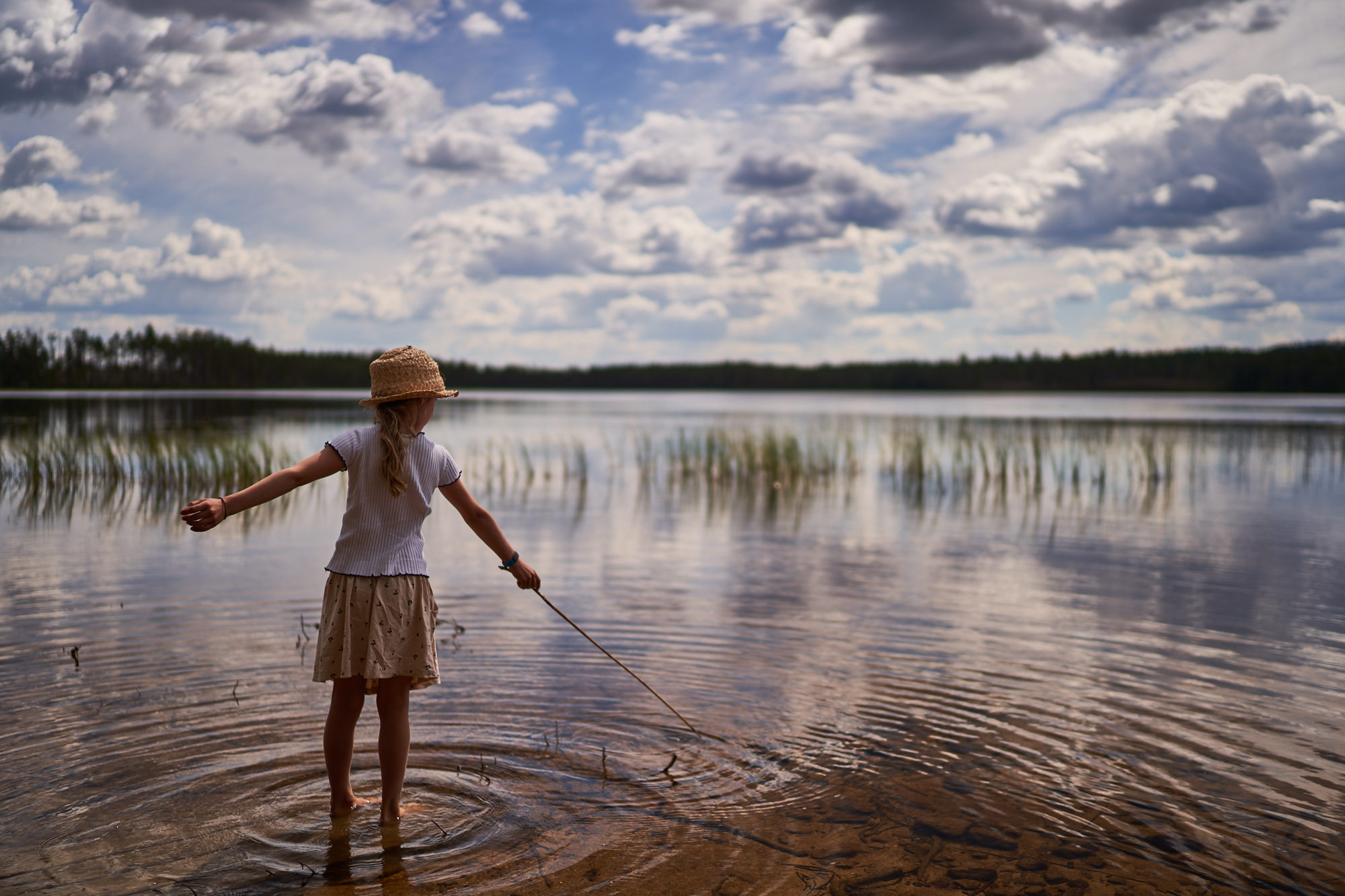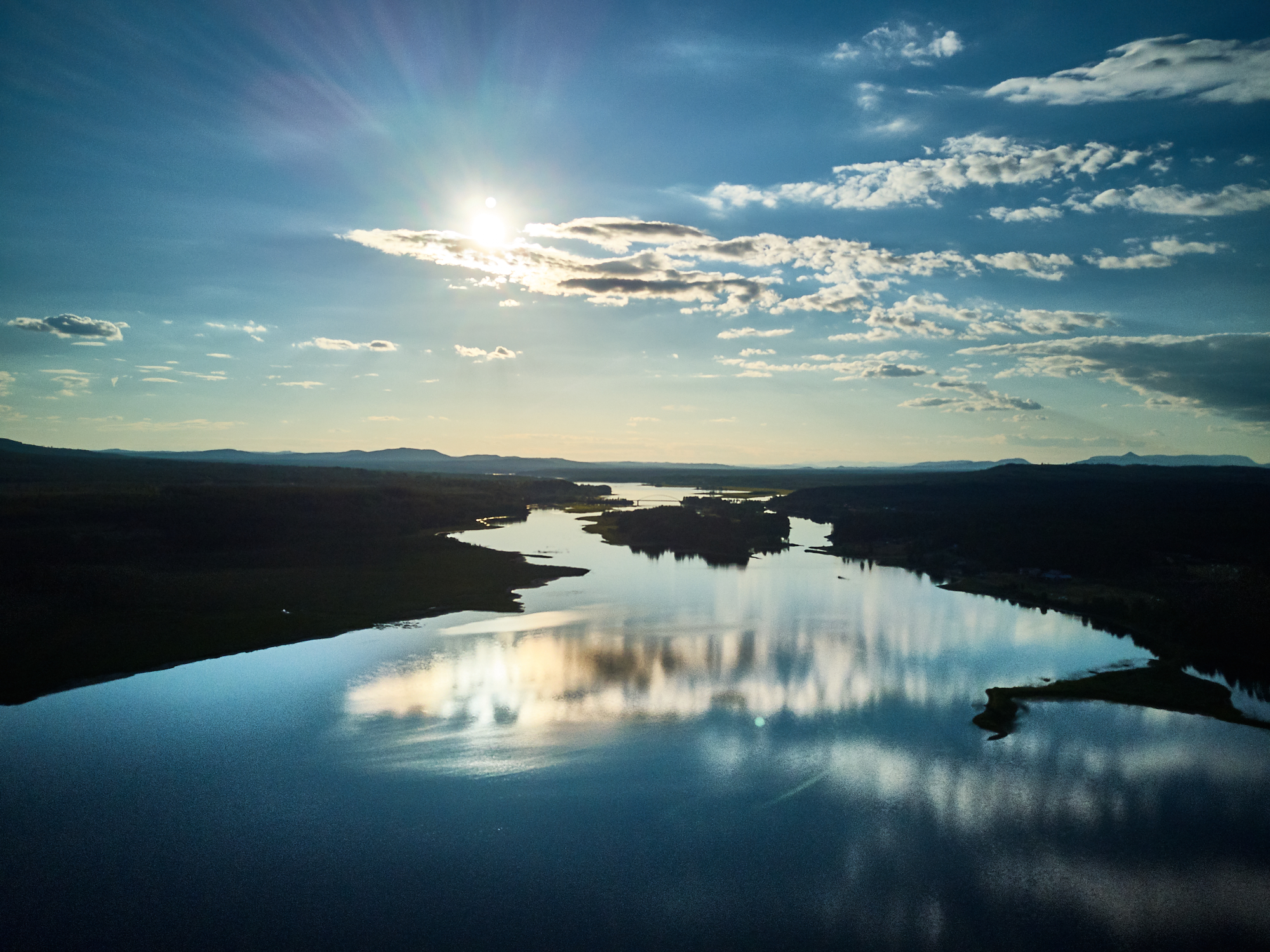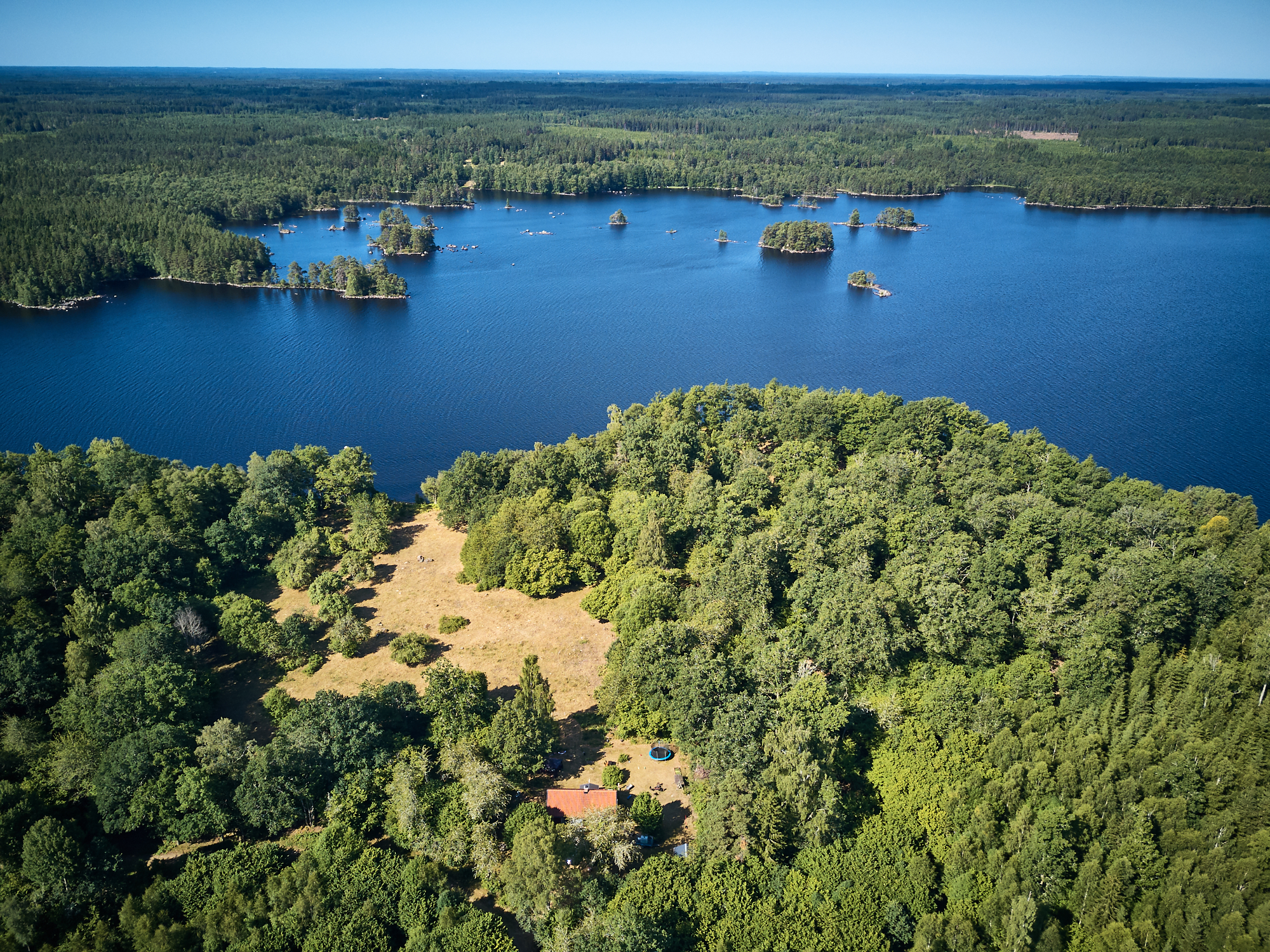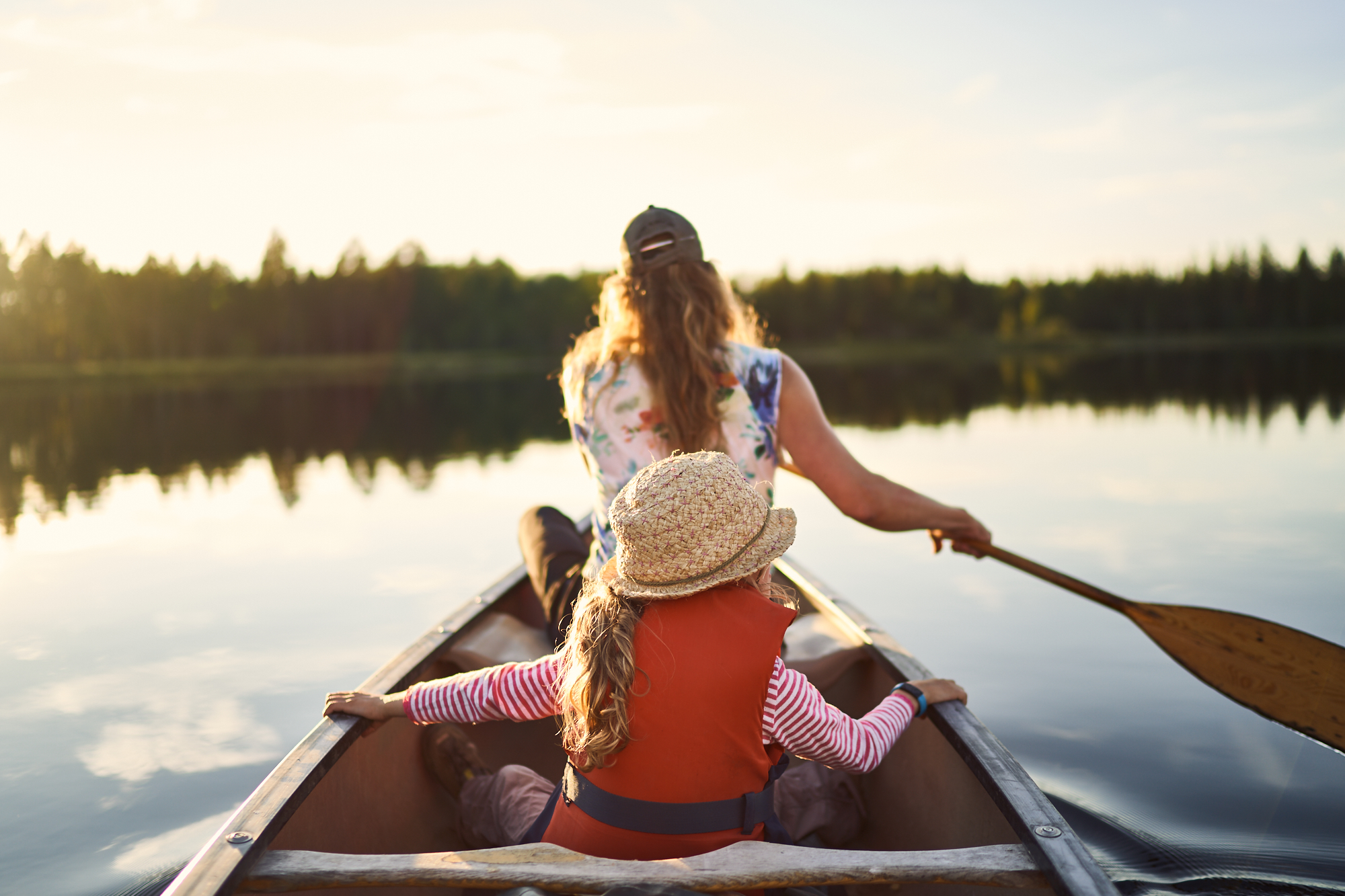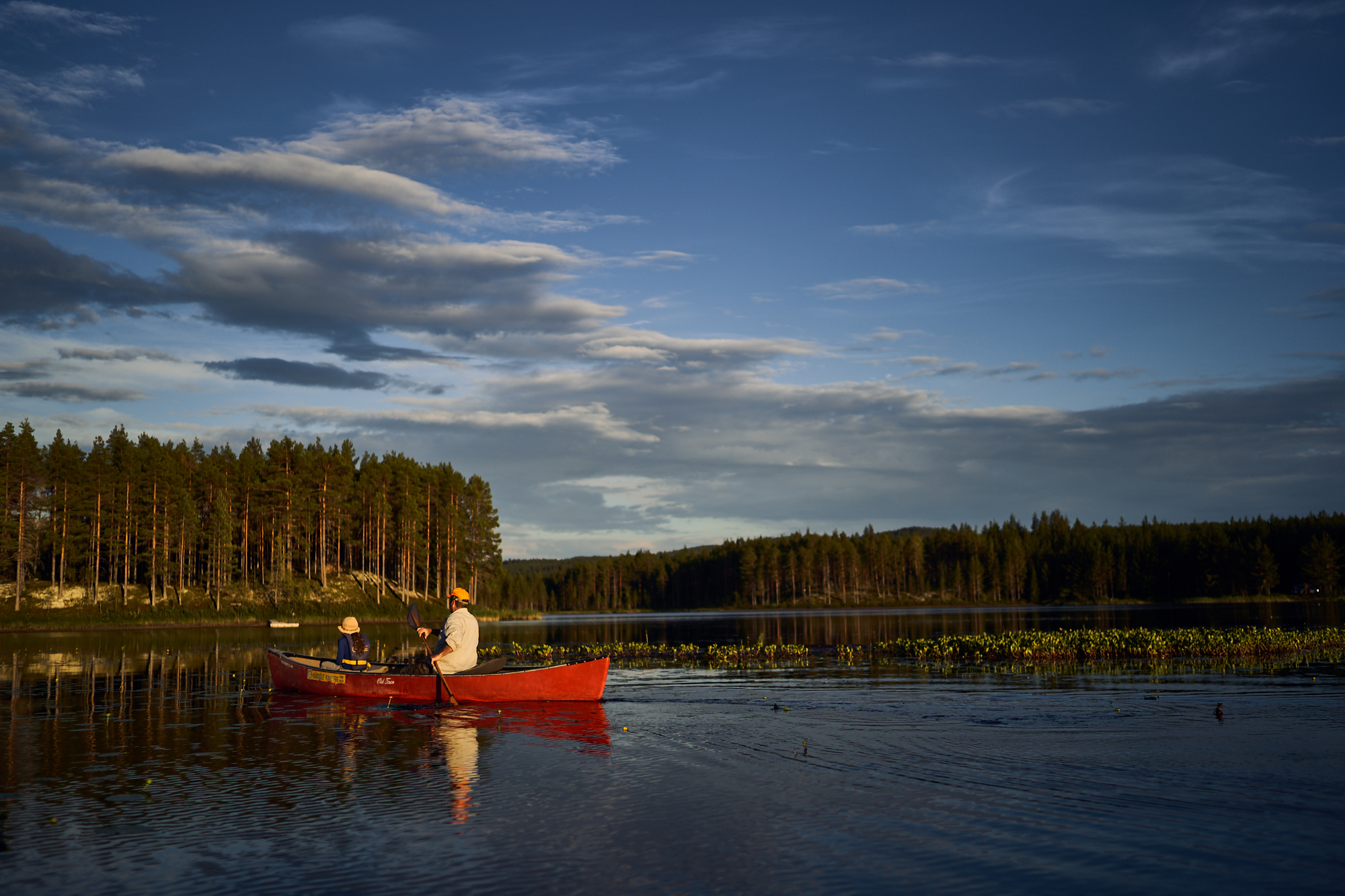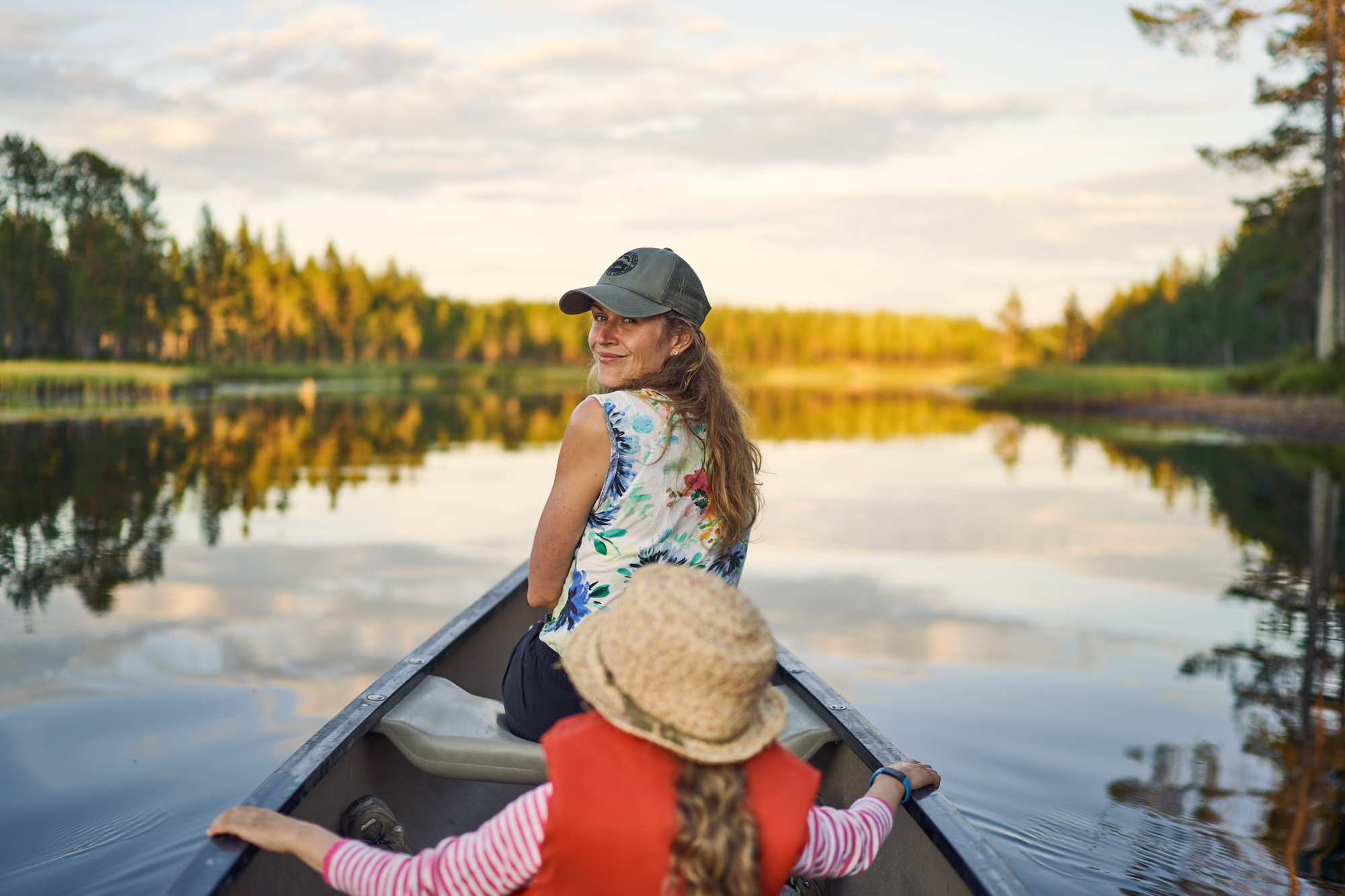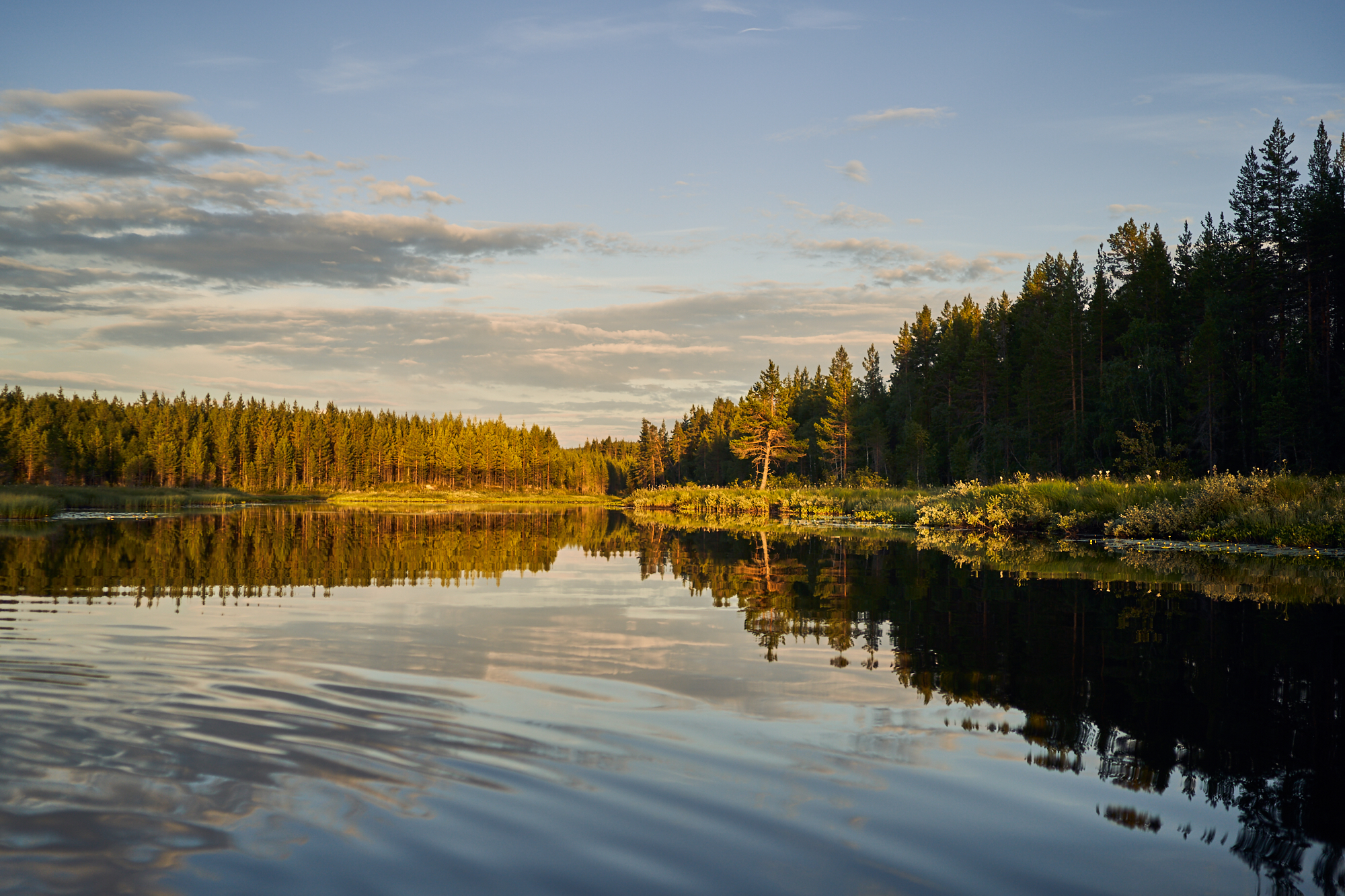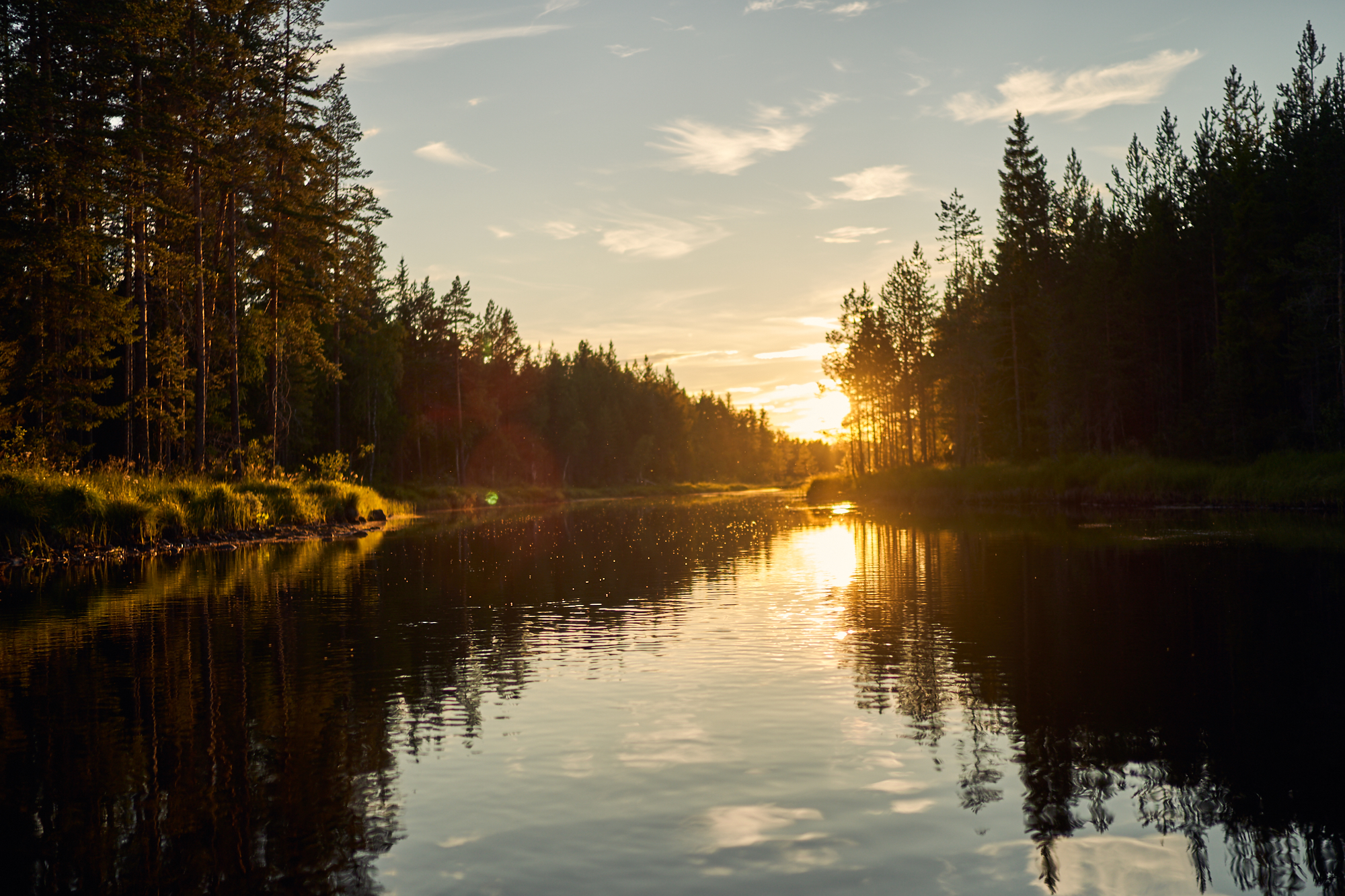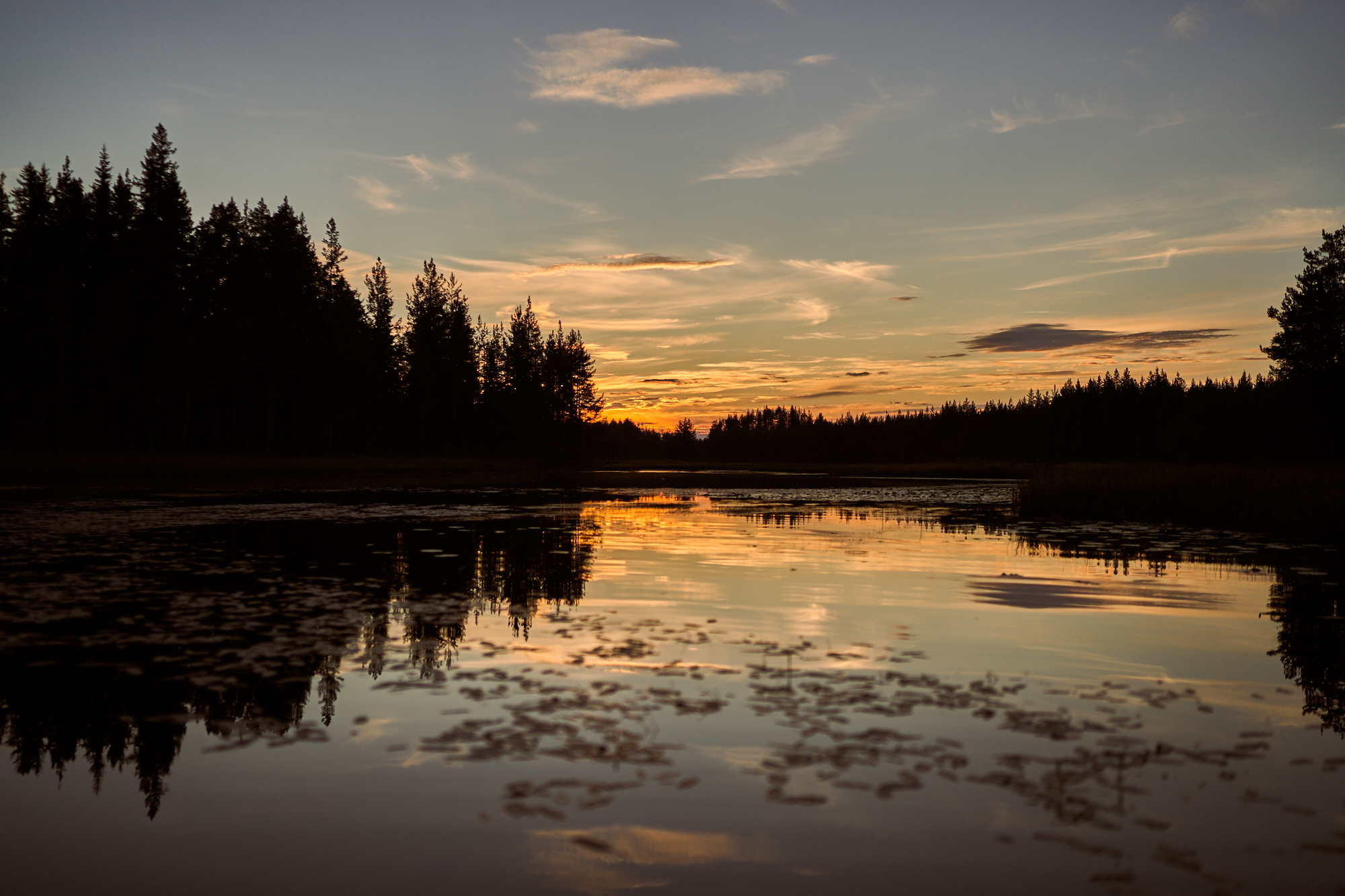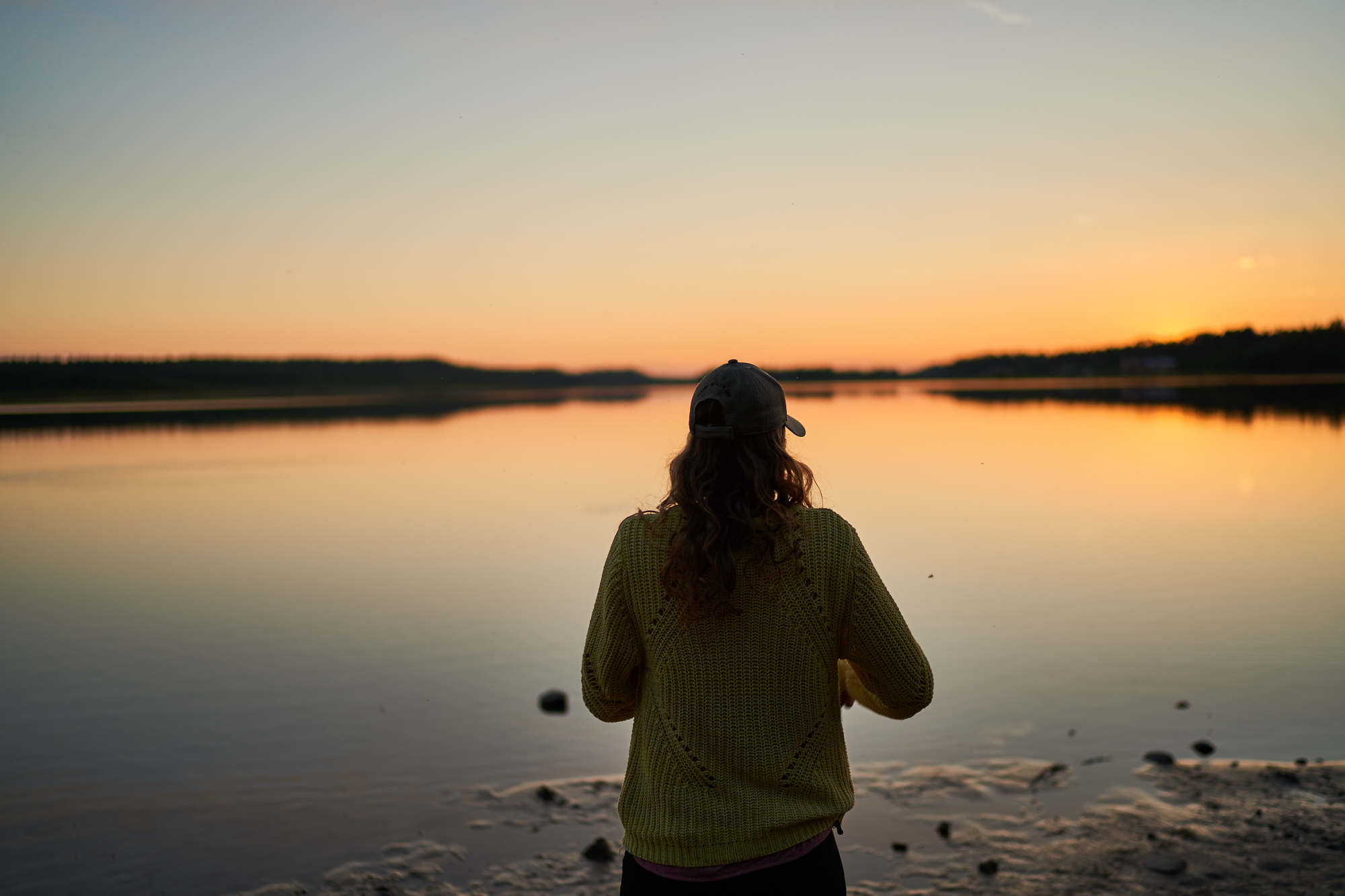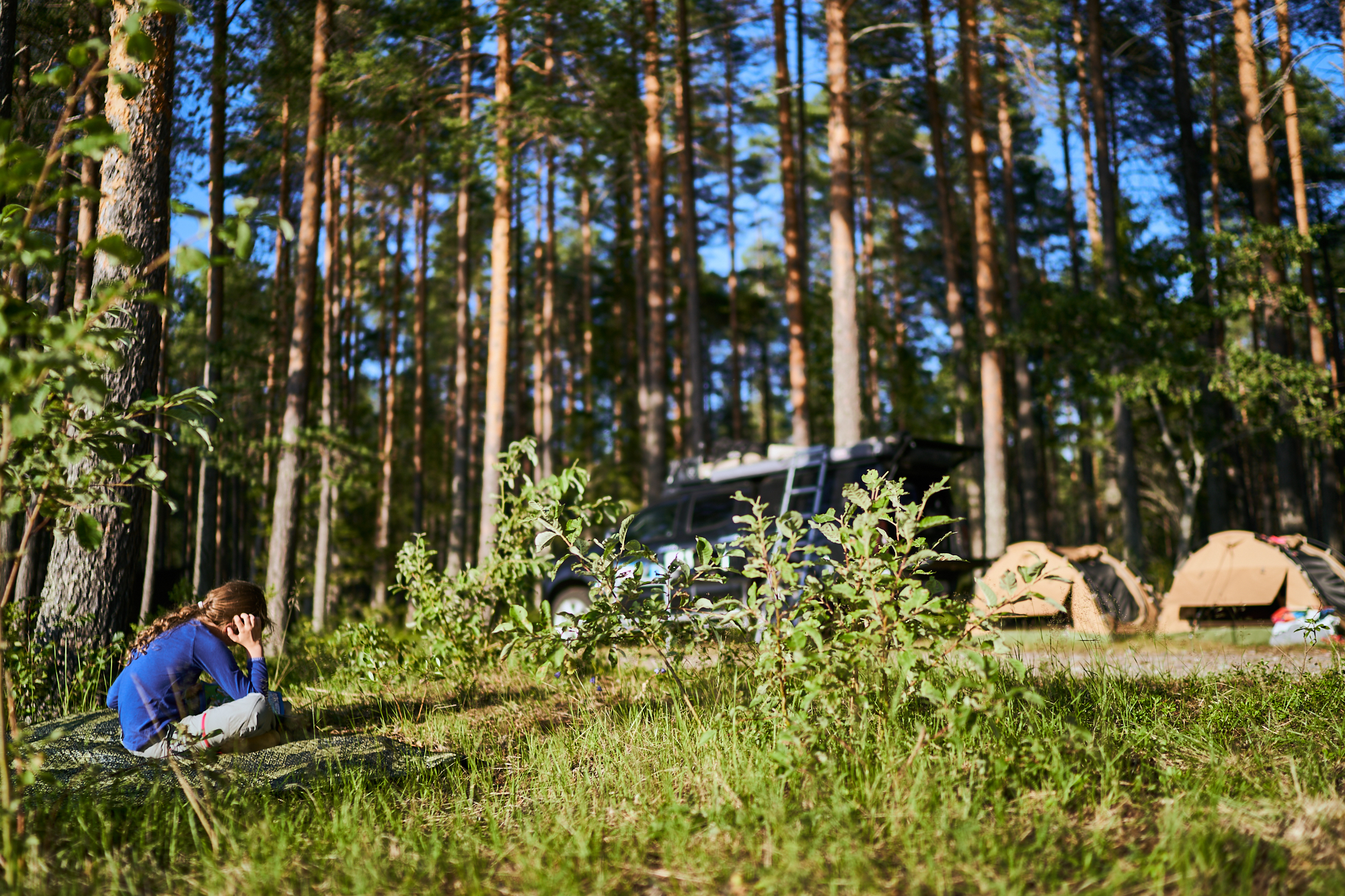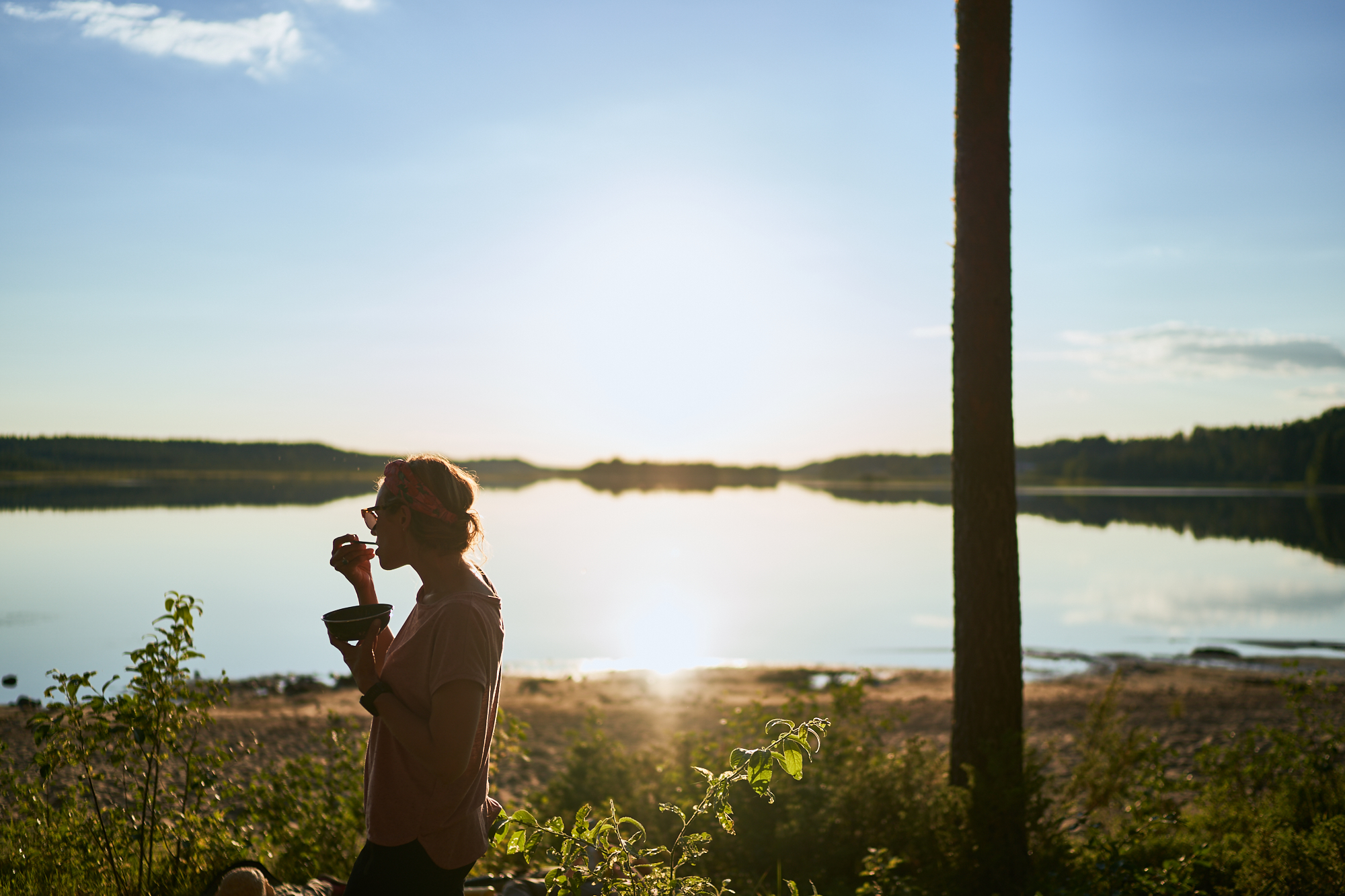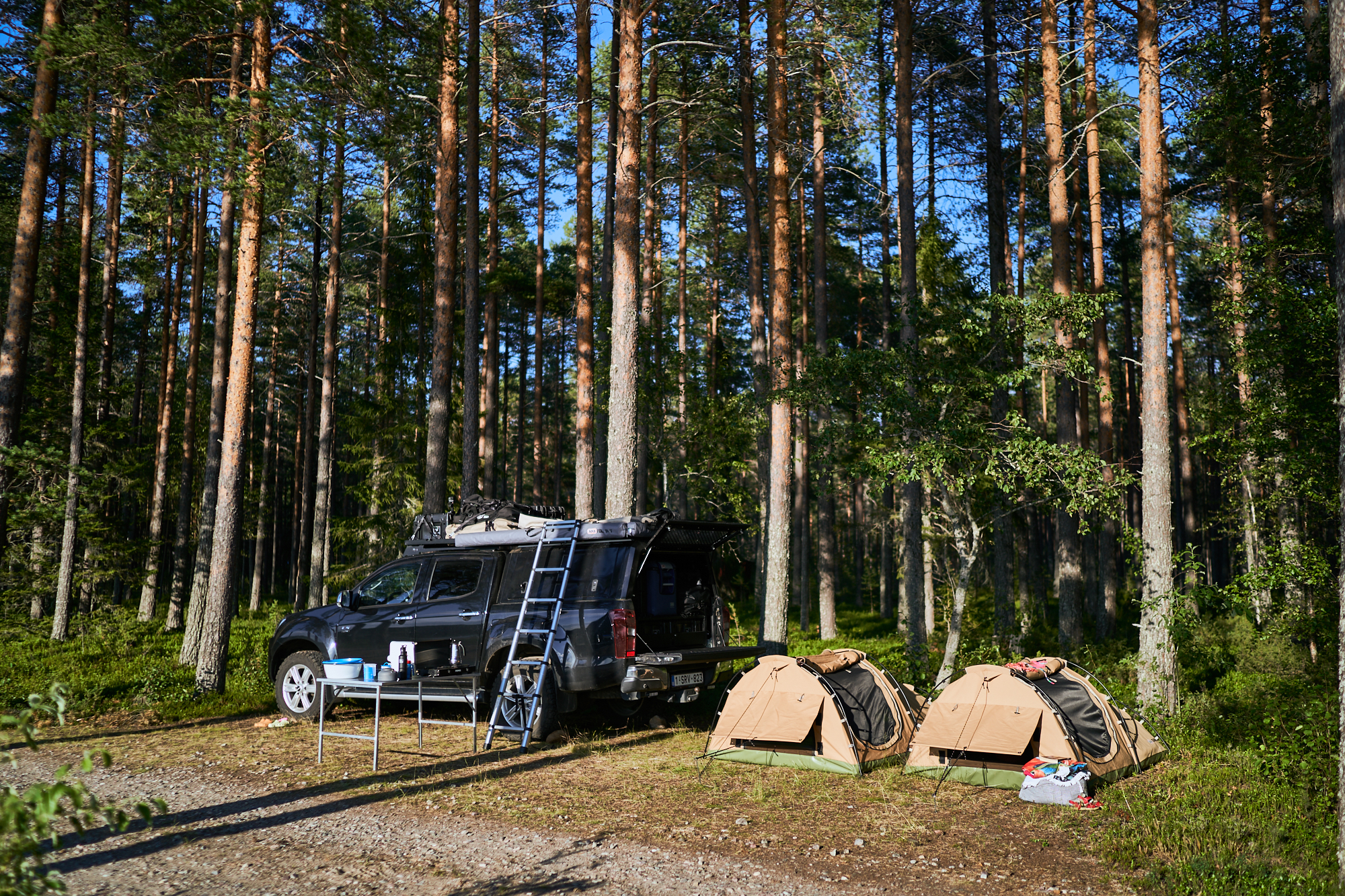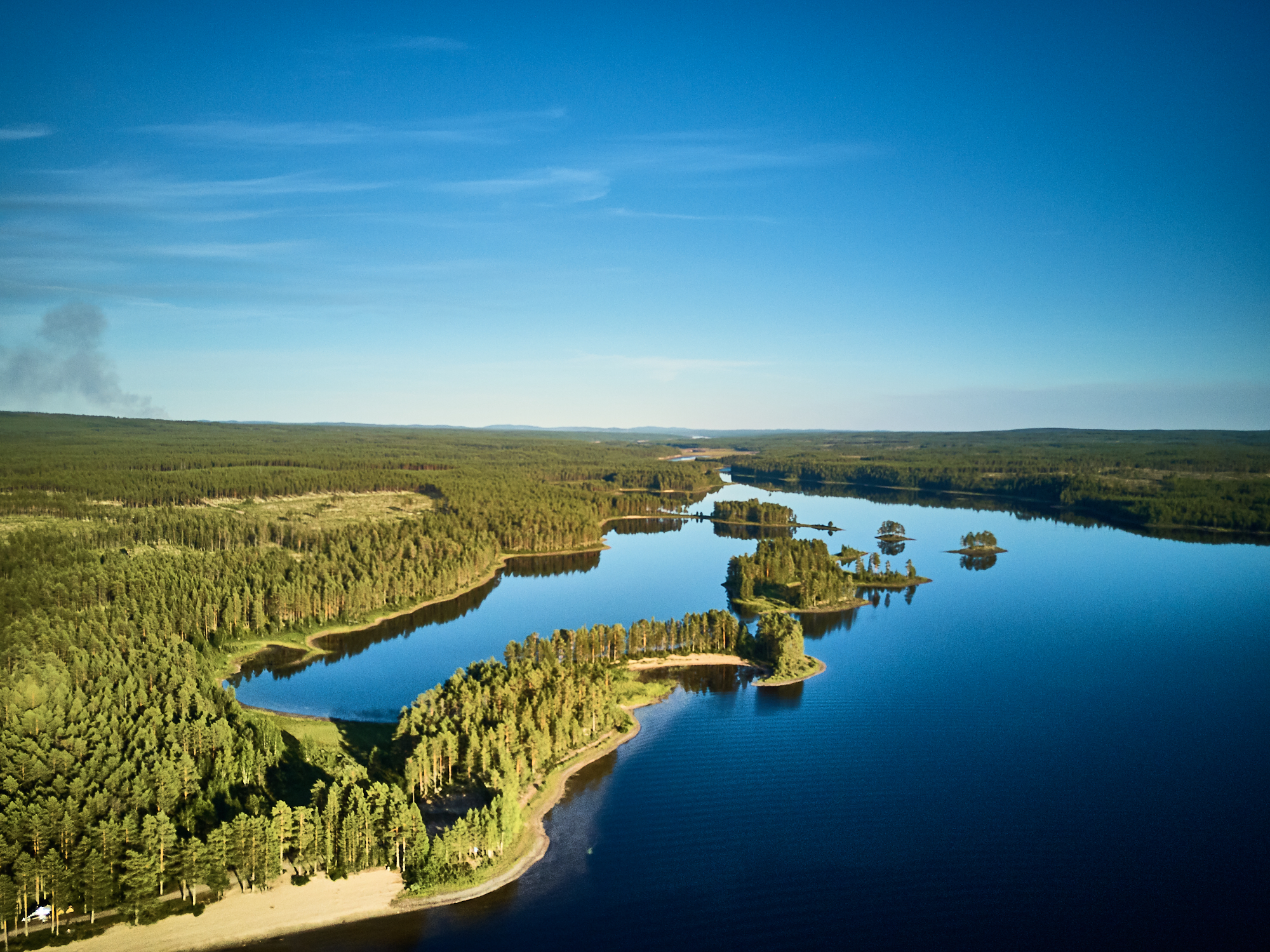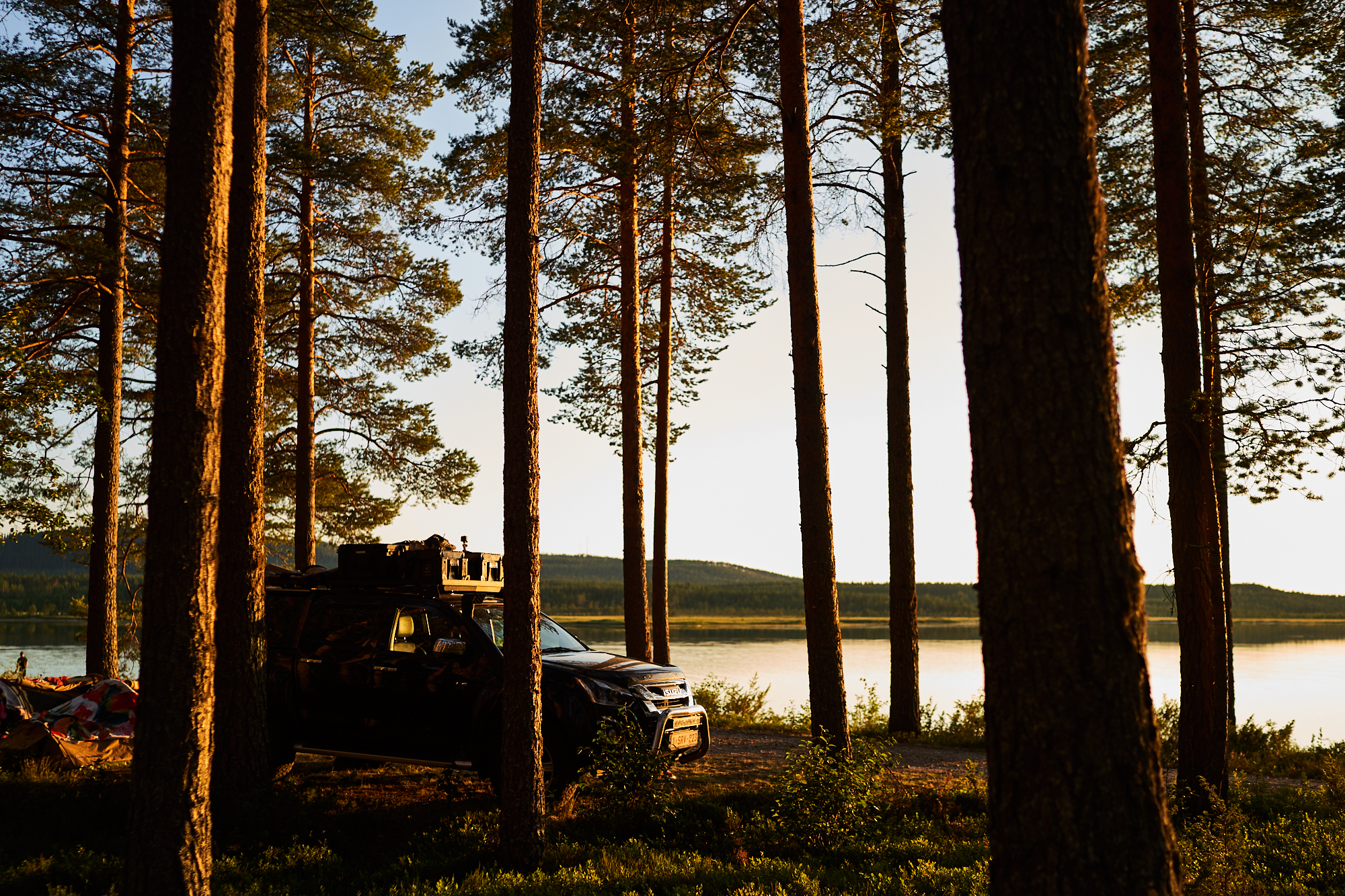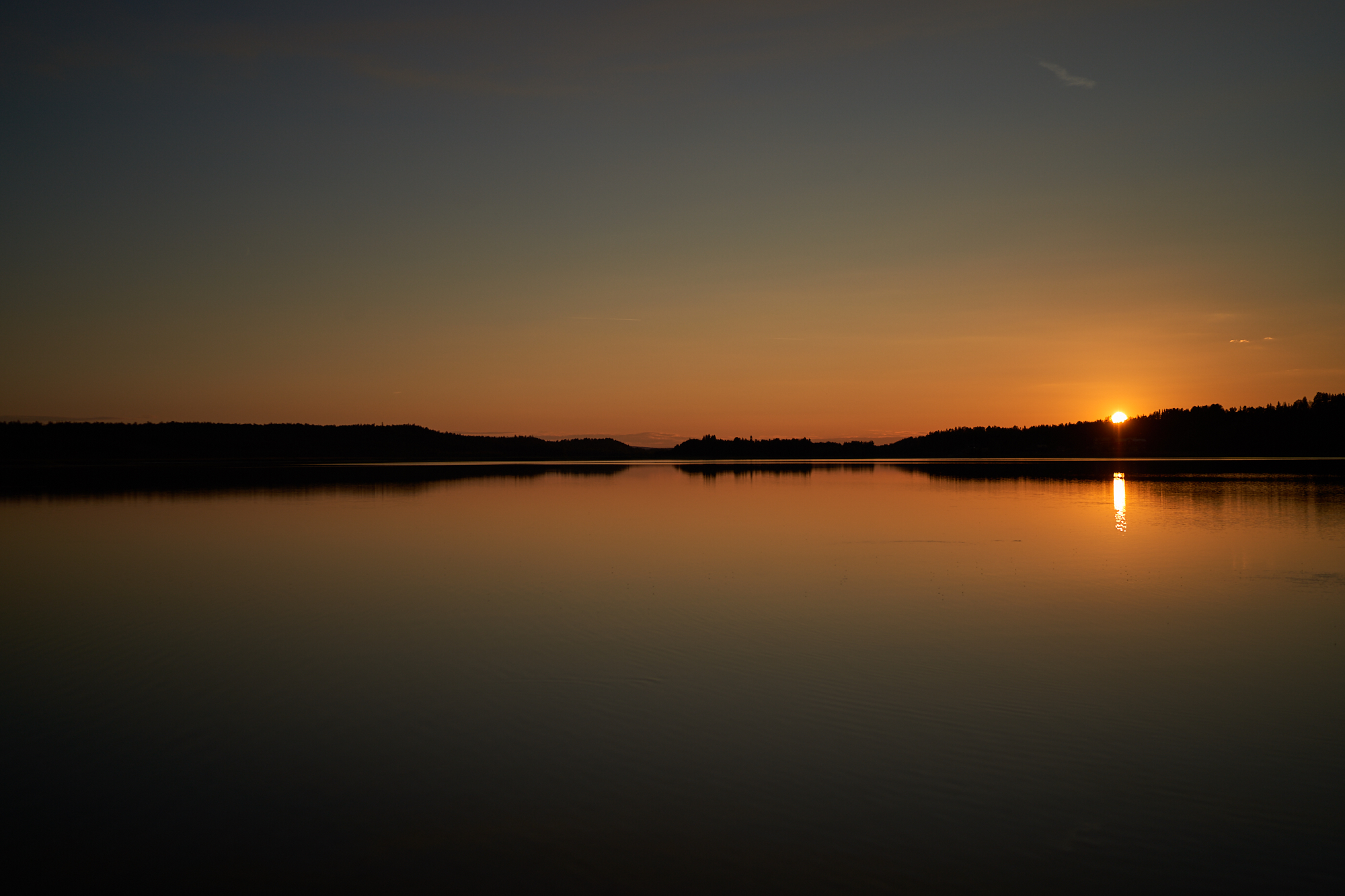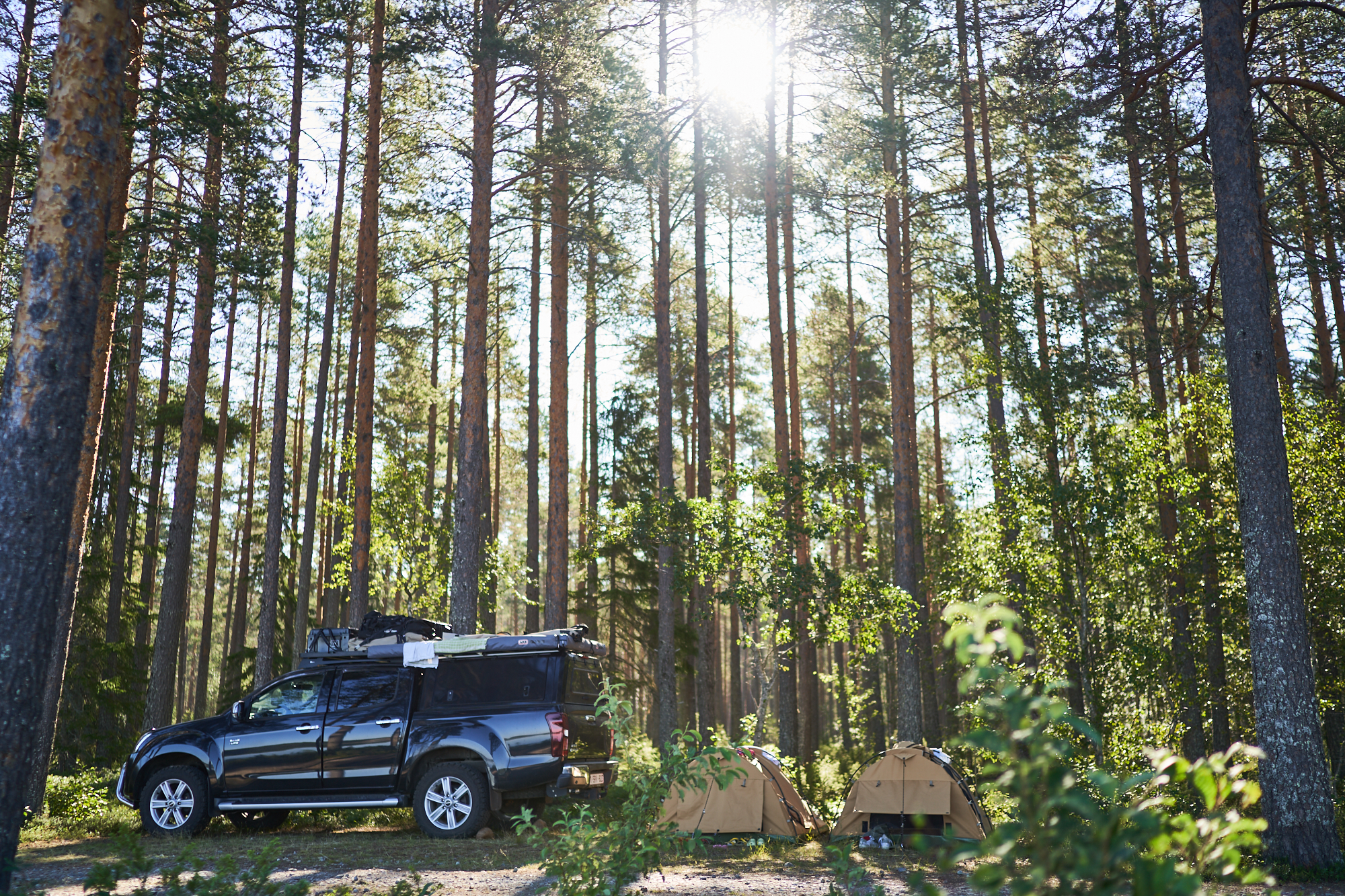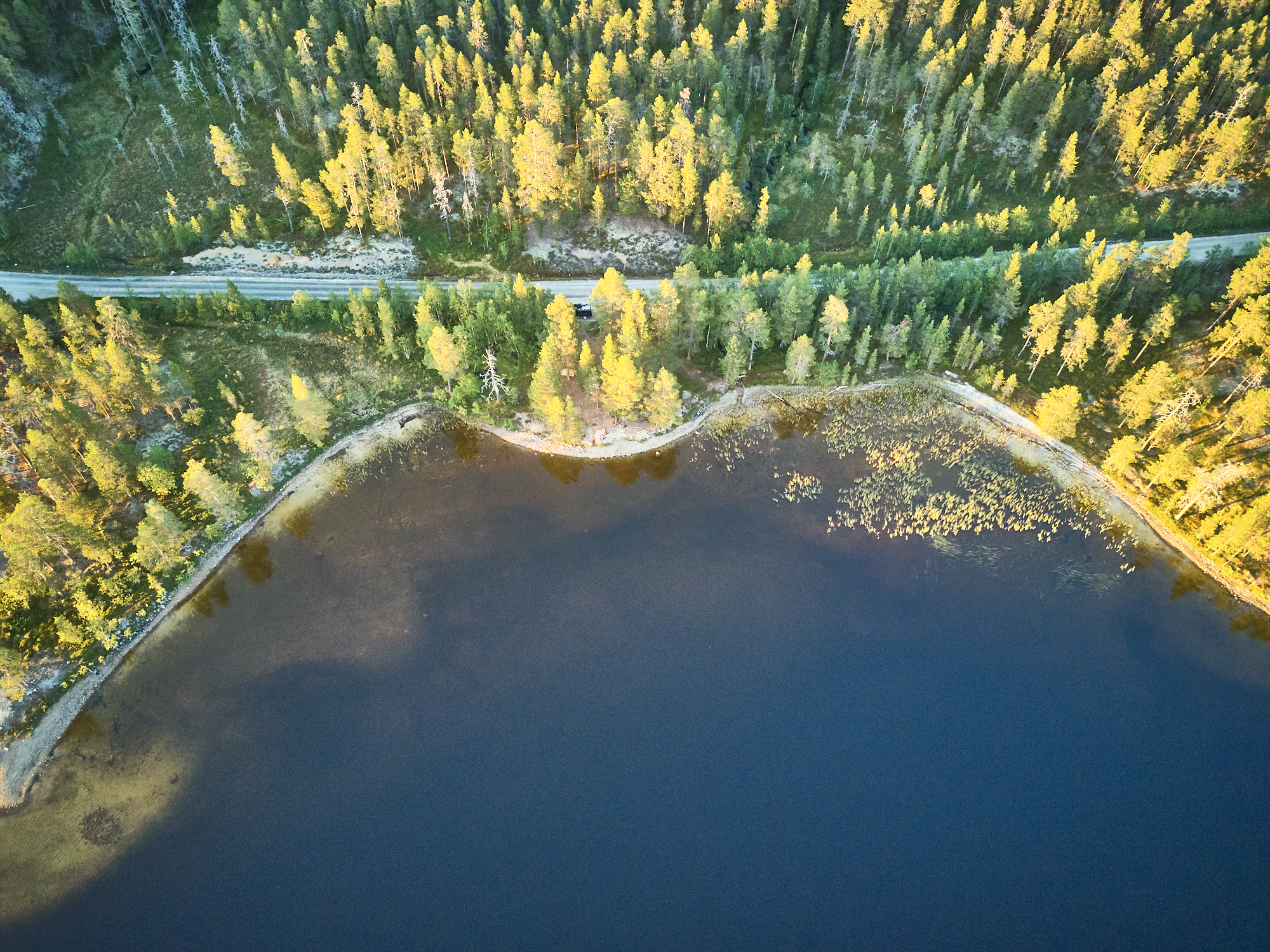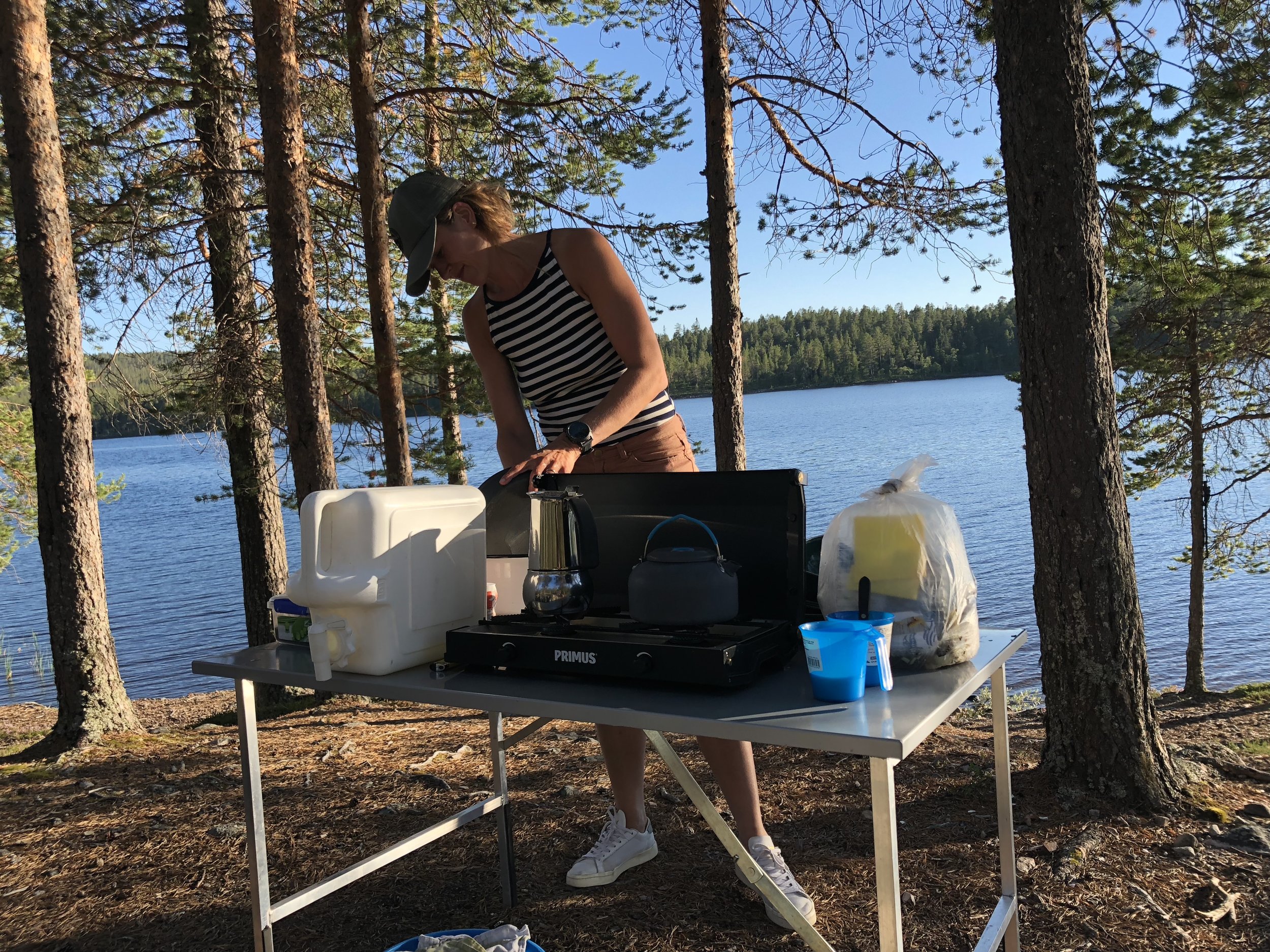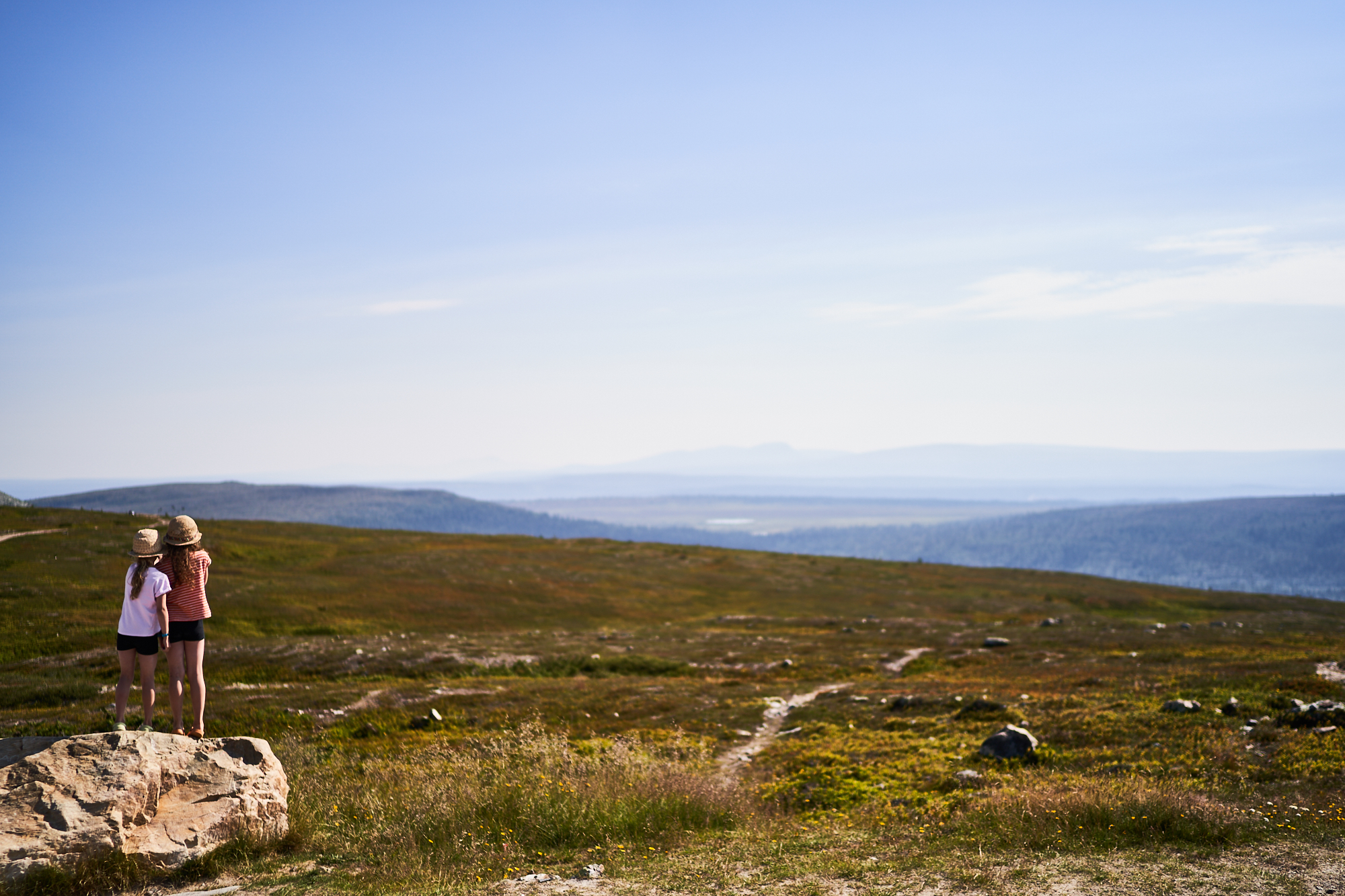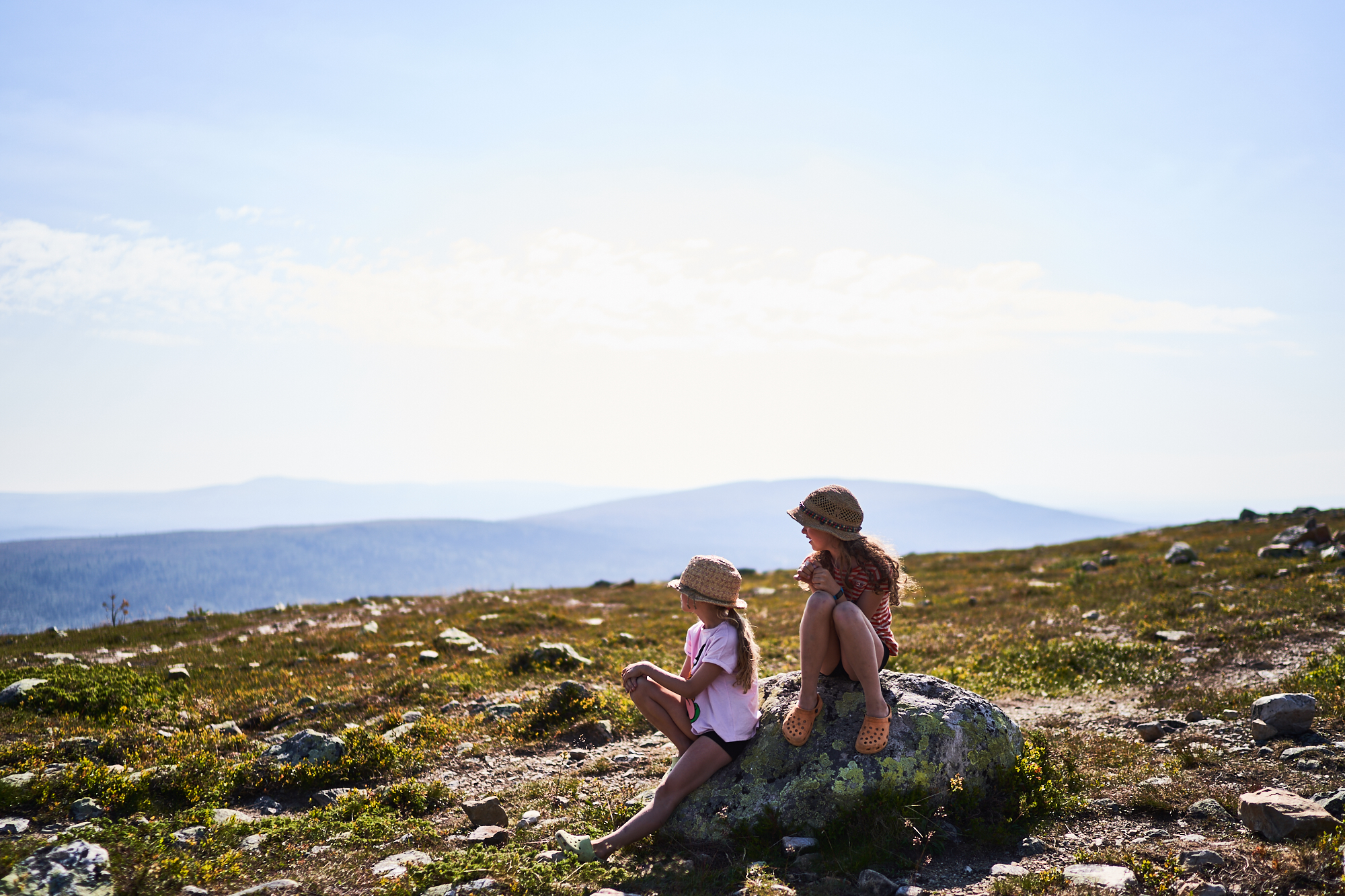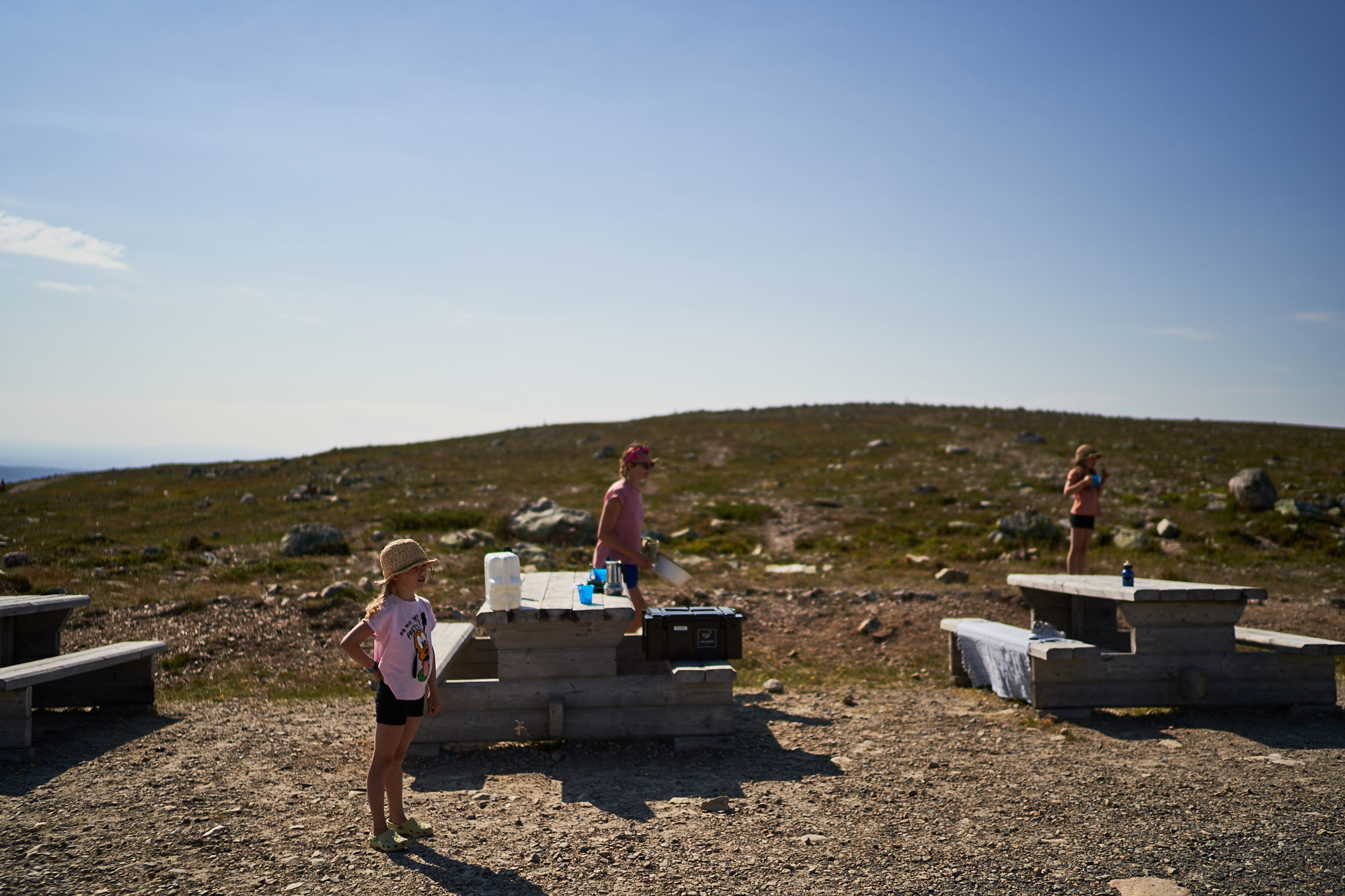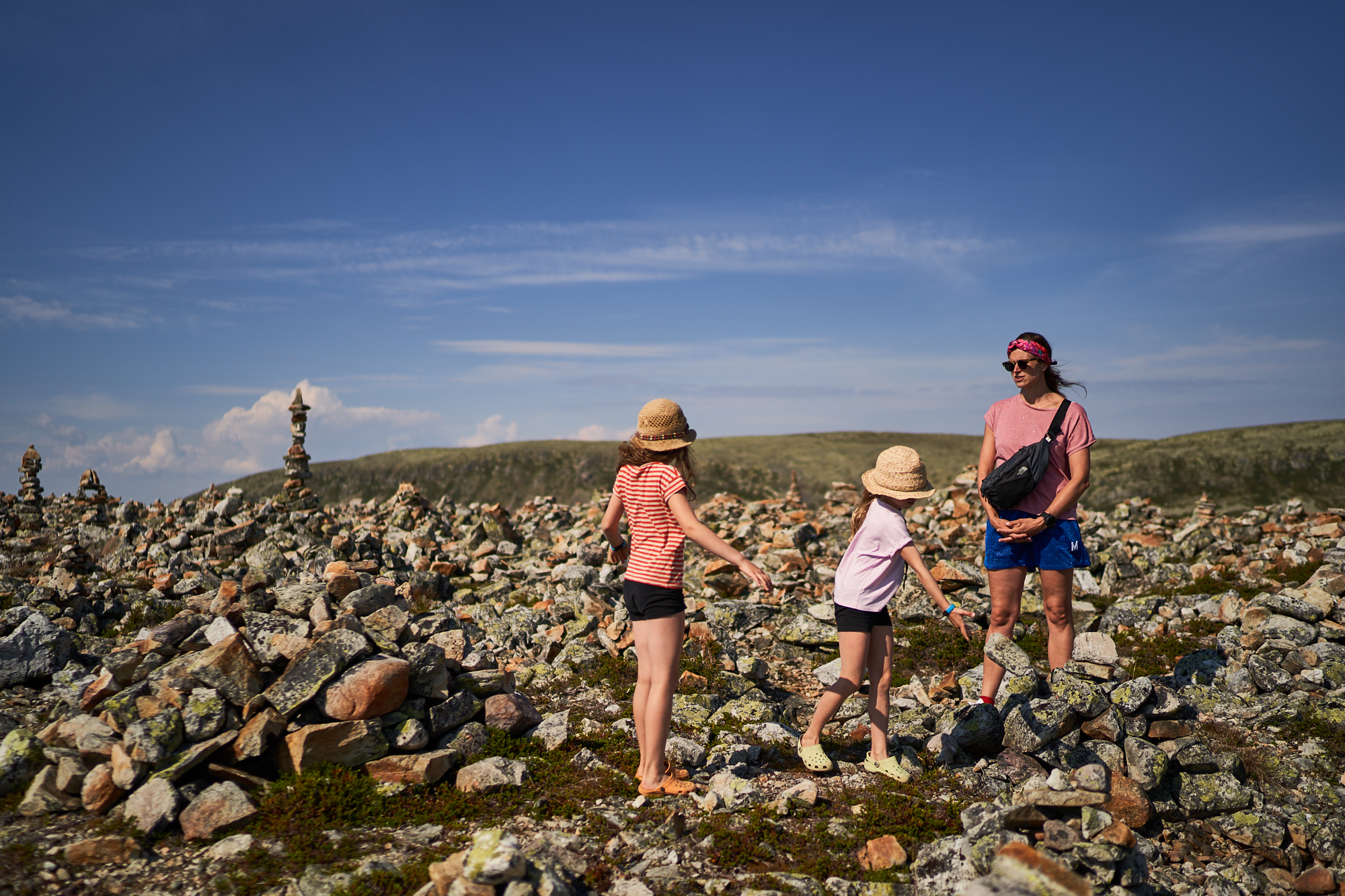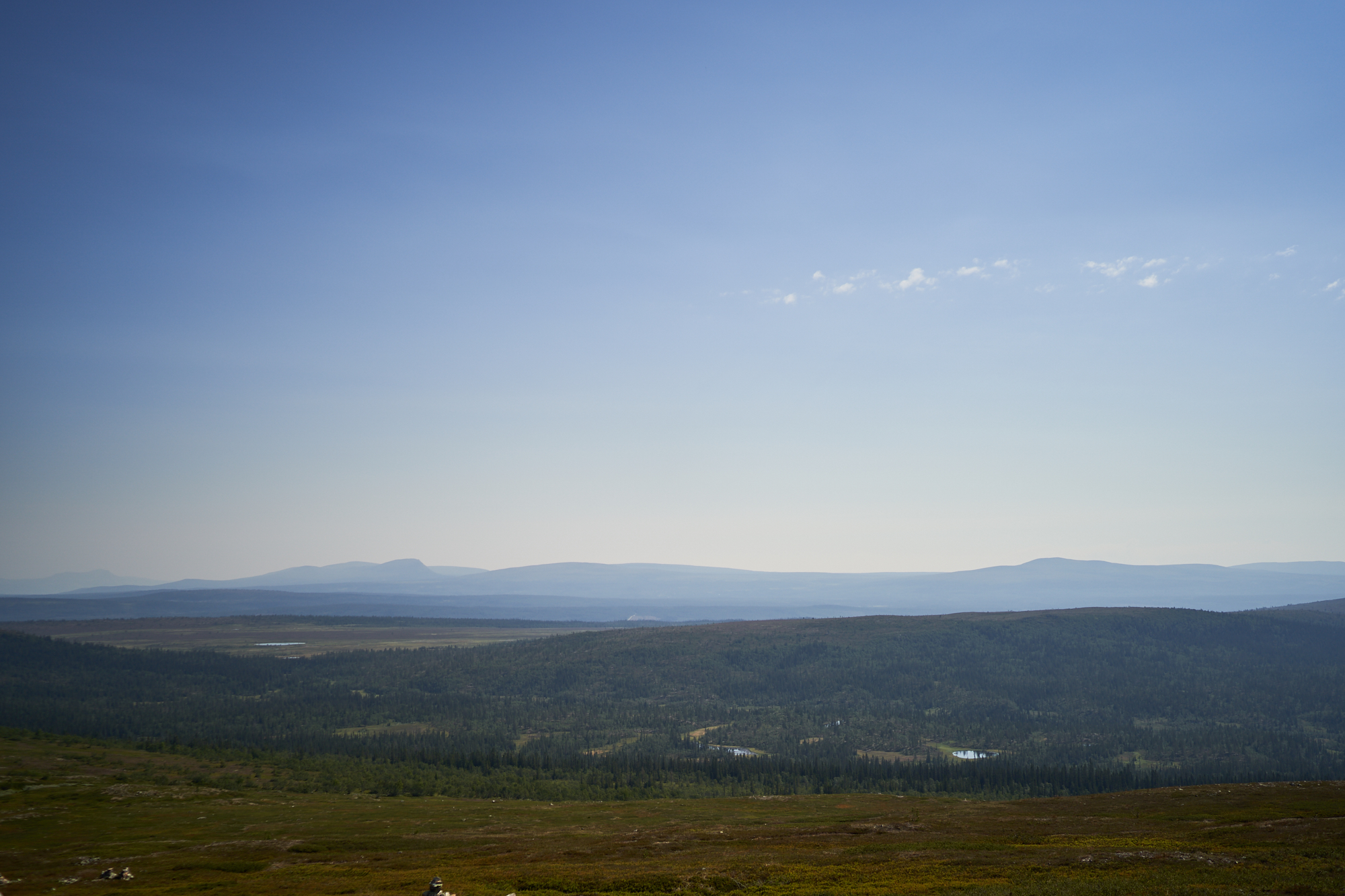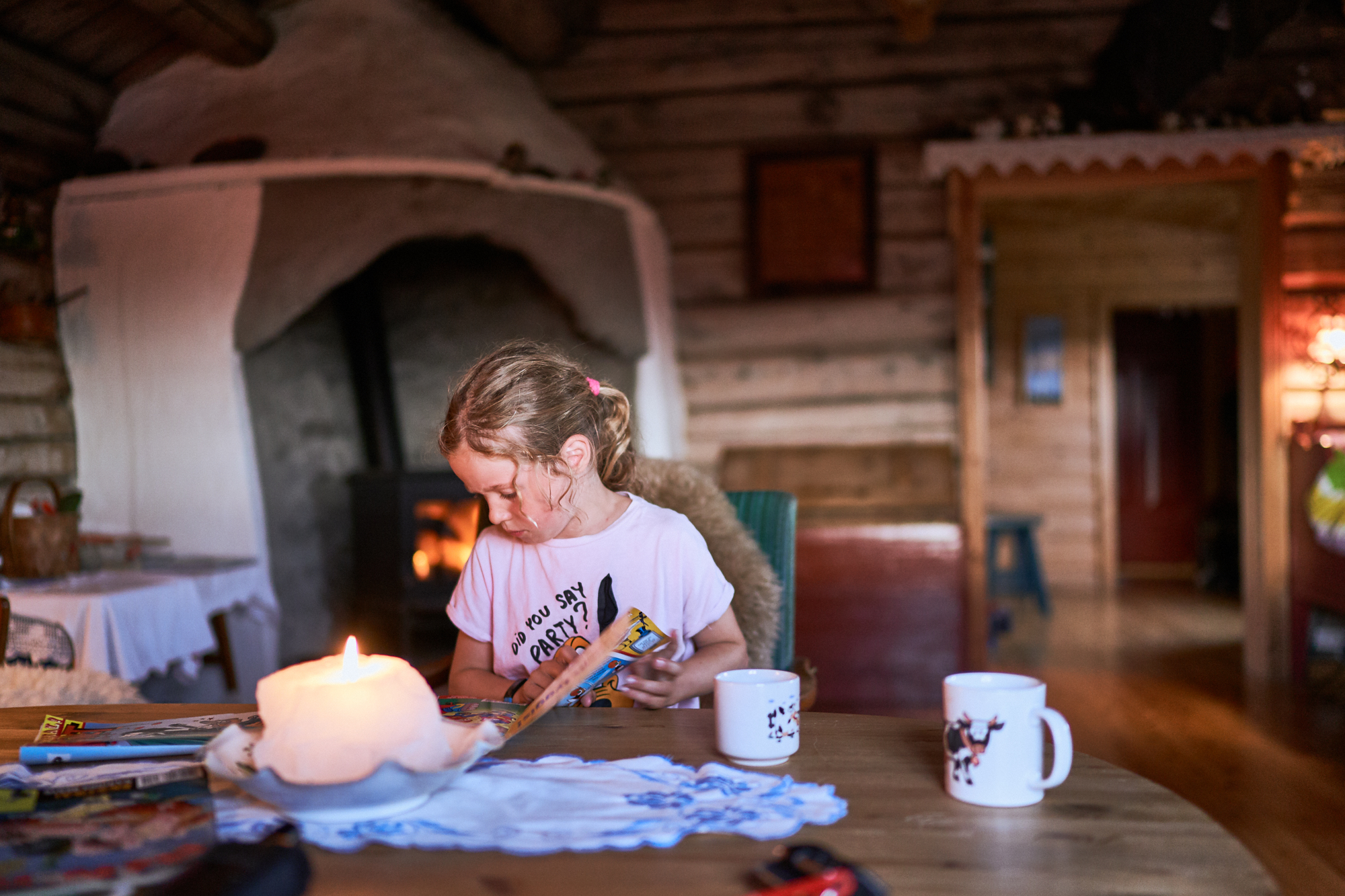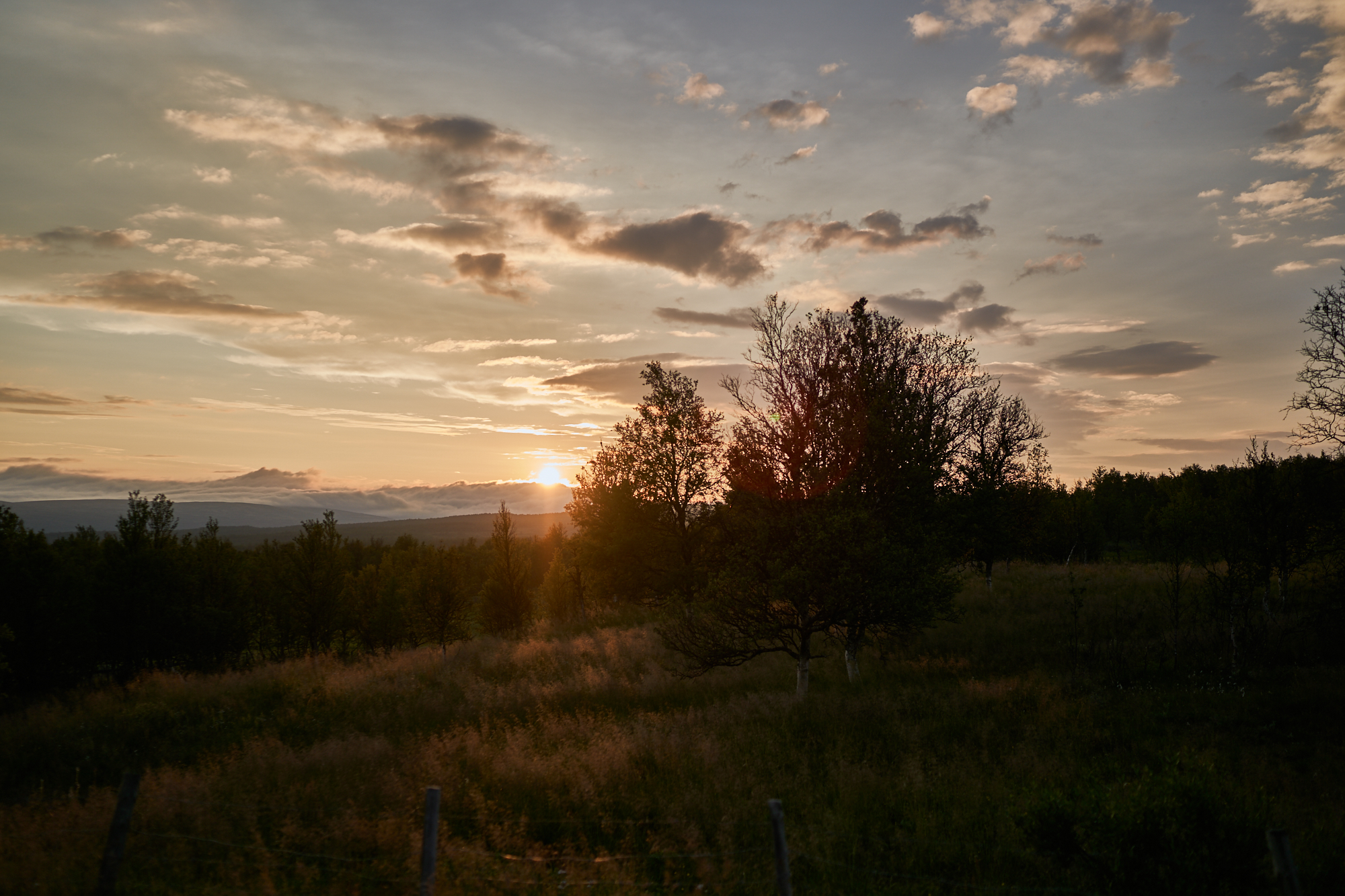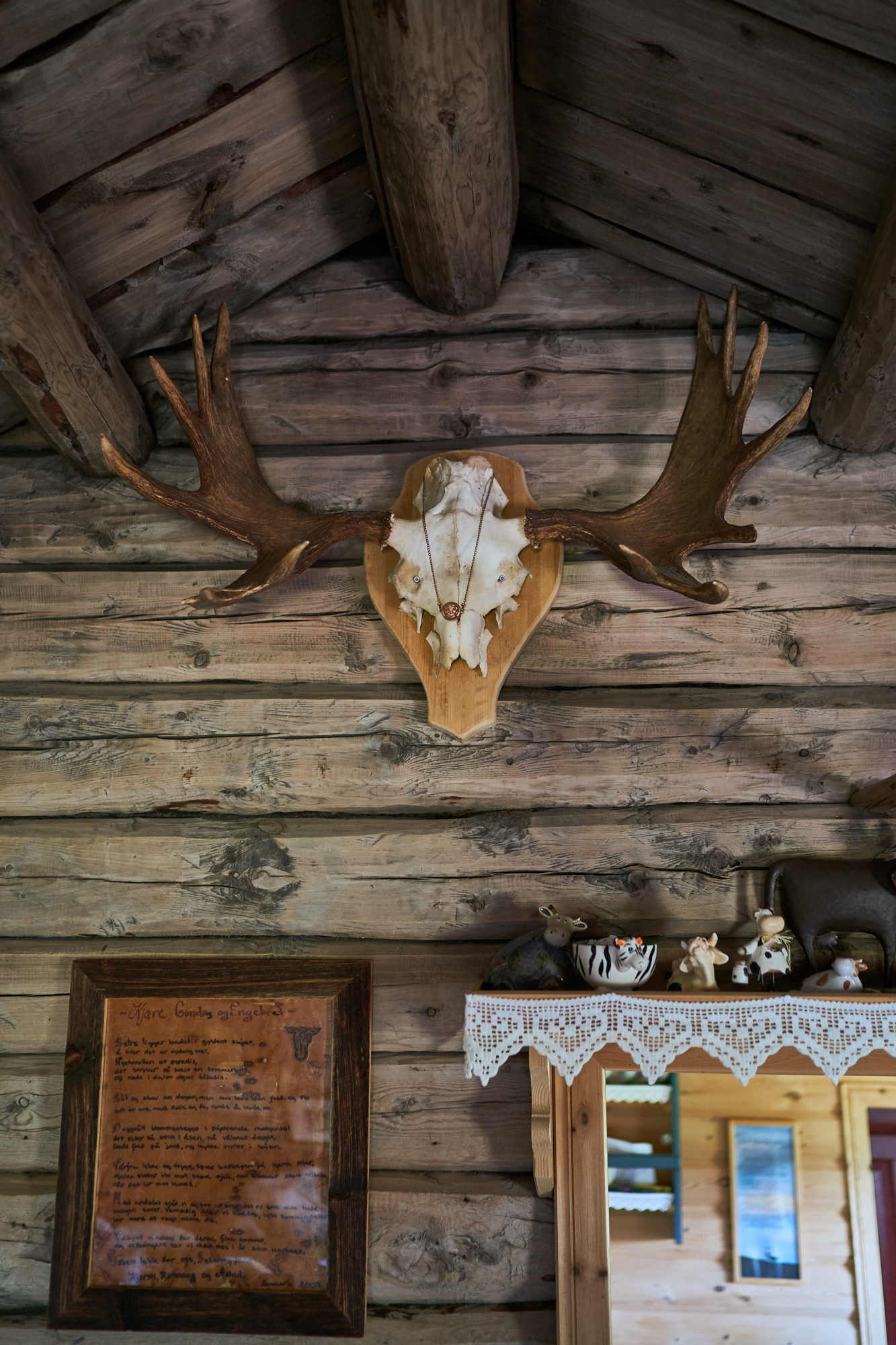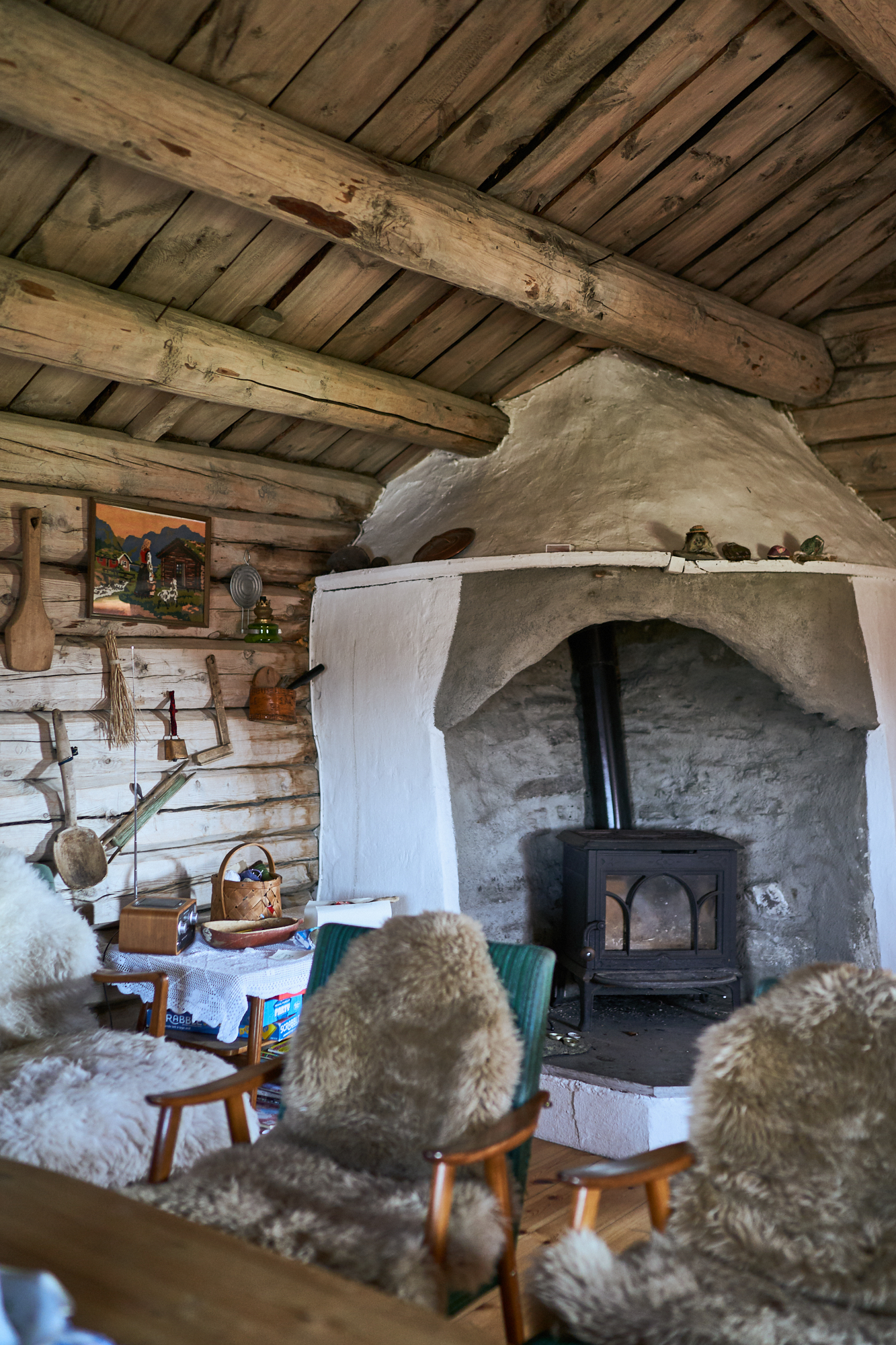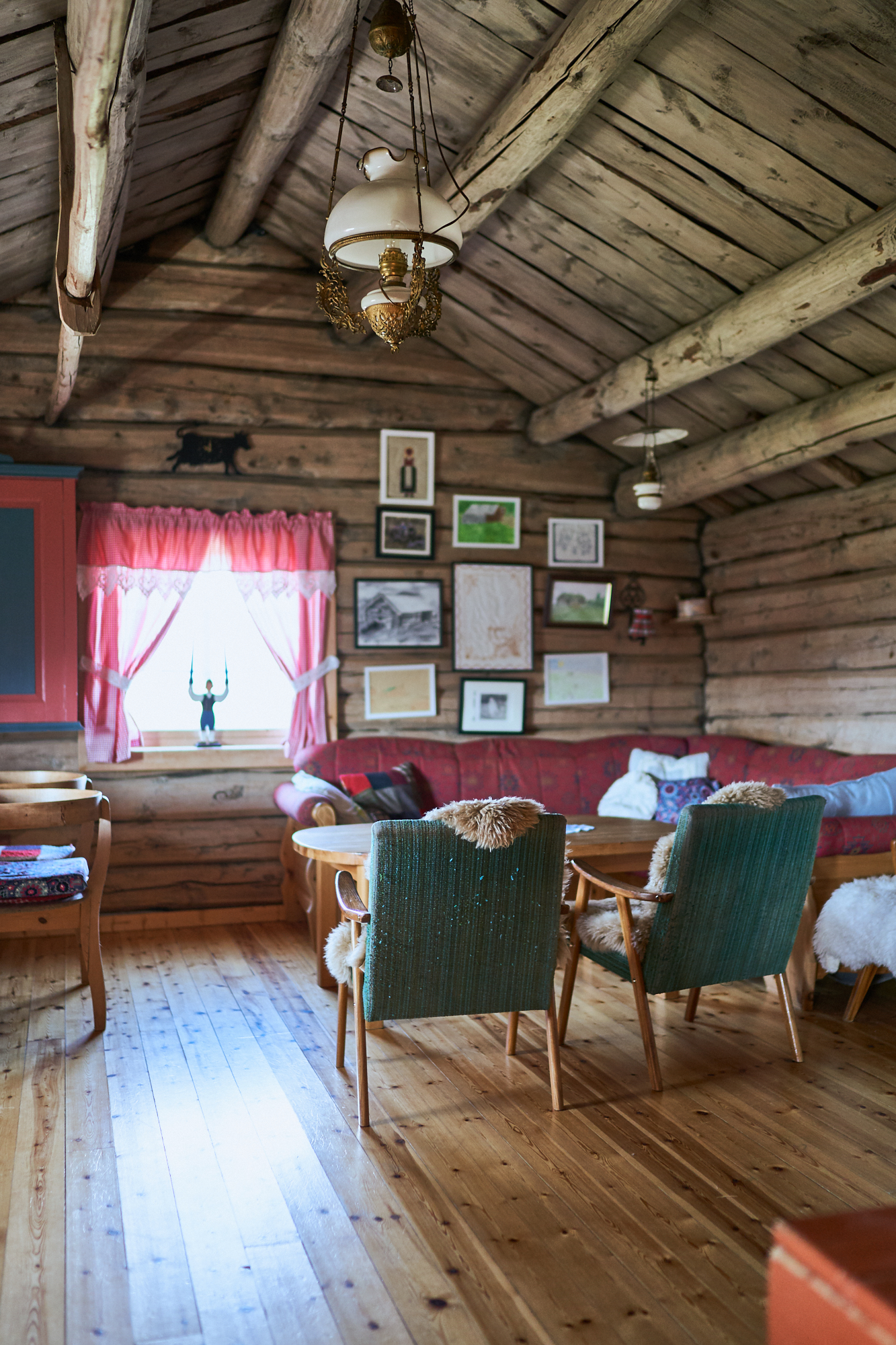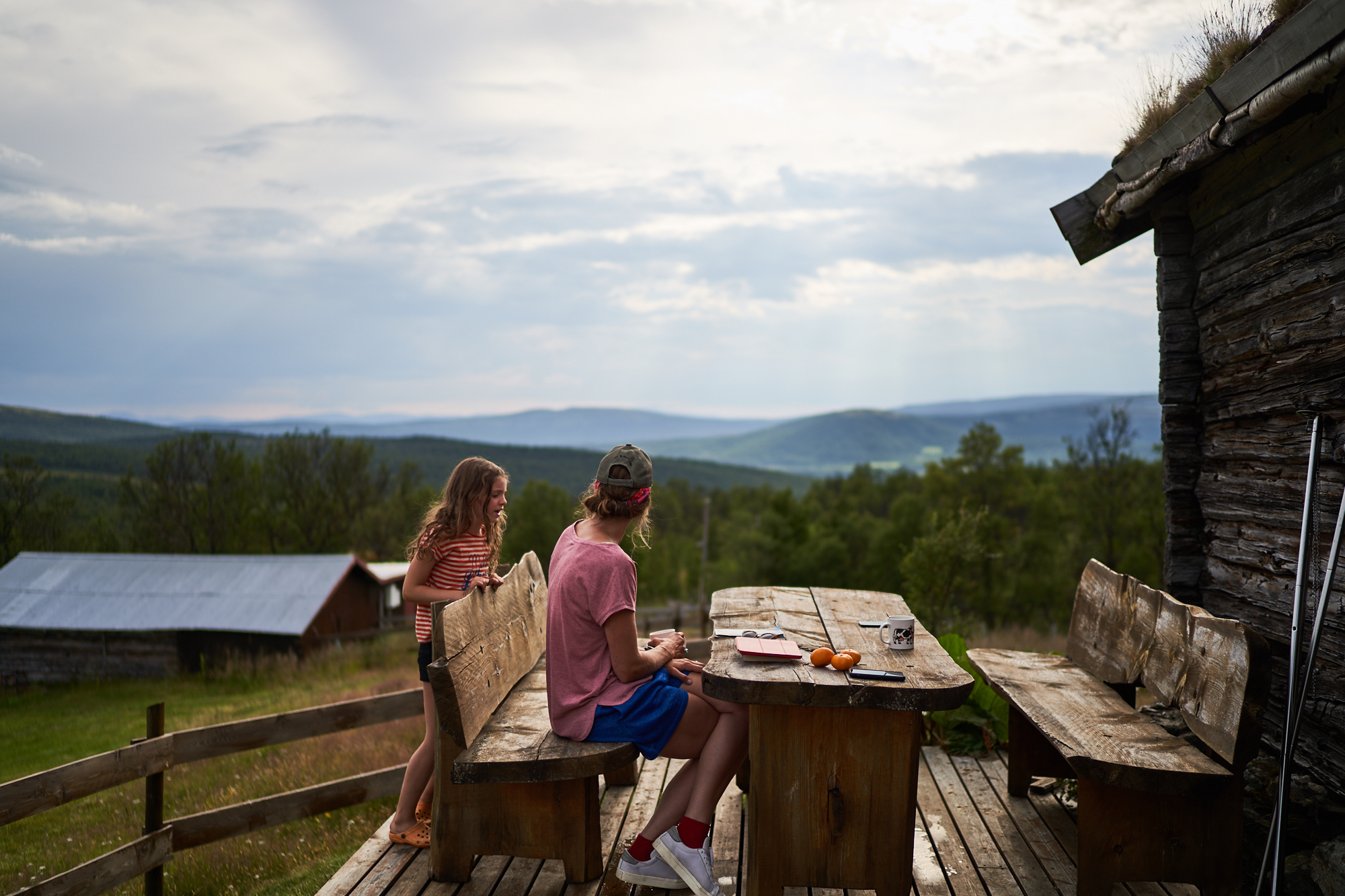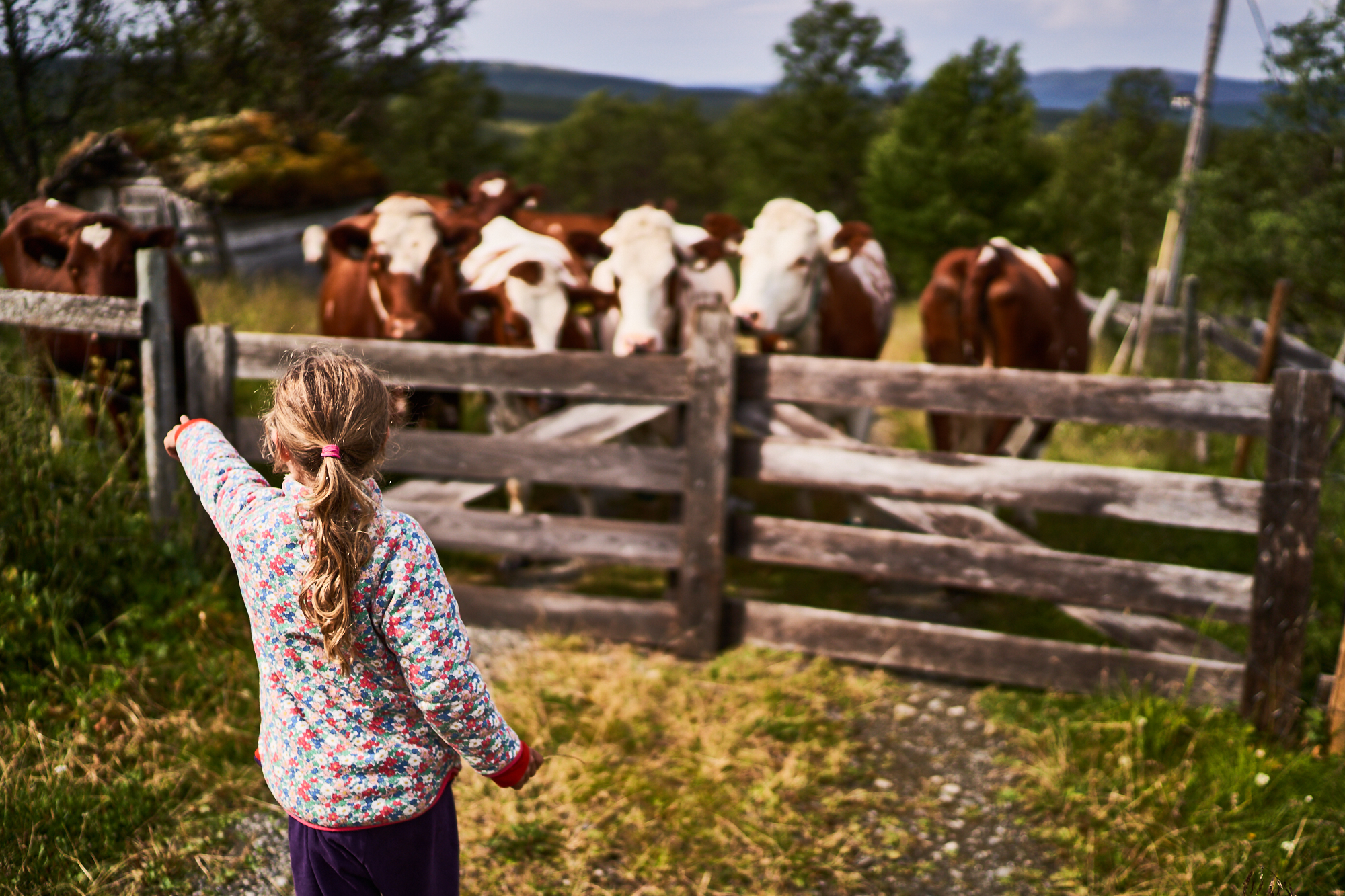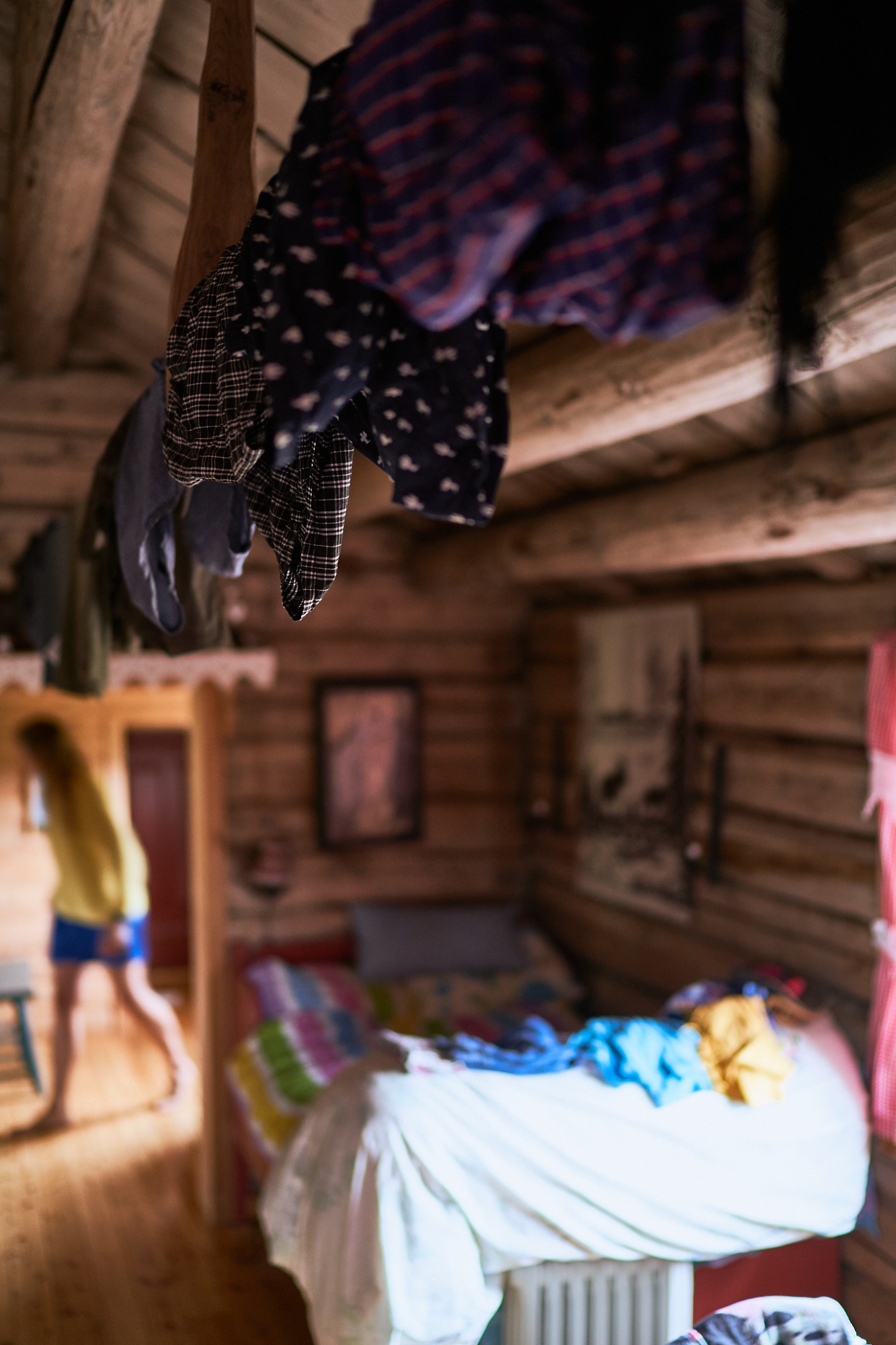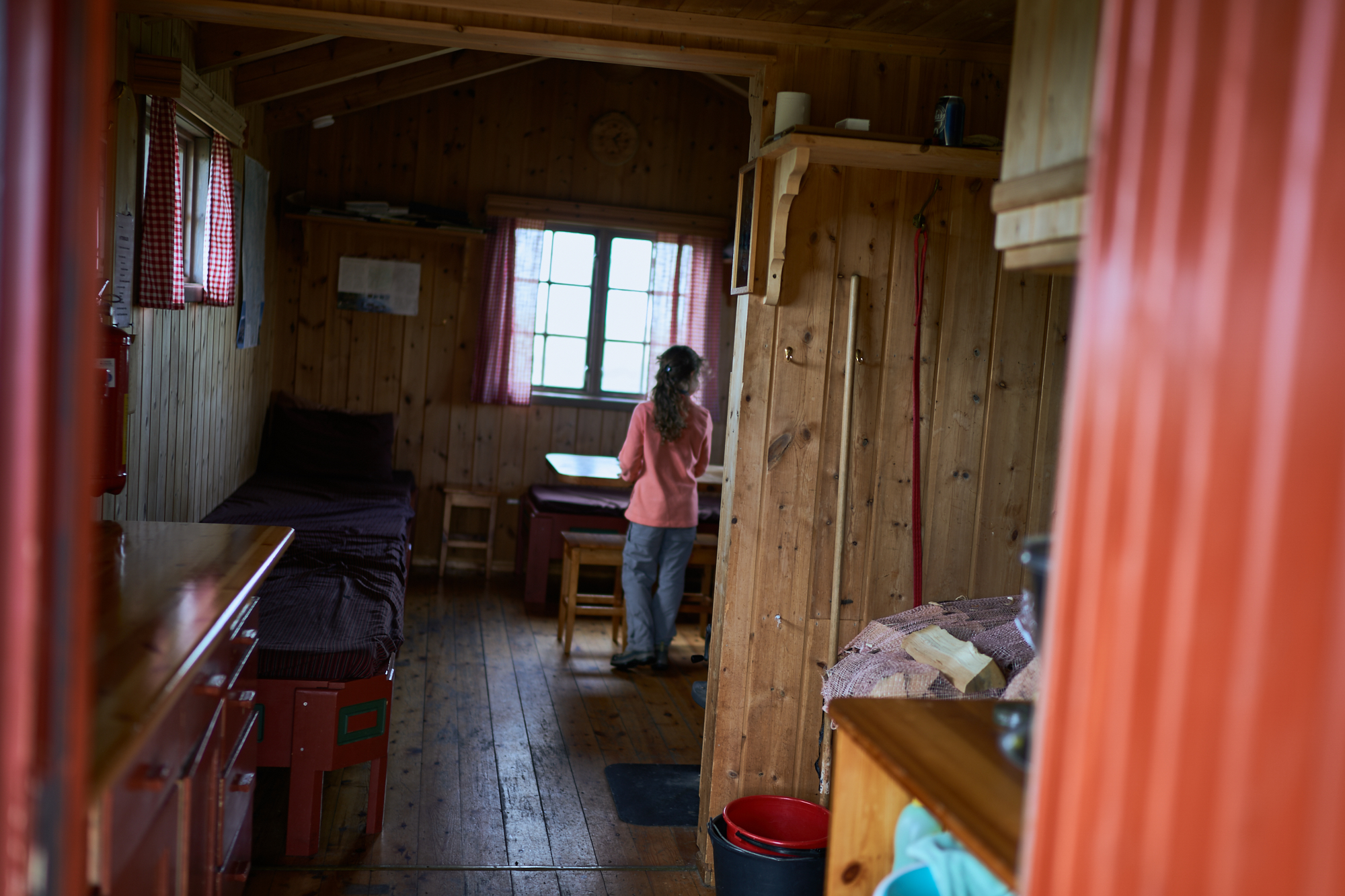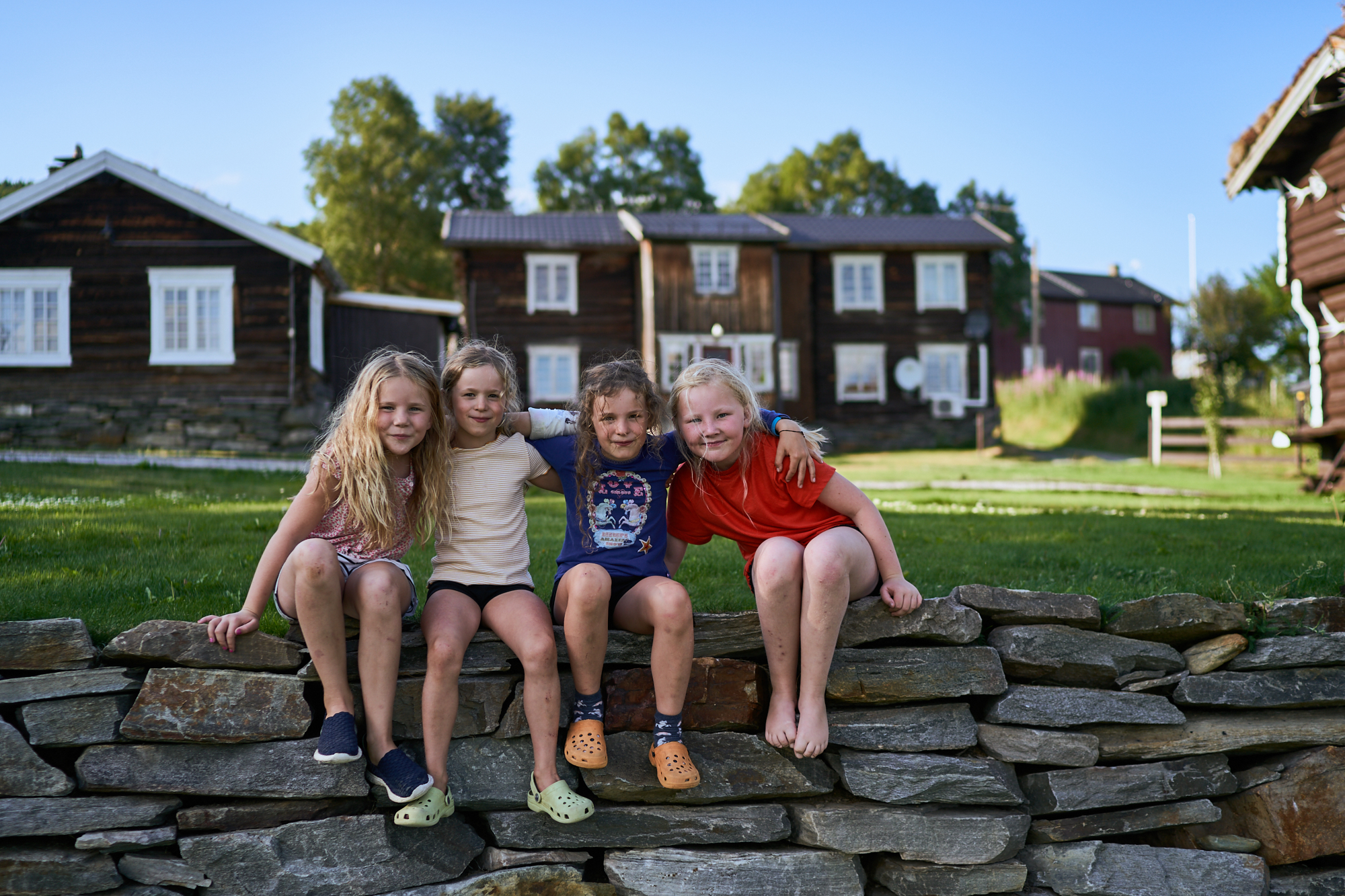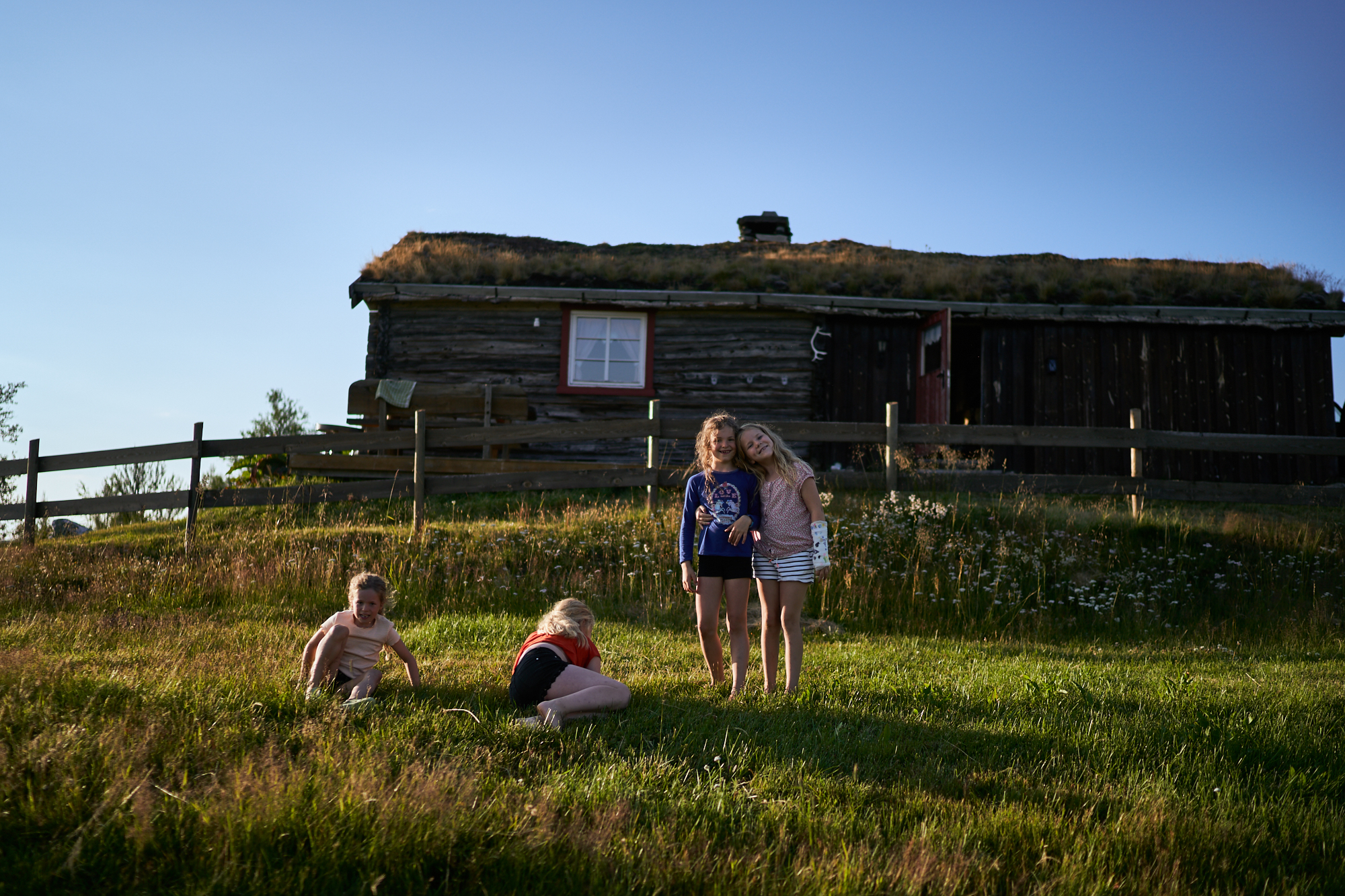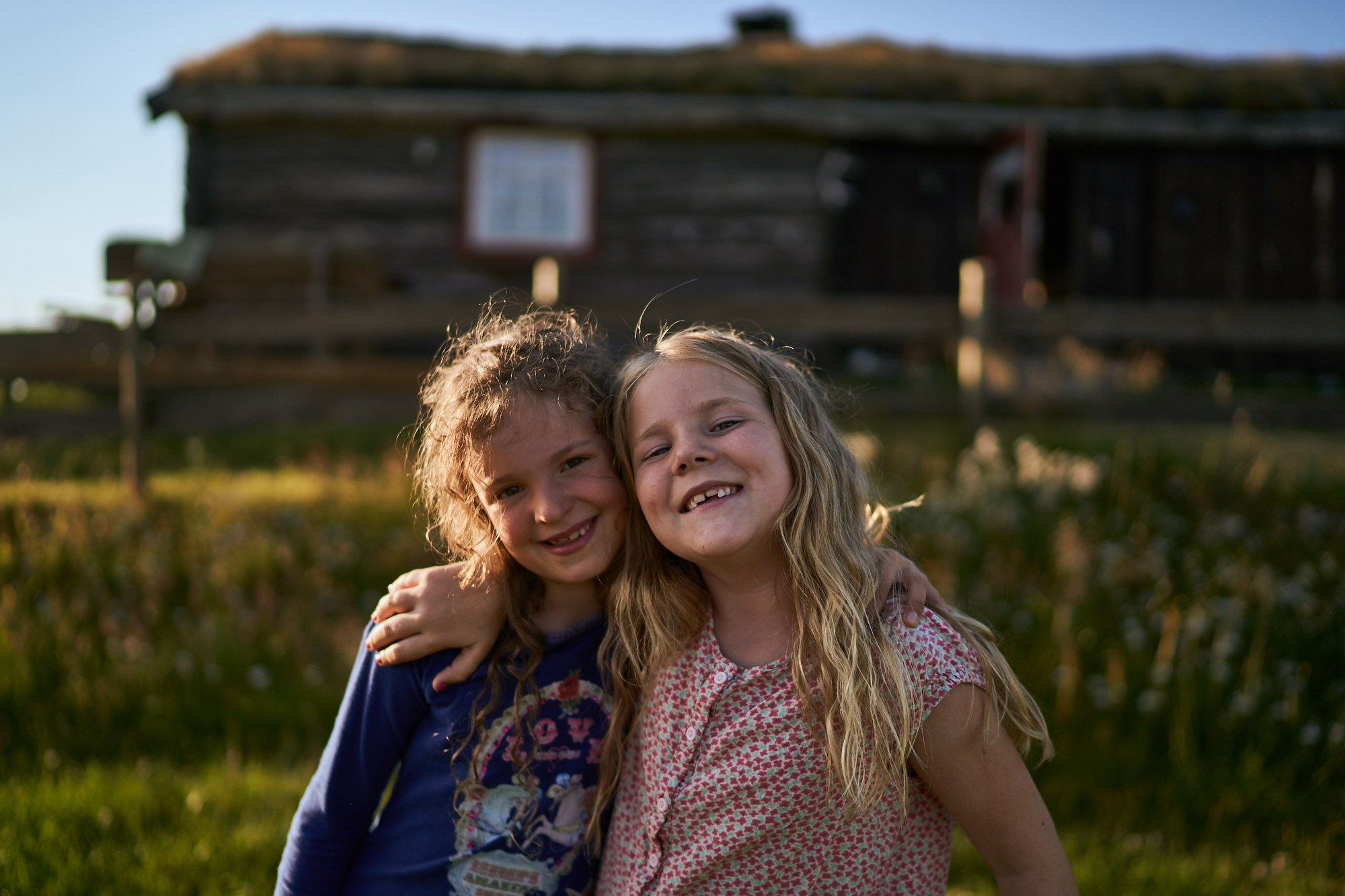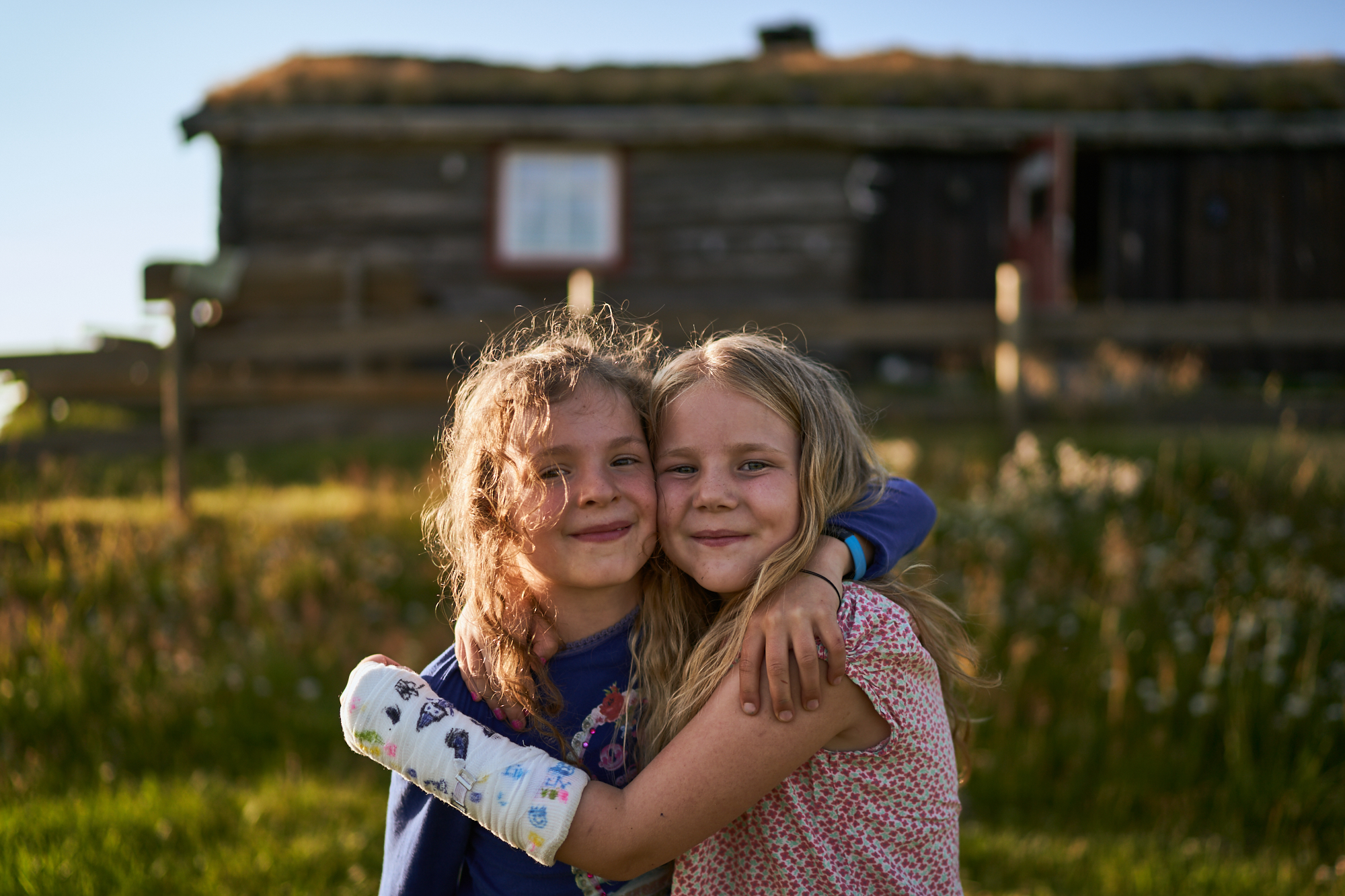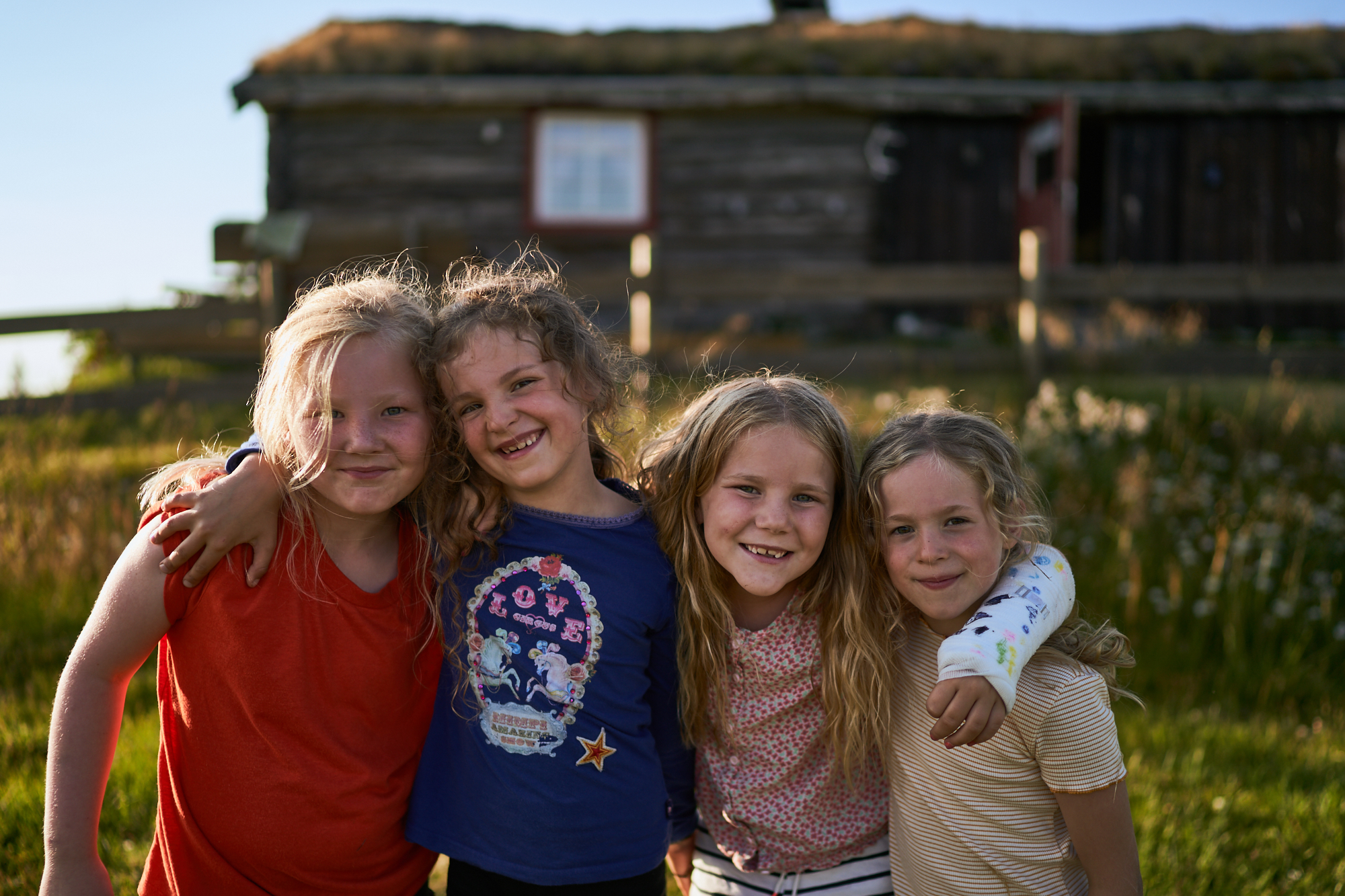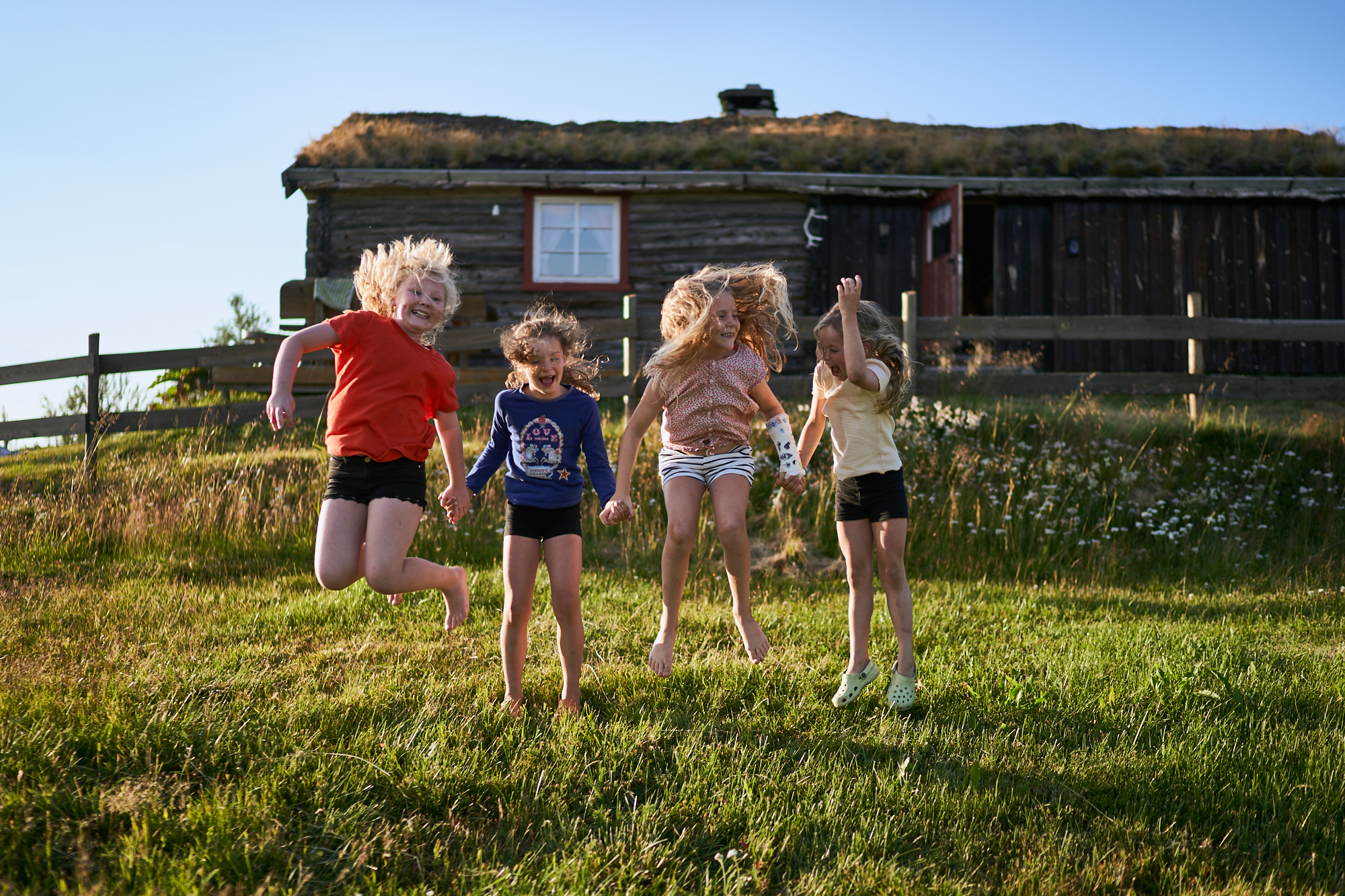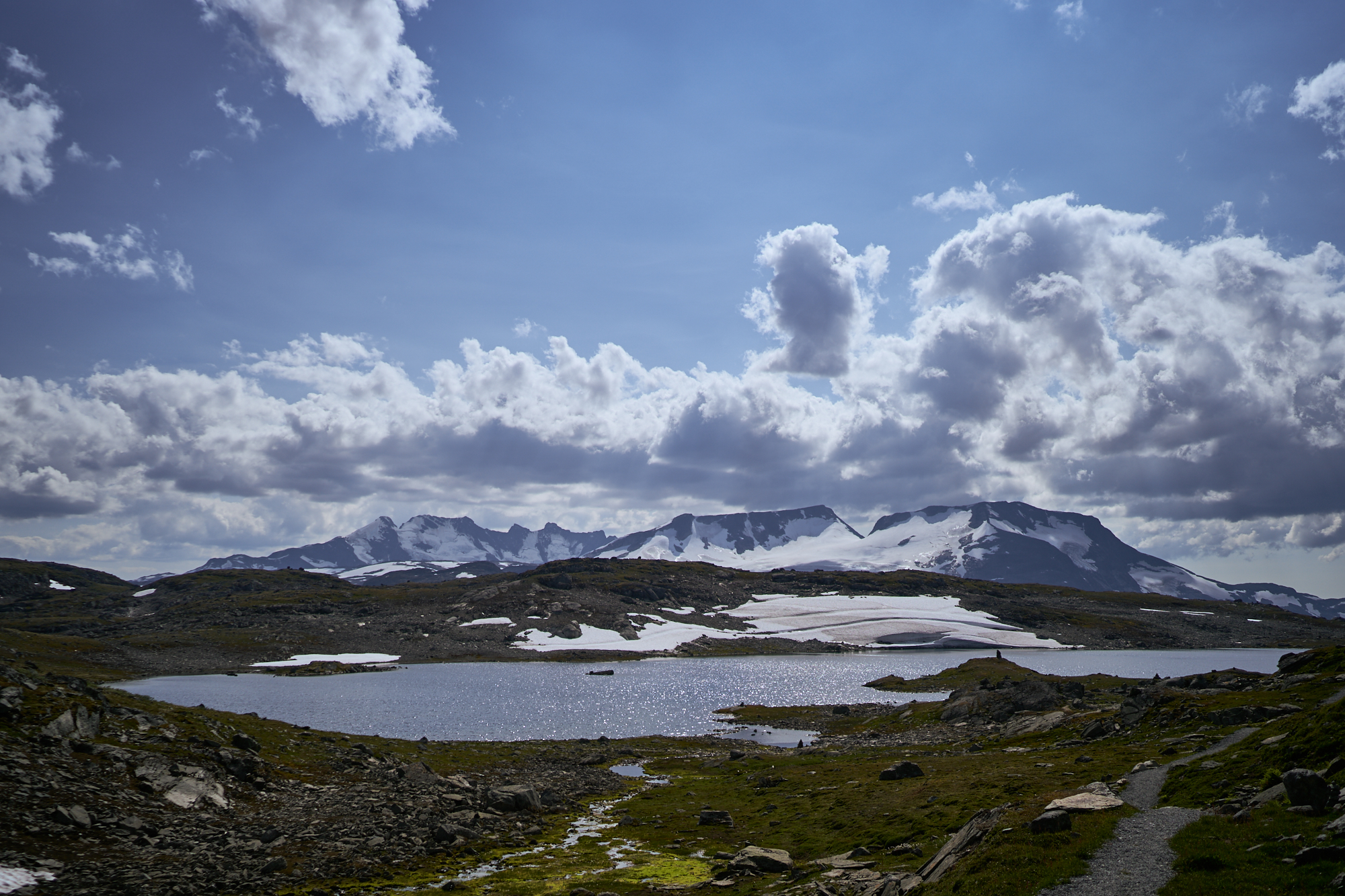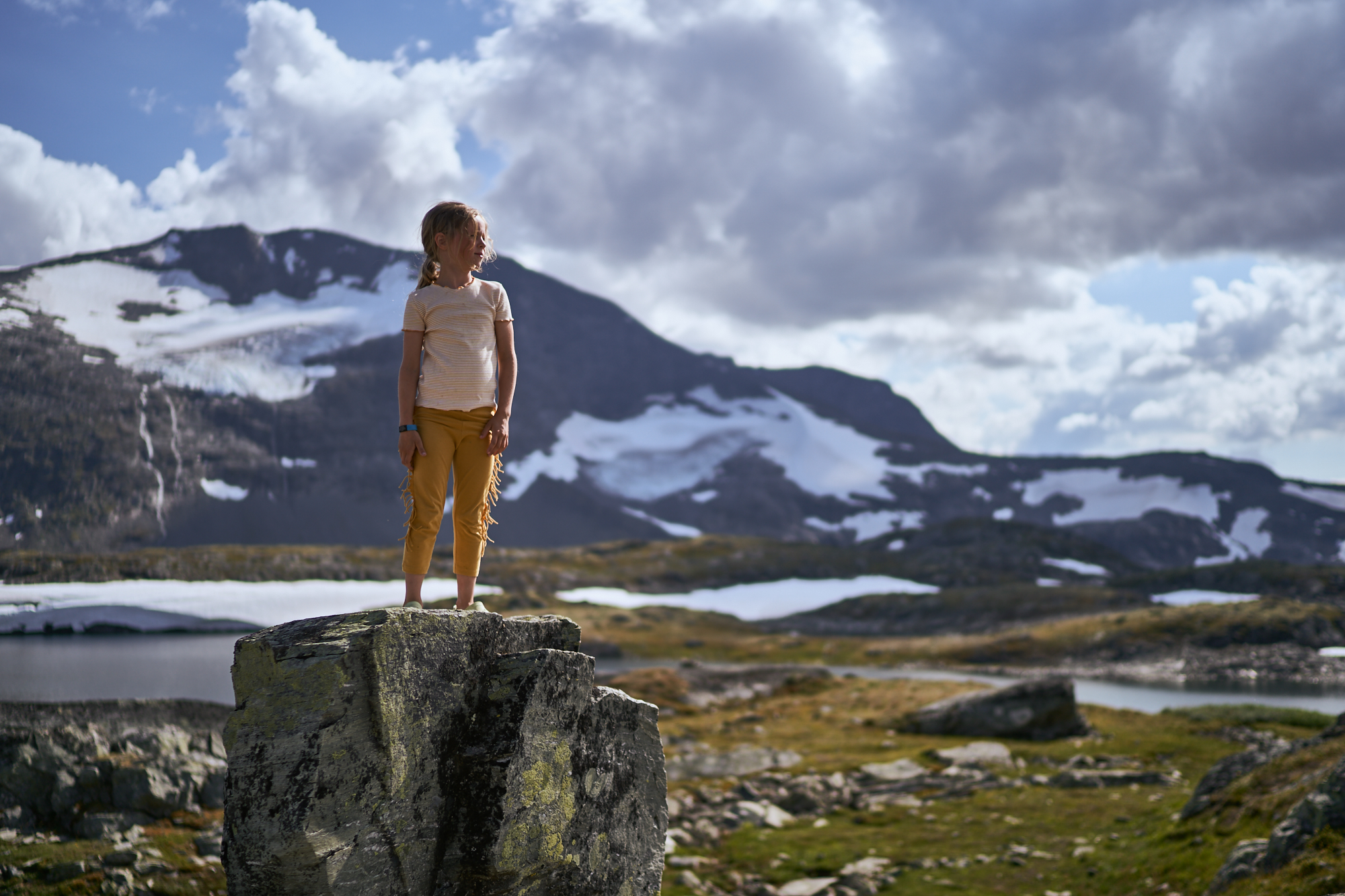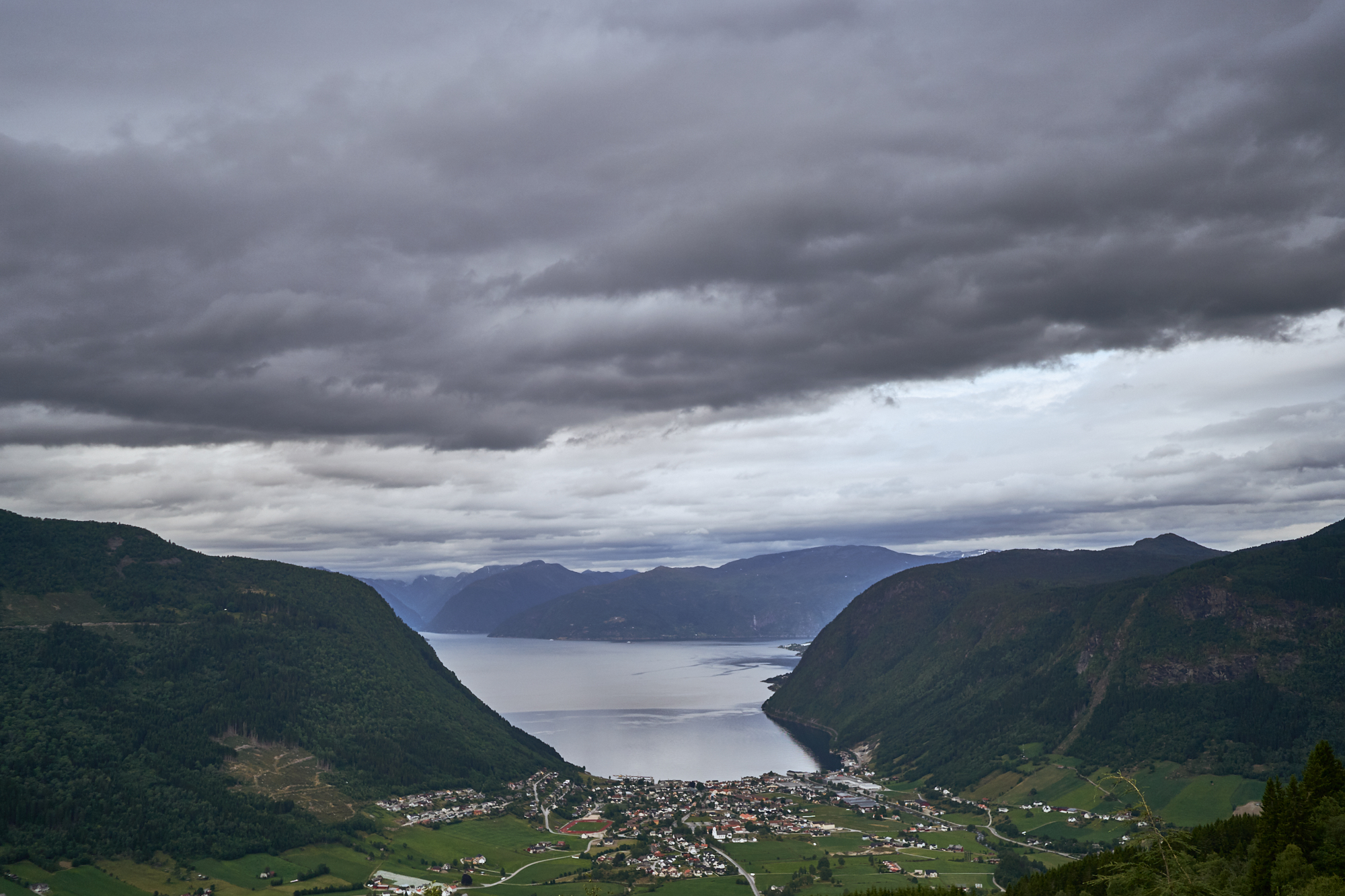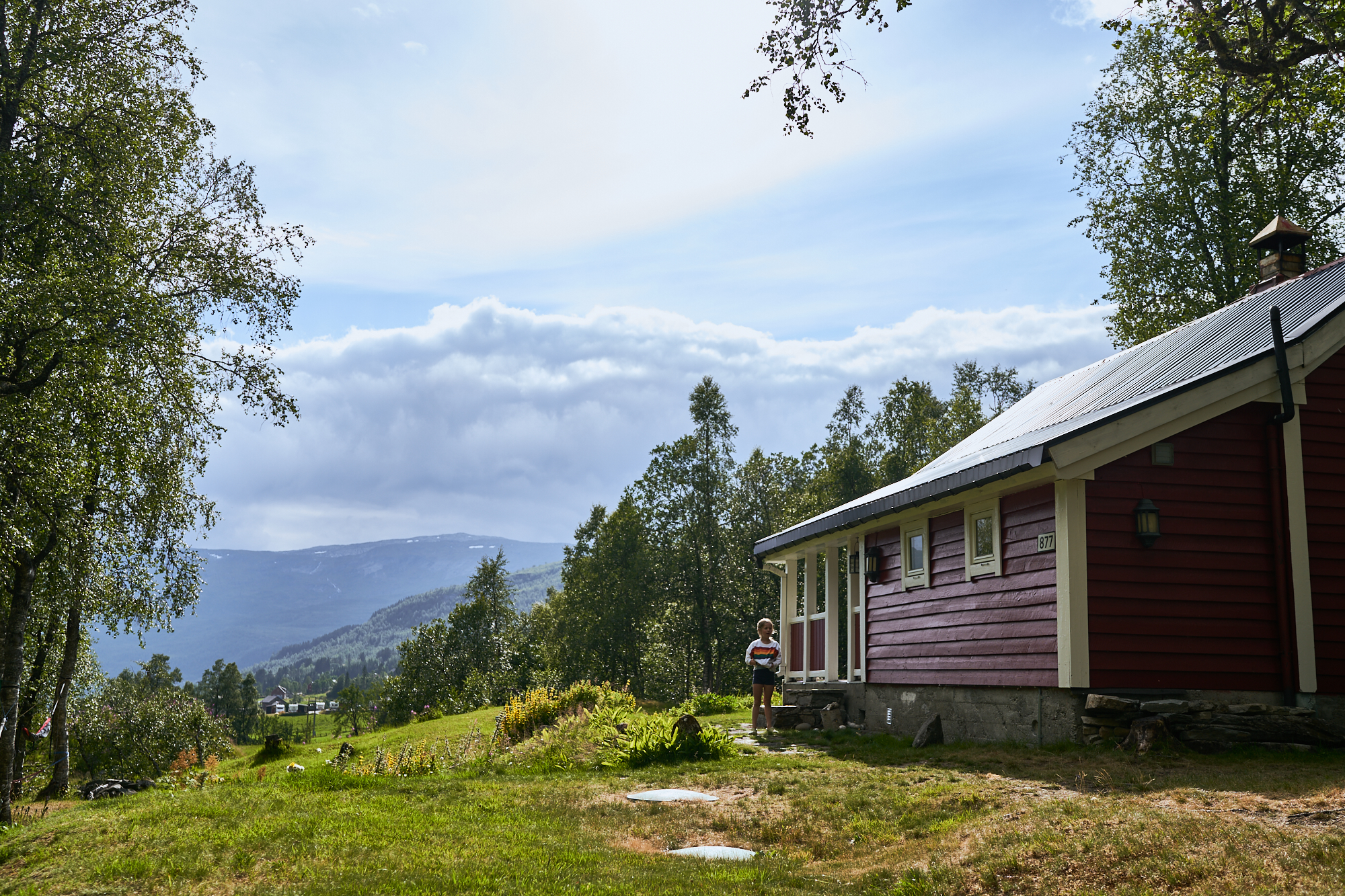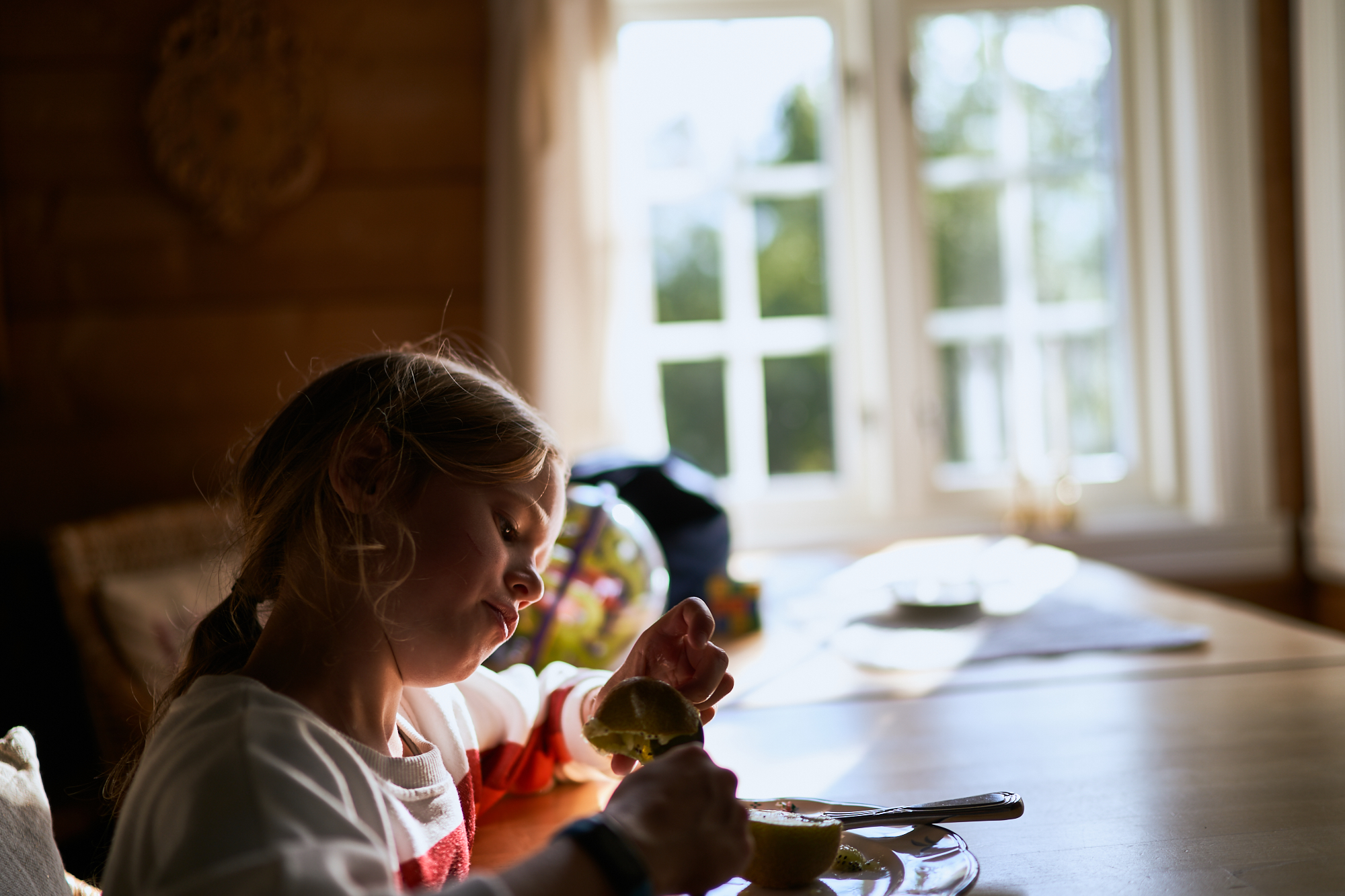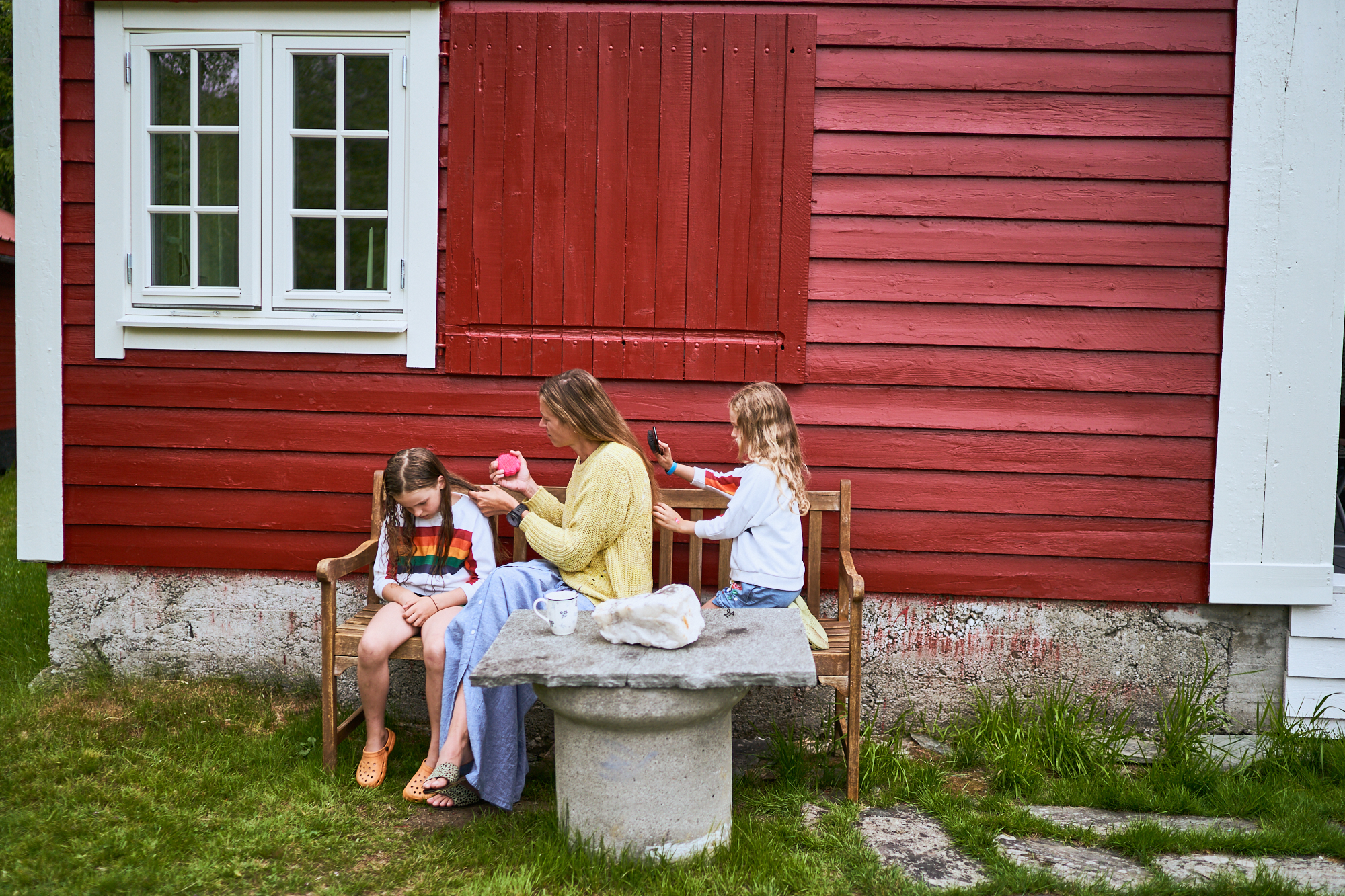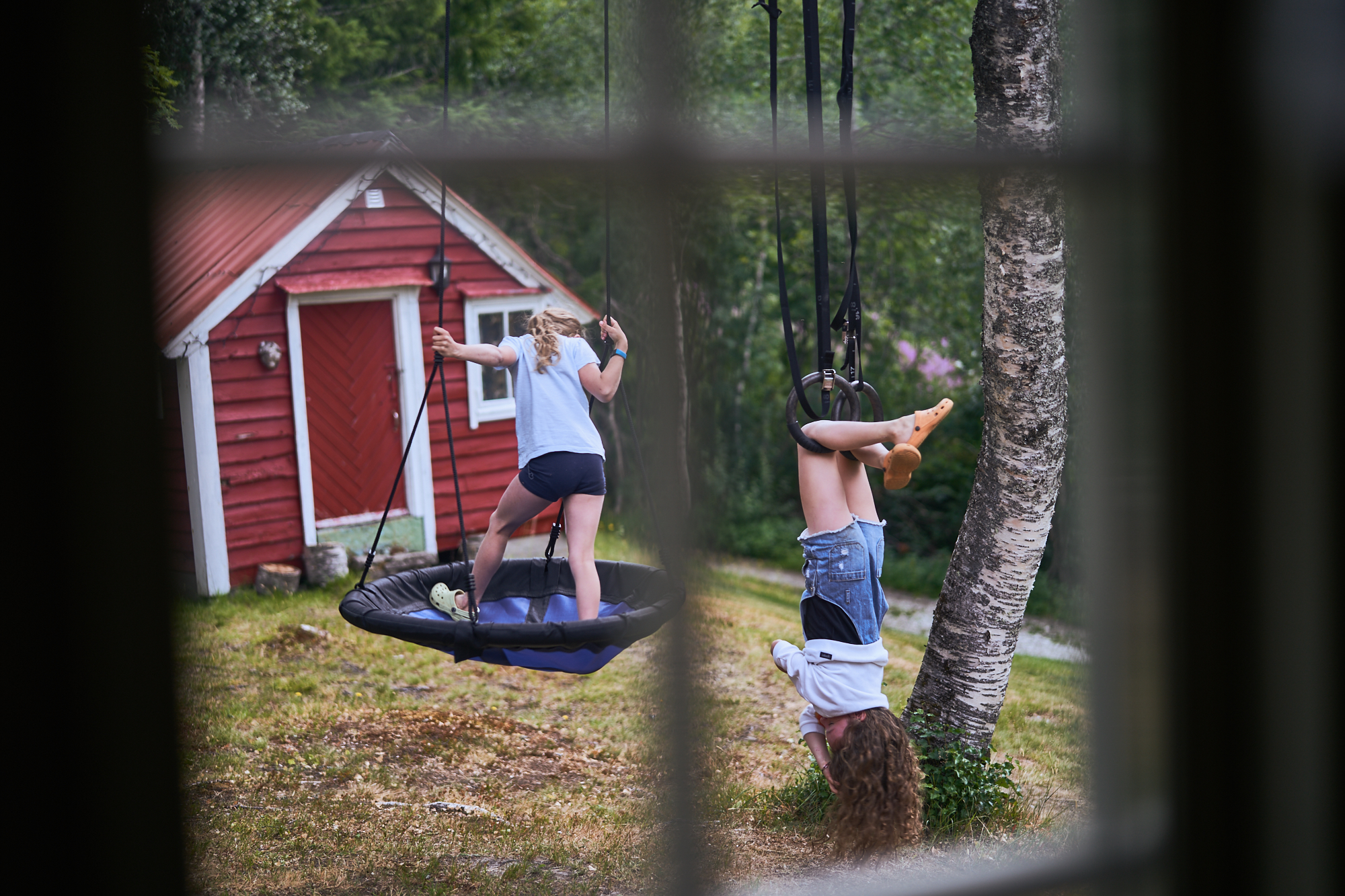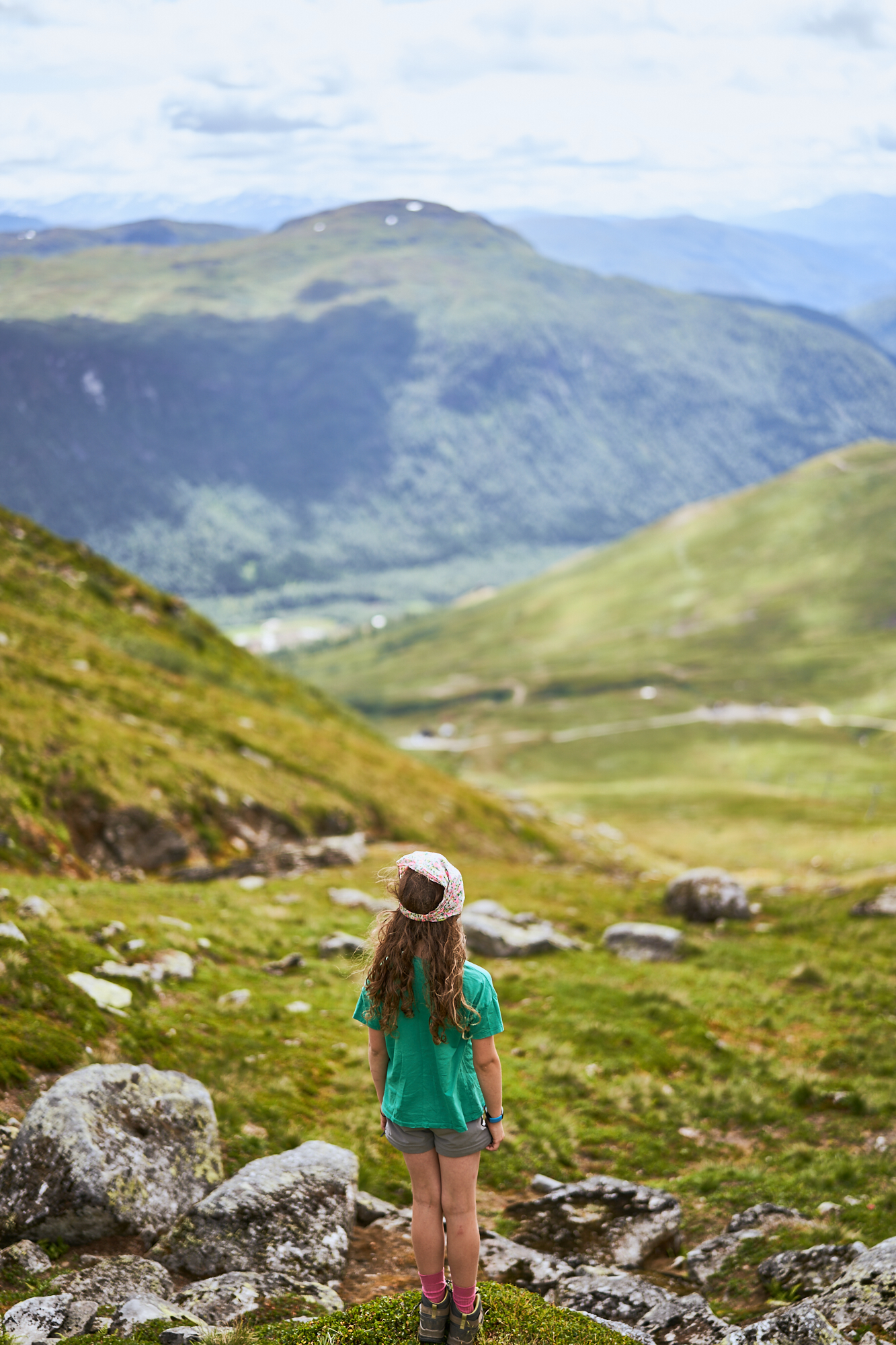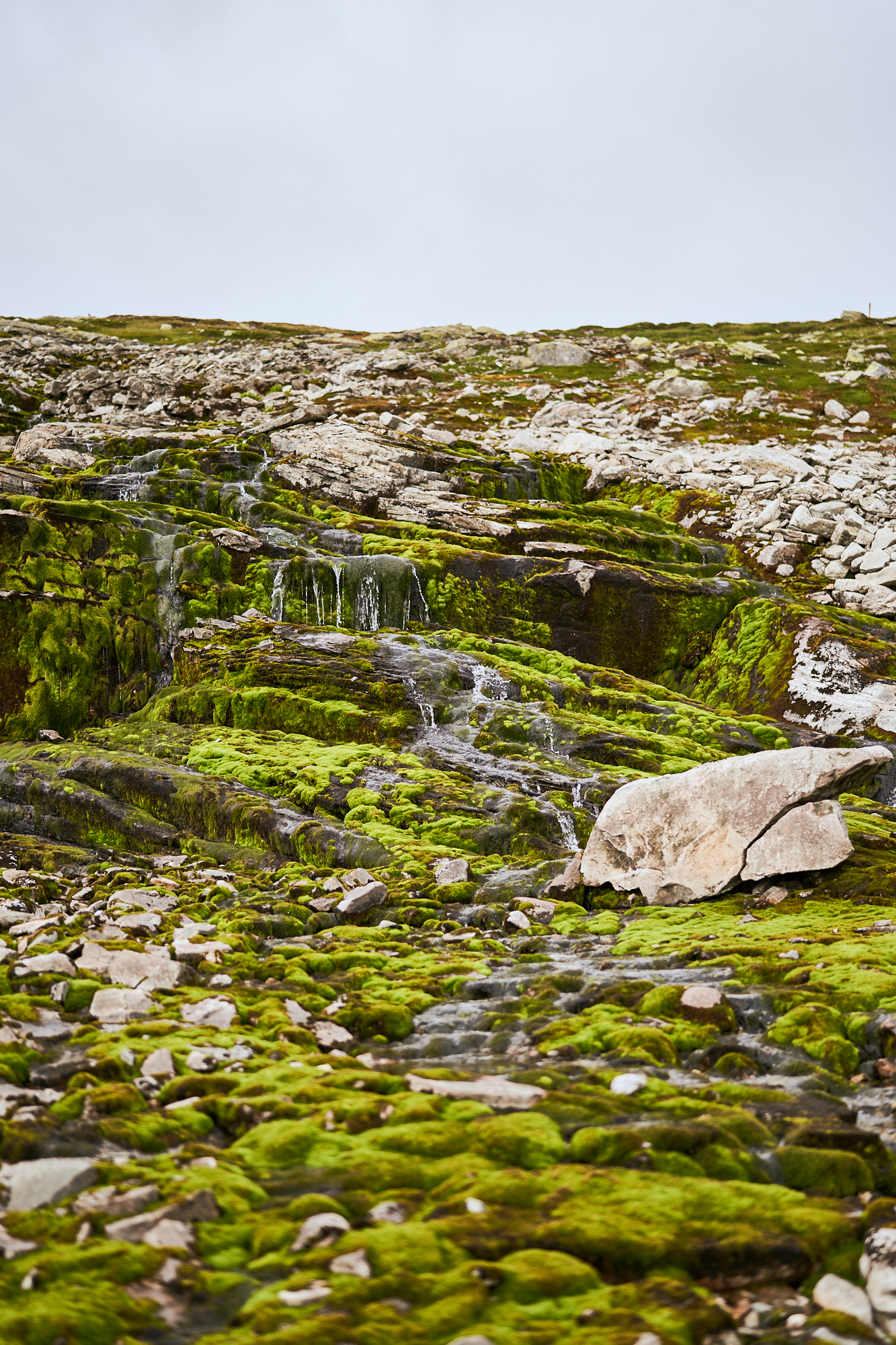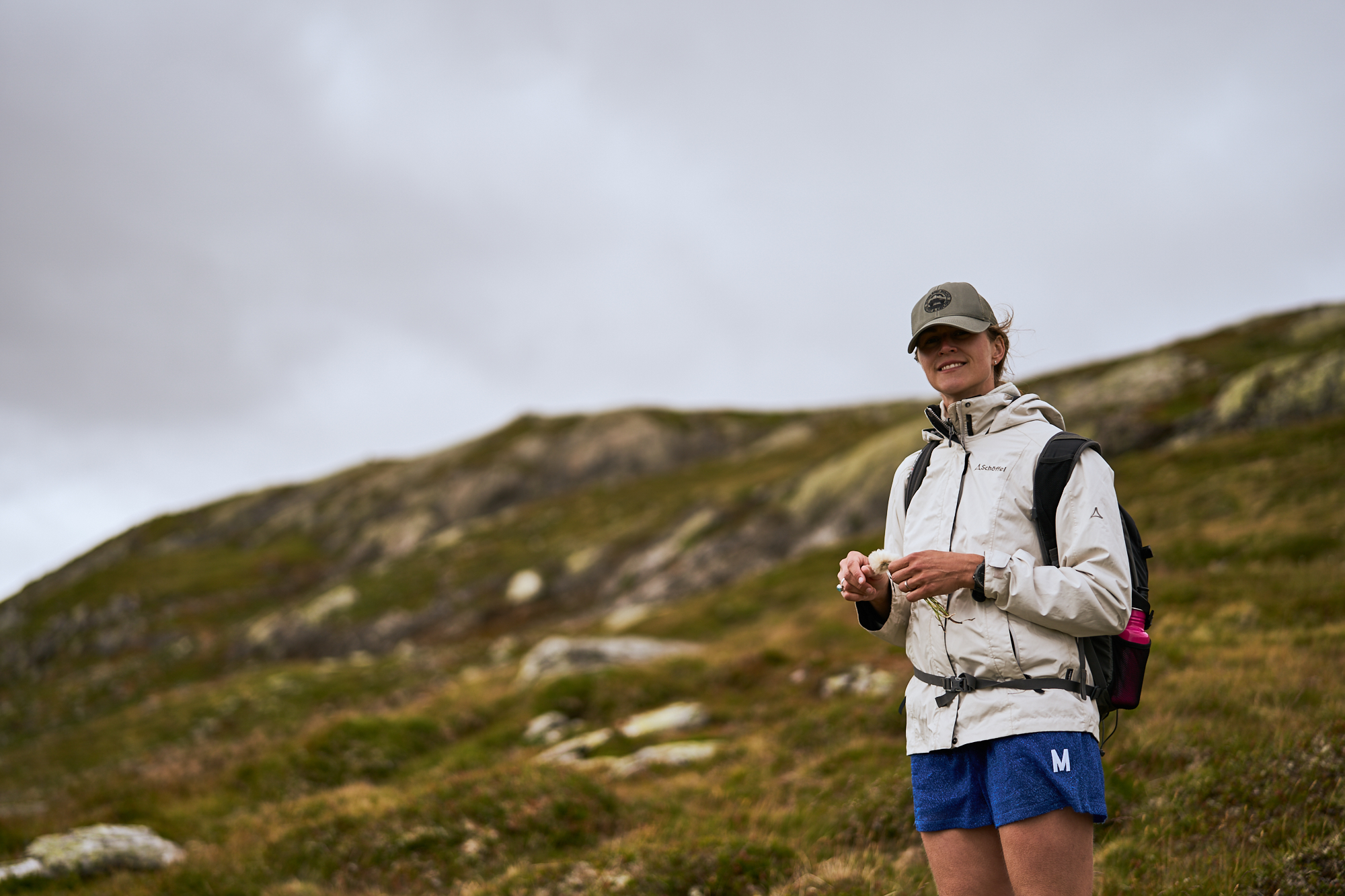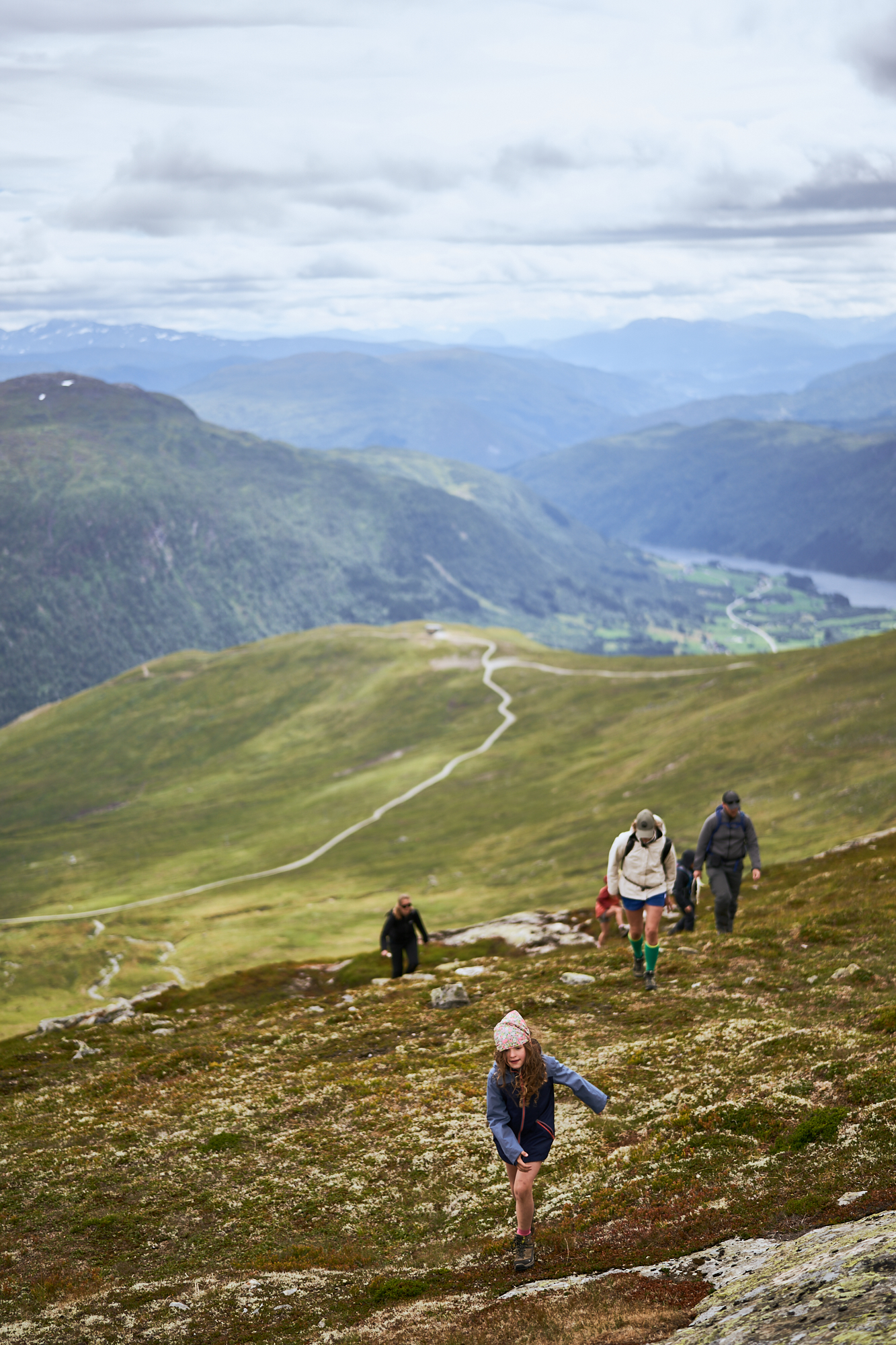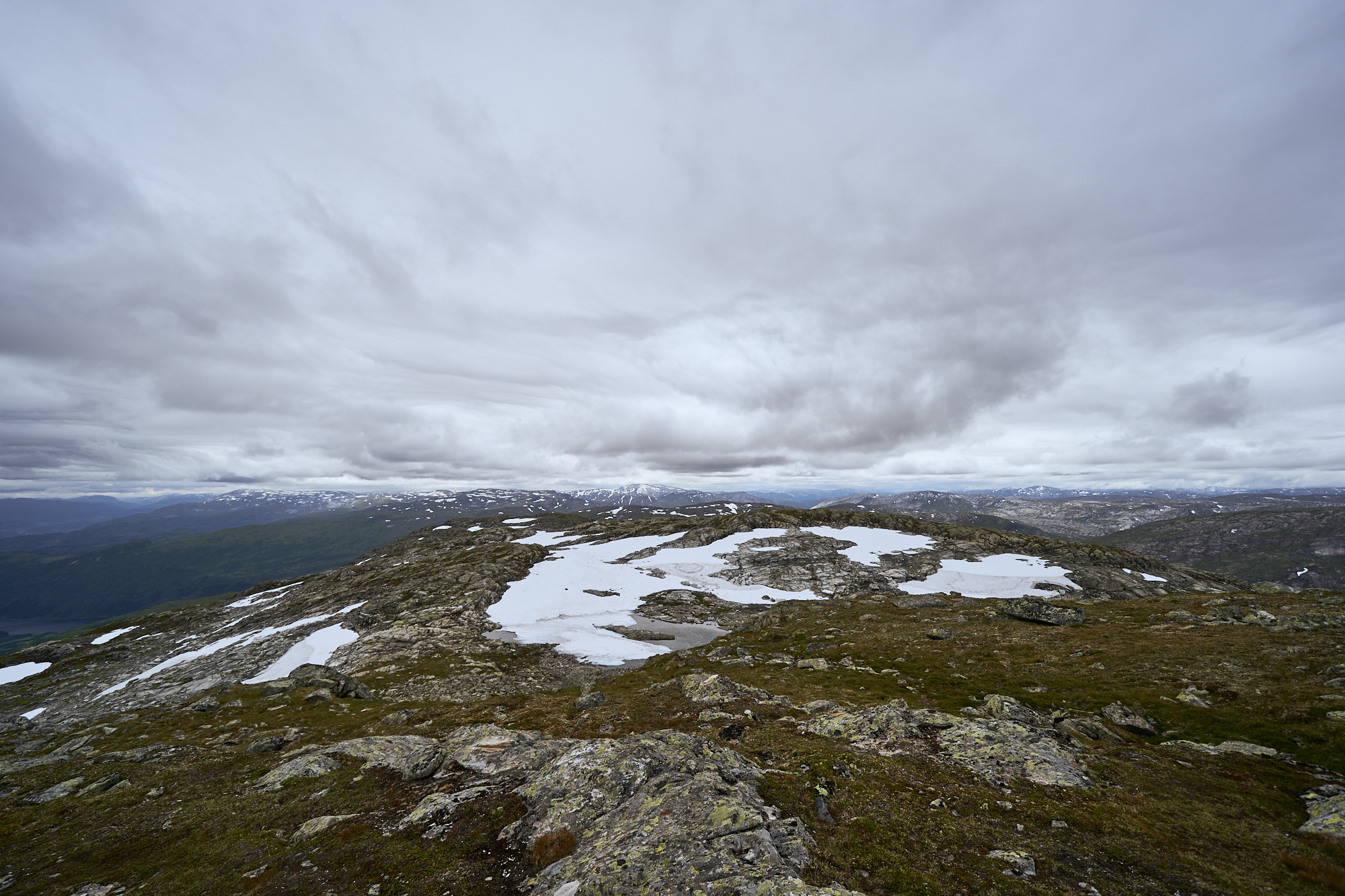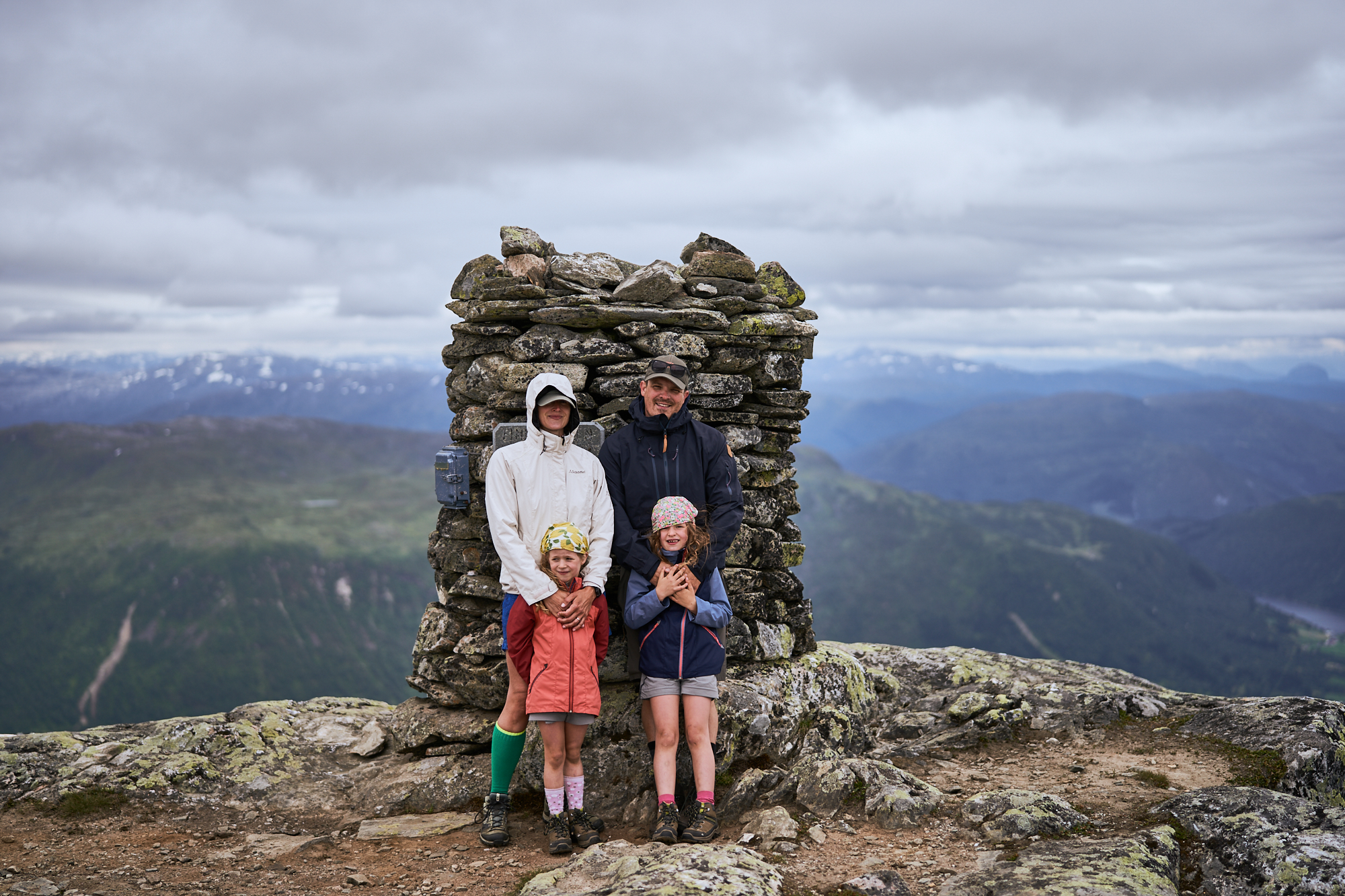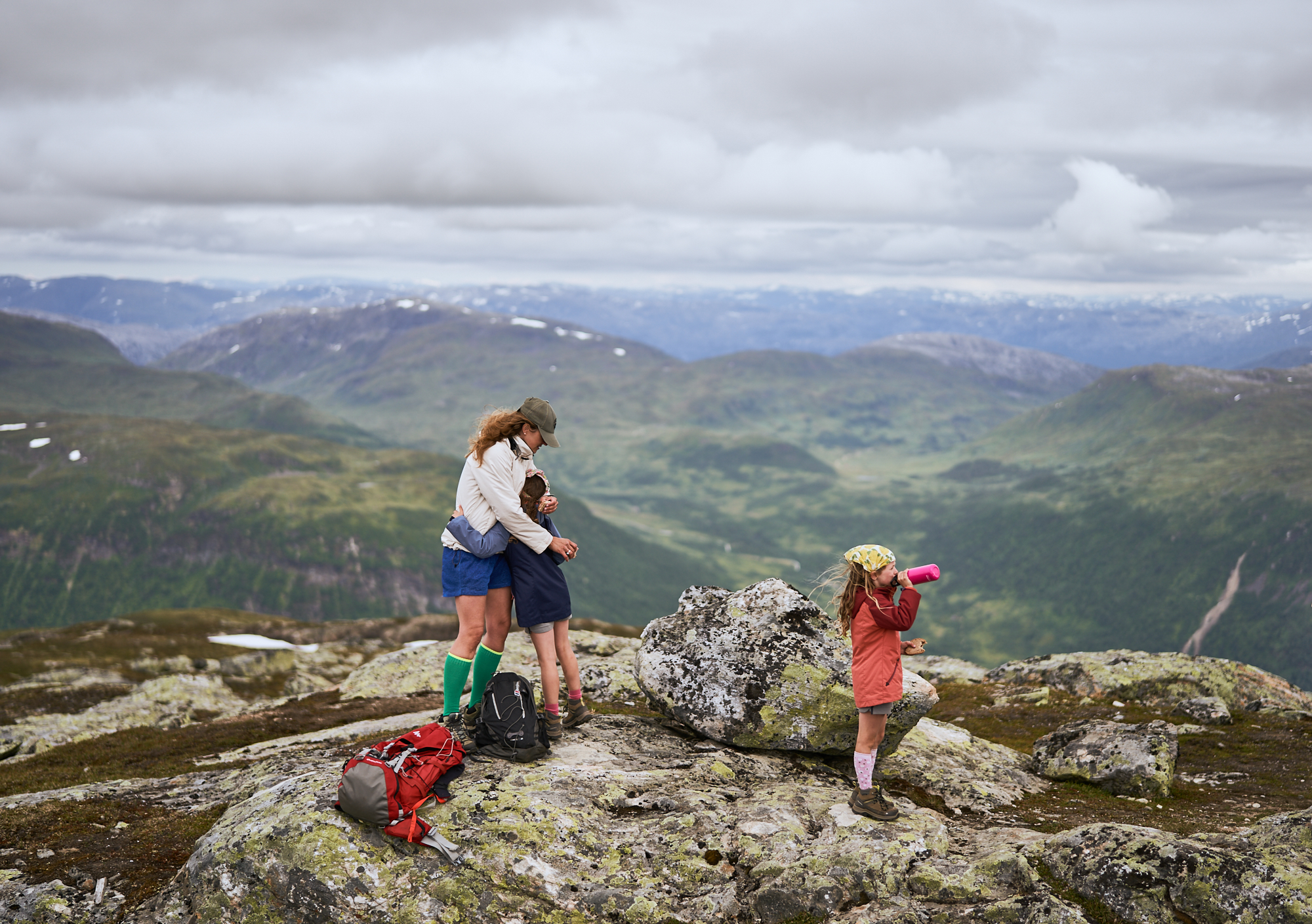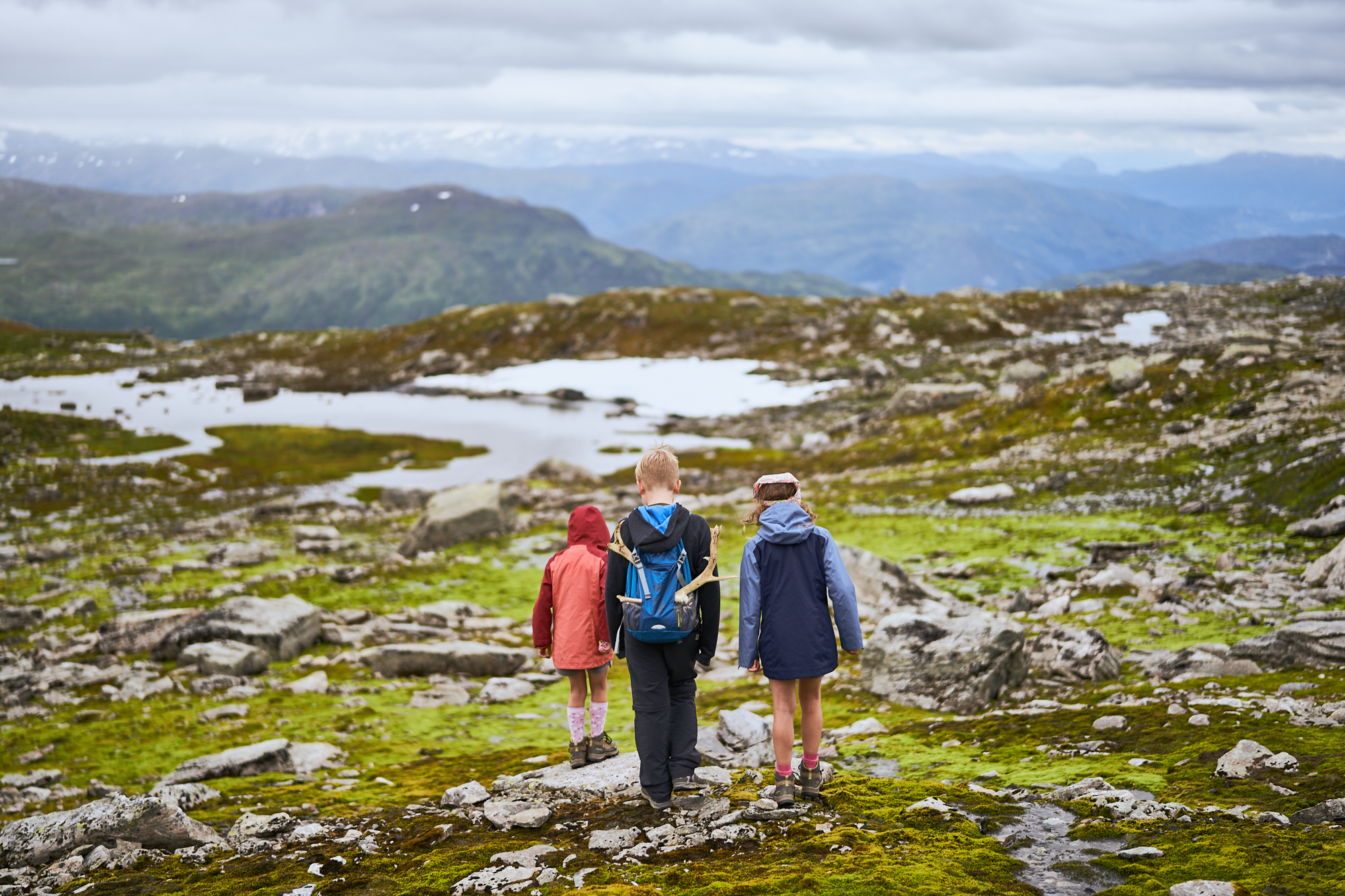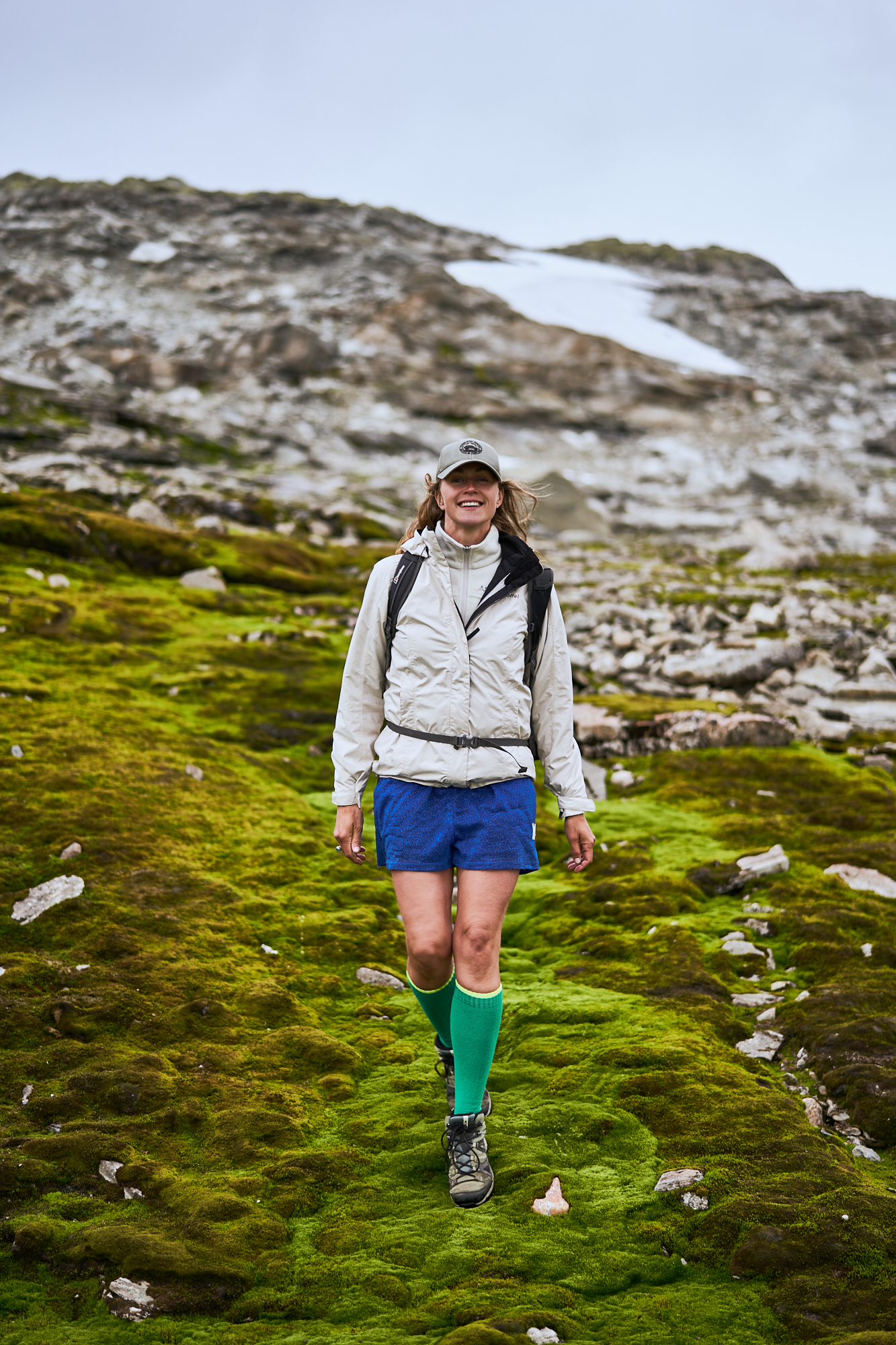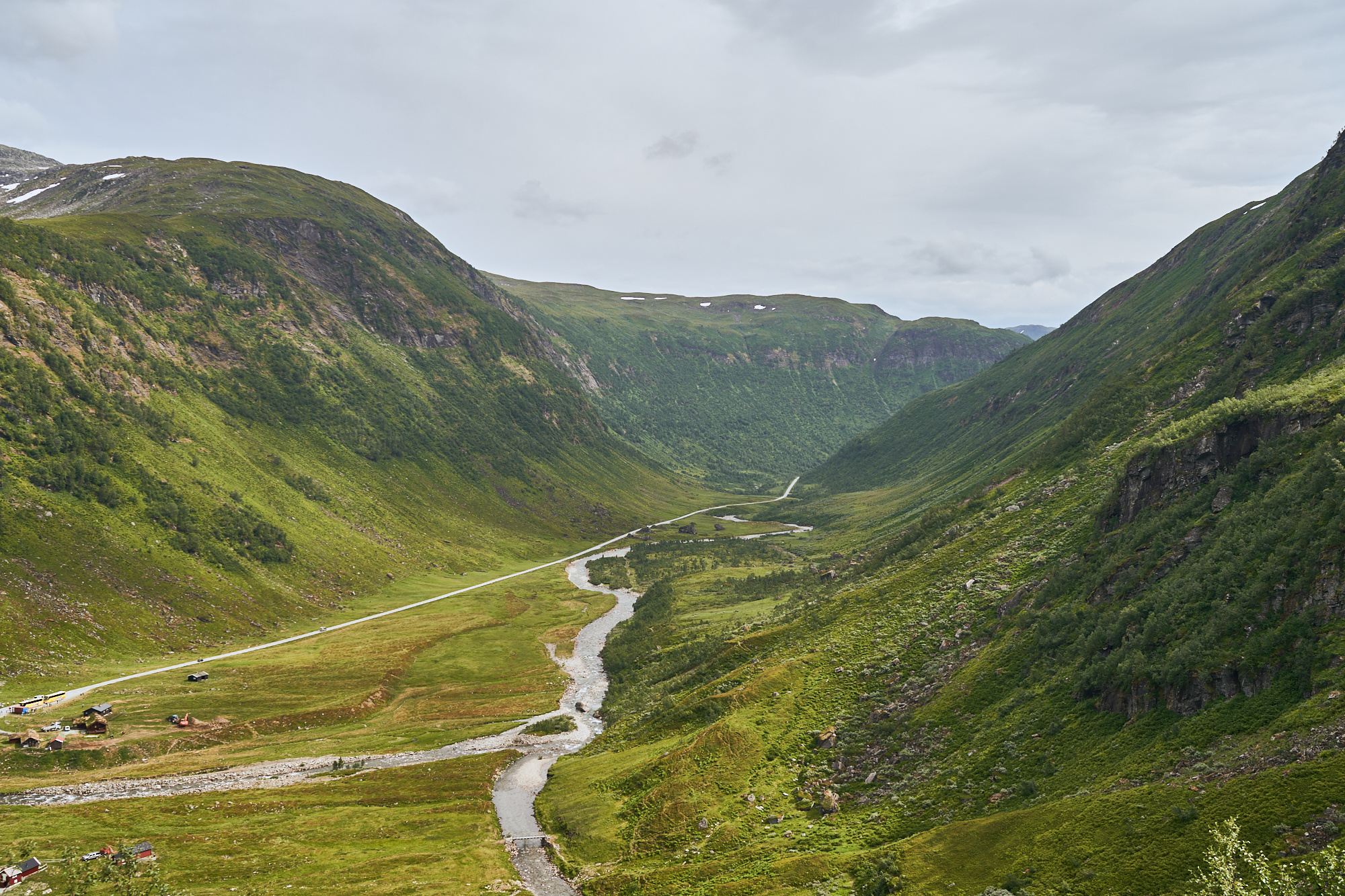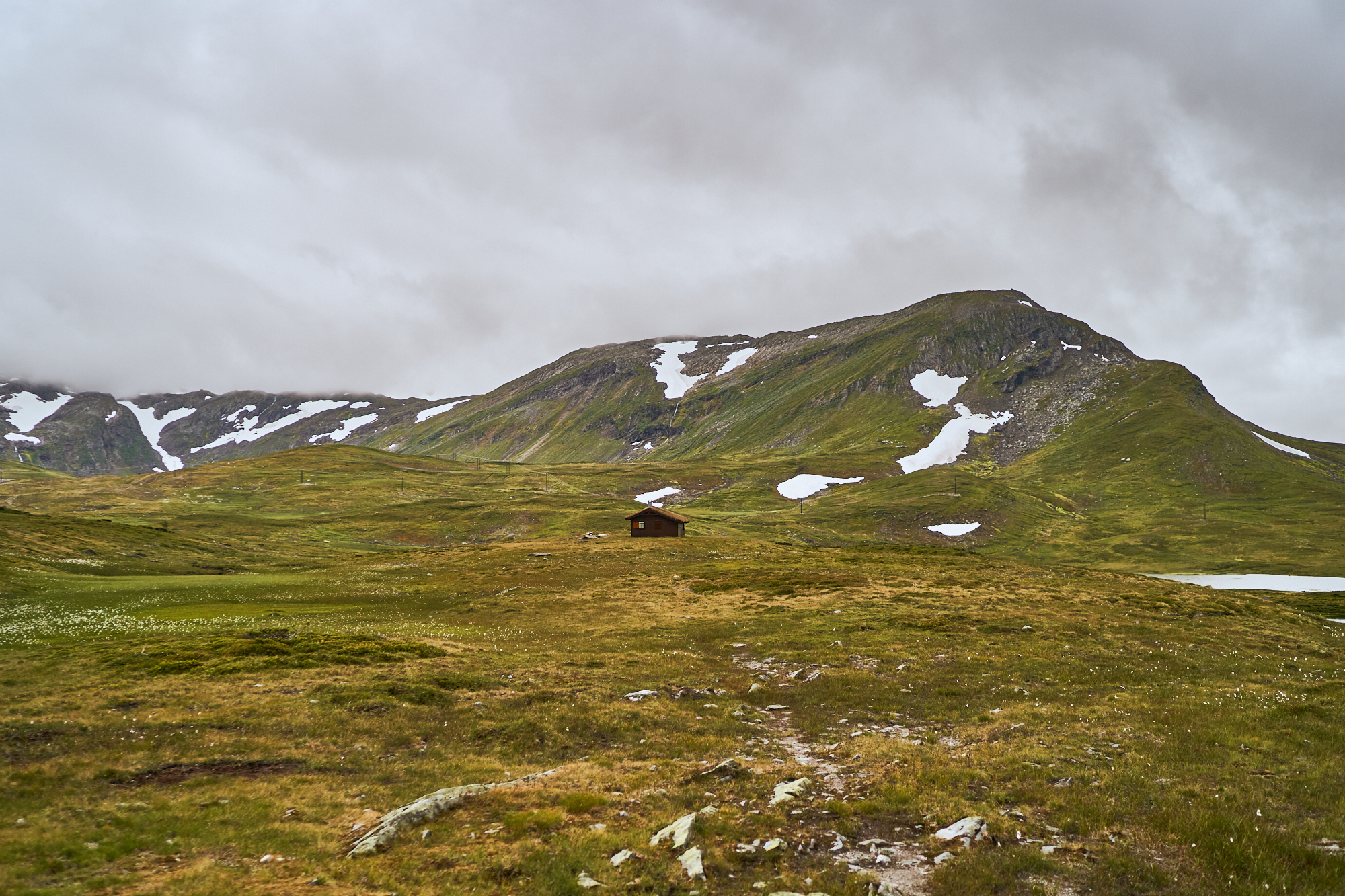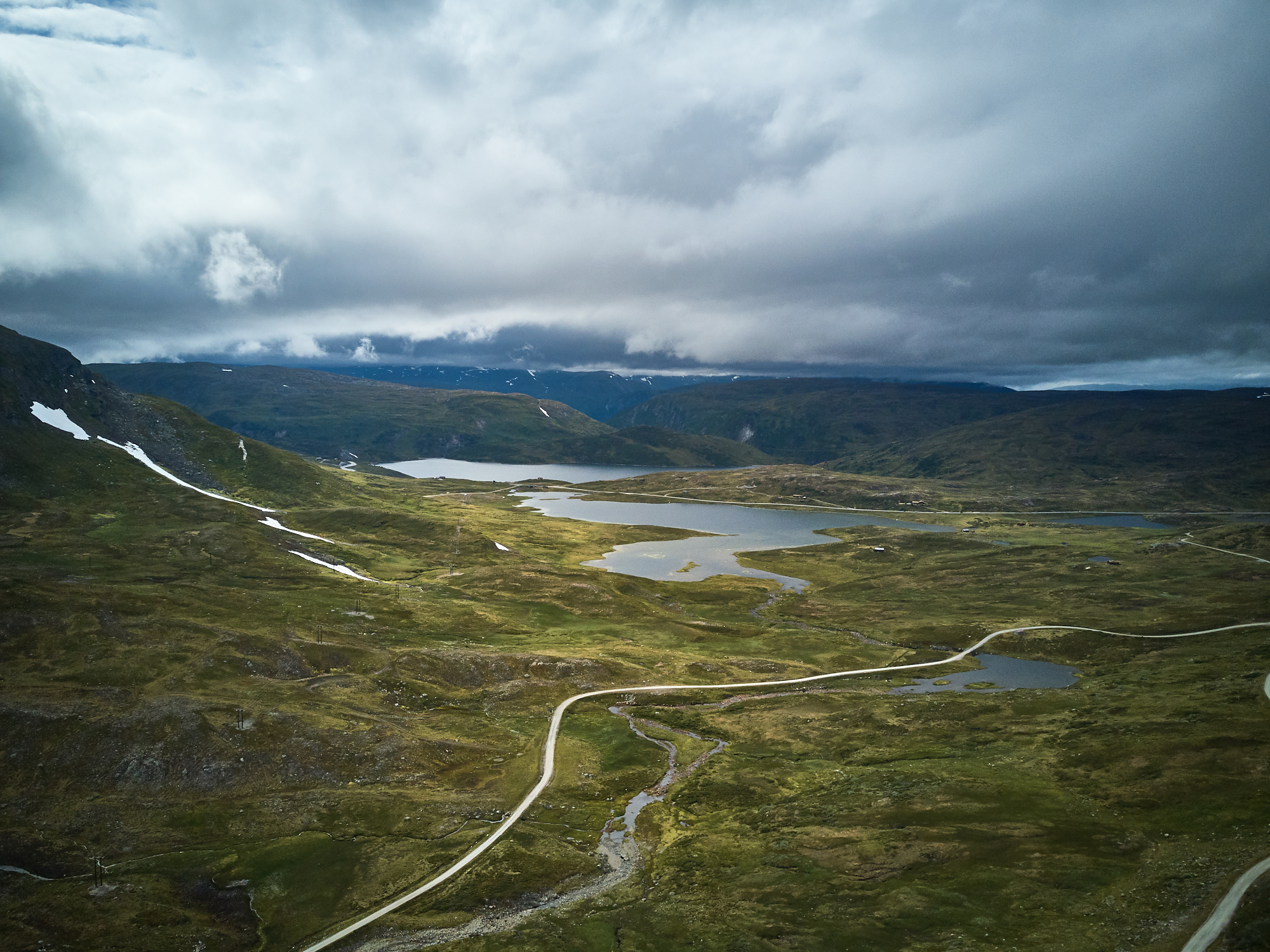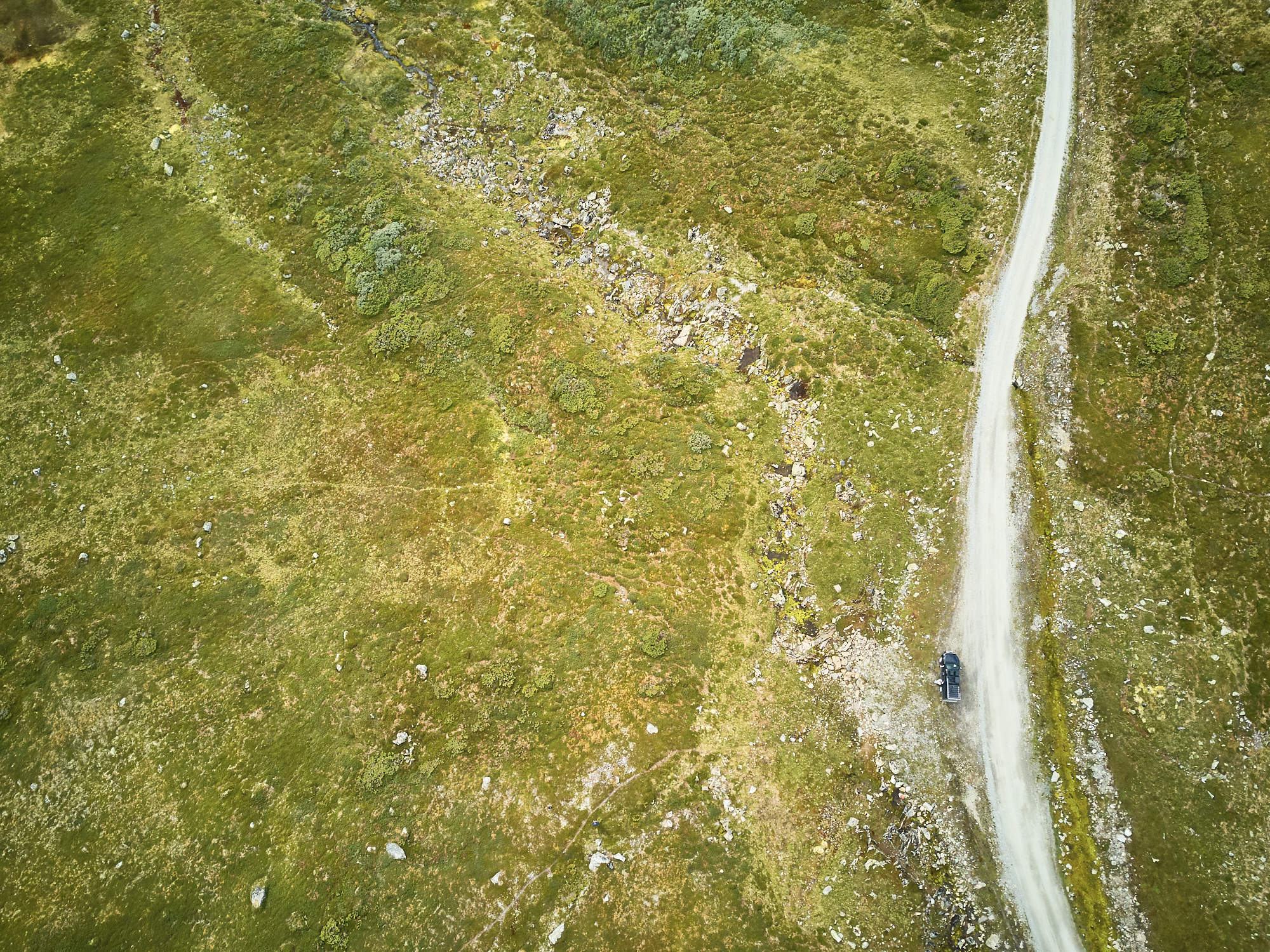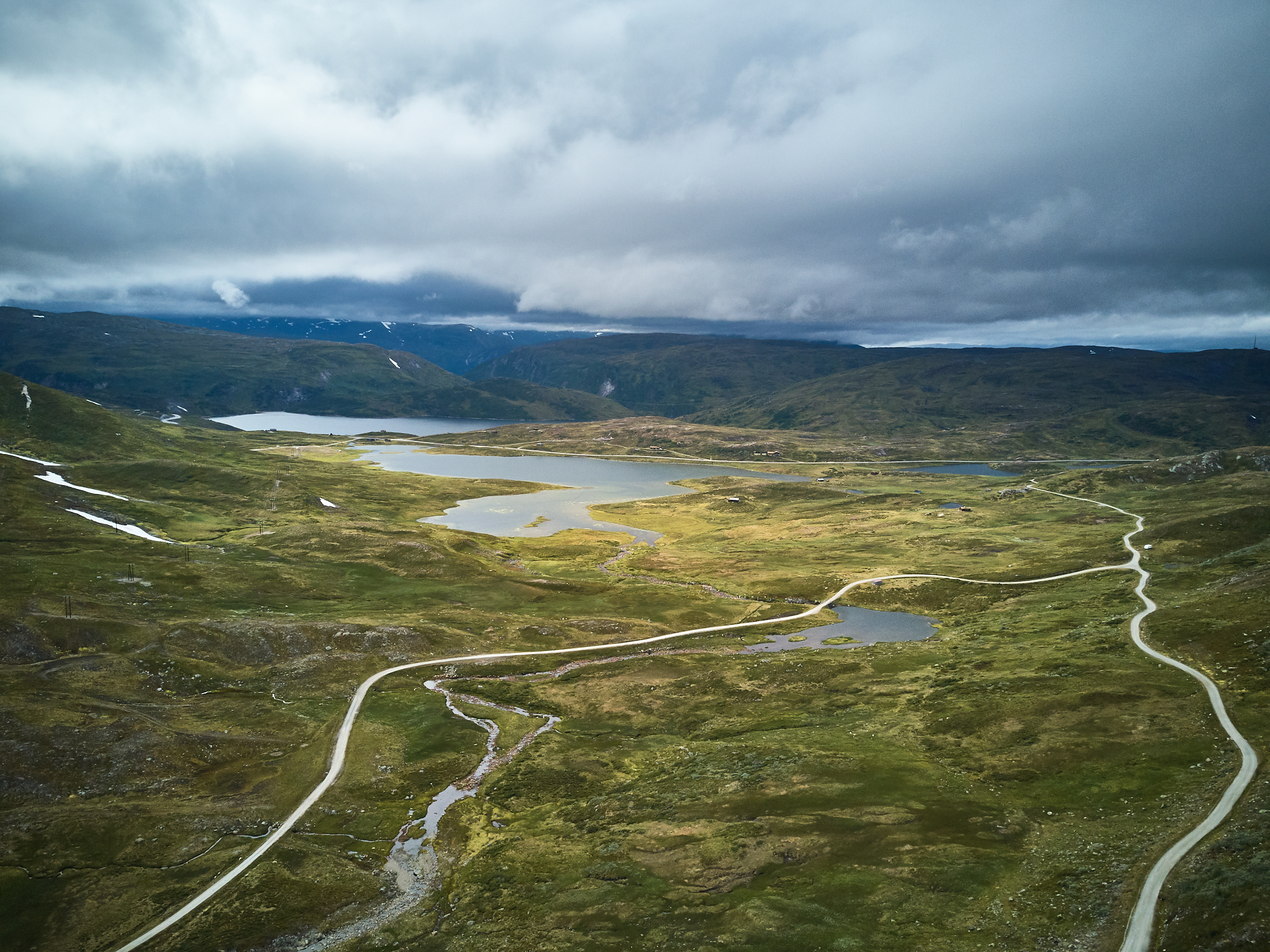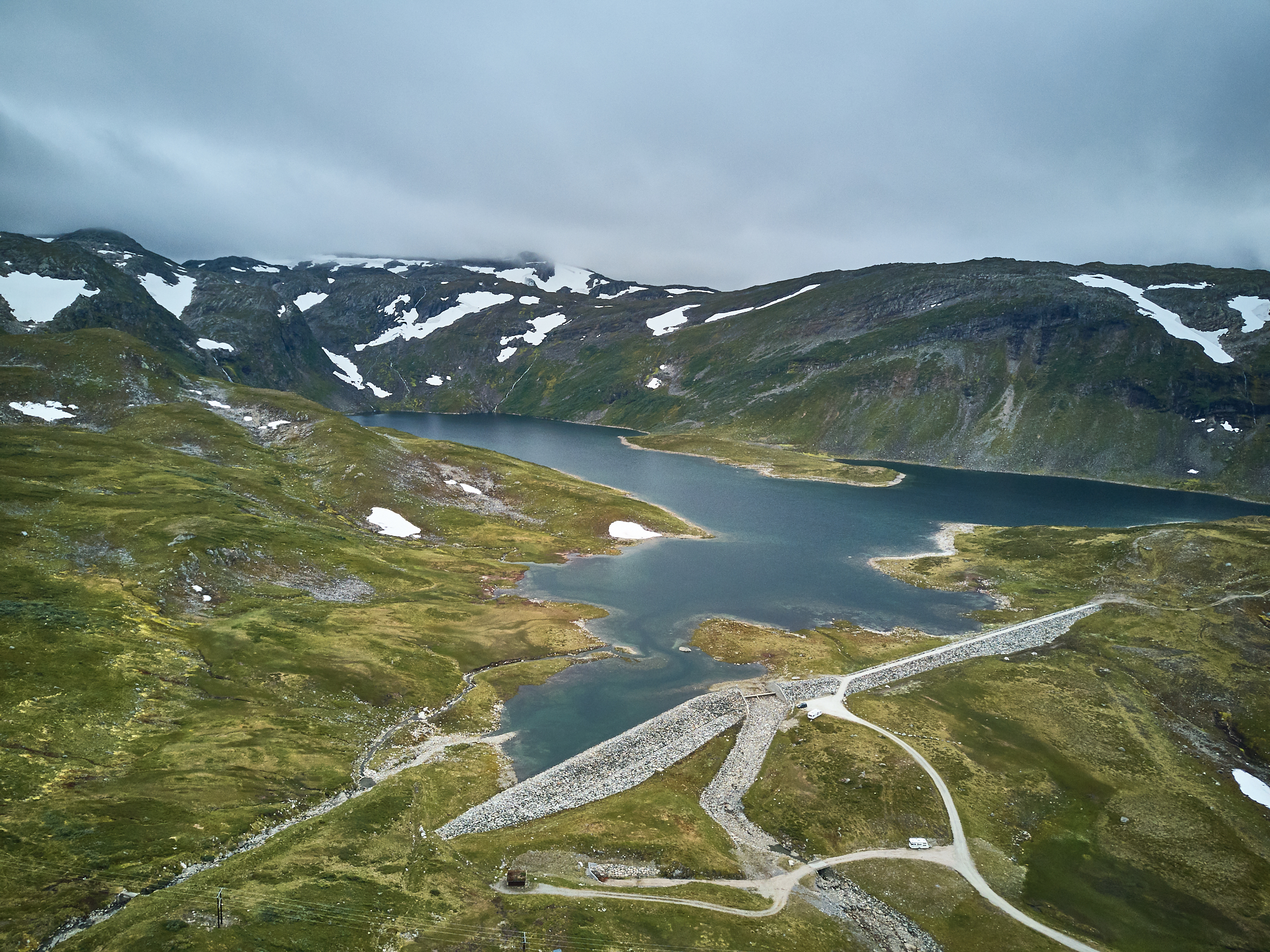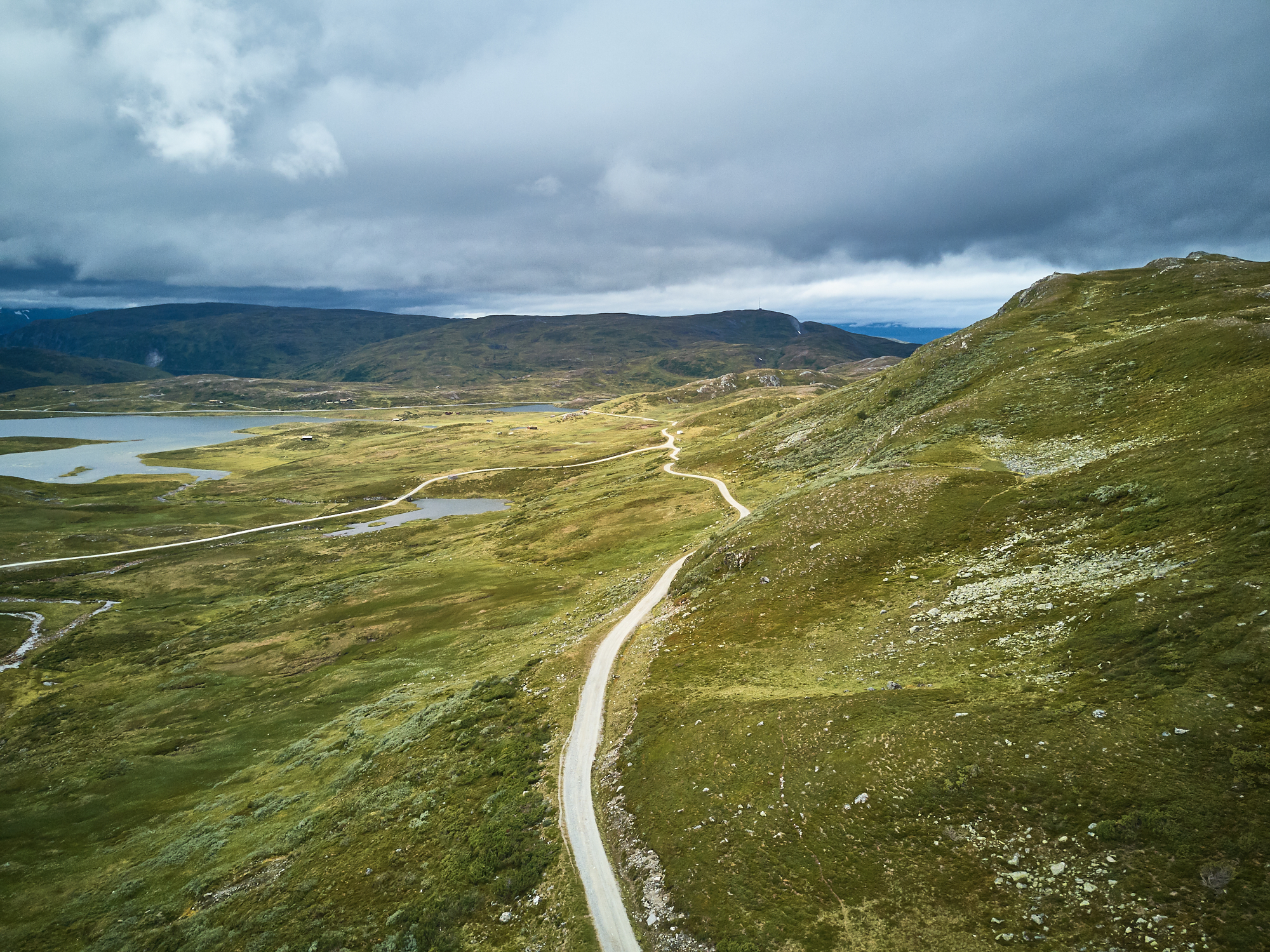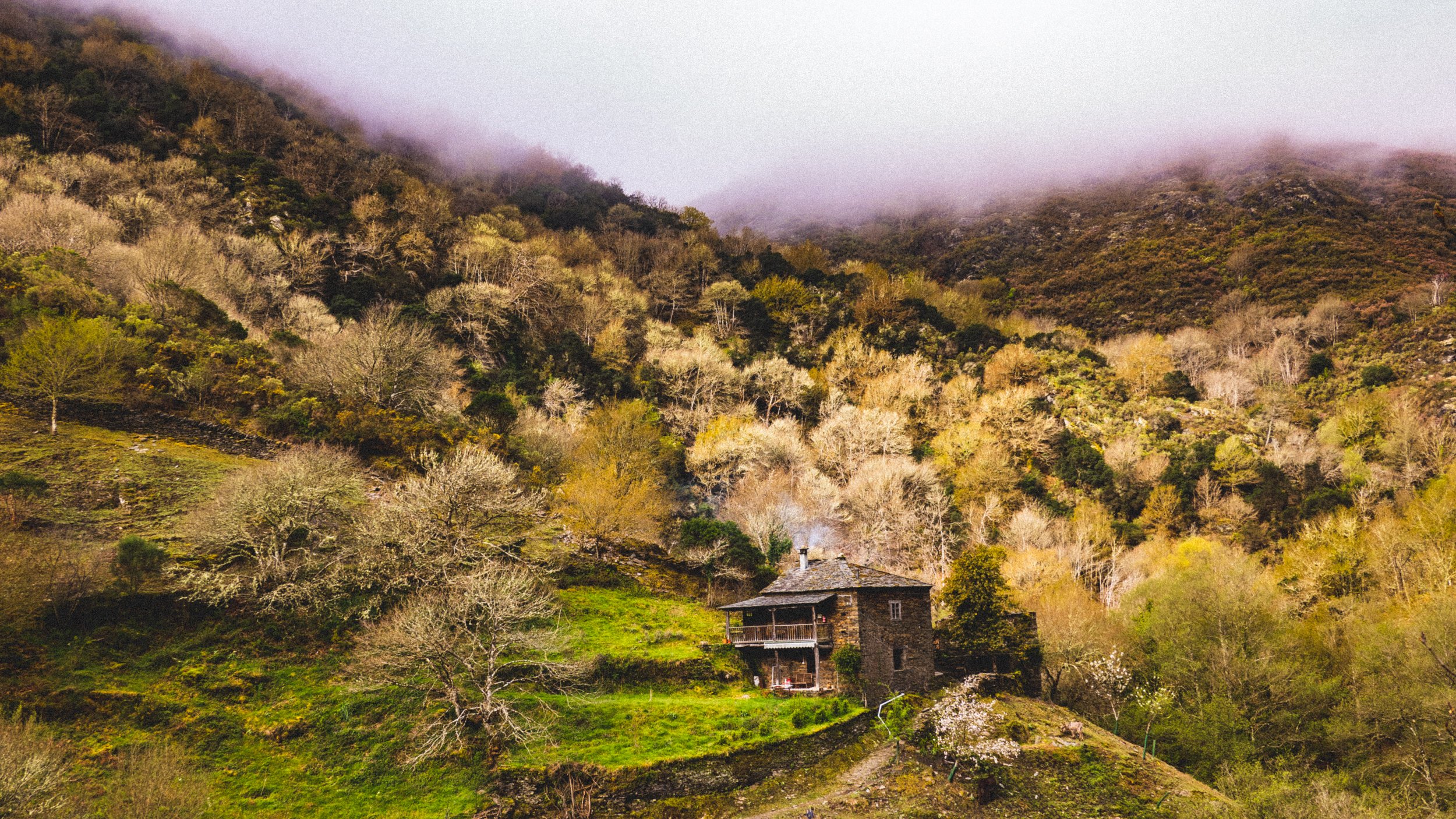Adrift in Scandinavia
ADRIFT IN SCANDINAVIA
A 6.000 kilometer family trip through Sweden and Norway
All Photos & Text Copyright Niko Caignie, translation Jasper Kuylen.
THE PREPARATION
In short: non-existent.
The more elaborate story of this trip’s preparation starts somewhere early this year, when we realized we didn’t have any plans for the summer break. To be entirely honest, we’re not the most thorough planners ever: the more you plan ahead, the more you’re stuck to a schedule.
Our demands were simple: nature, something manageable with kids, enough variation and we wanted to be on the road. We needed freedom and lots of time for each other and our children. Being on the road was important for us as well. Our most memorable experiences are encounters and discoveries that happened during unplanned stops. We wanted to try overlanding: driving around between two set points and experiencing as much as possible in between. As for spending the night, we would take our chances: camping in the wild or at a camping site, staying at a lodge,…
What we as a couple value a lot, is reaching the more inaccessible spots. Which turned out to be not that hard, since we’re both nature lovers. We avoided all ready-made tourist highlights and went off the beaten path, looking for the unknown. And by not planning too much, you automatically rule out most tourist spots anyway.
We’ve been camping for quite some years, avoiding as much camping sites as we can. We’re not too fond of the classic camping site vibe. Looking for a nice place, asking rangers, farmers or landowners if we could stay on their property,… This always results in amazing views, peace and quiet, adventures and a boundless playing ground for the kids. However, traveling like this demands a certain level of organization, ‘cause you have to bring everything yourself: water, food, a toilet (which is just a shovel and some toilet paper) … Luckily, we got the skills to pull this off. We’re a self-sustaining unit. We can live for four days before we need to refill water and charge the fridge’s battery.
So we knew we could travel completely independent, but we didn’t know where we wanted to go. Scotland’s been on the top of our list for some time, but due to a midge warning, we decided to postpone that trip to fall or spring. Our thoughts wandered off to Sweden and Norway.
Sweden appealed because of its many lakes, endless forests and the fact that camping in the wild is allowed. It also seemed fun to get there: vast and desolate landscapes and the bridge connecting Copenhagen and Malmö were on our checklist as well. But staying in Sweden for an entire month might be a bit too much. What if we didn’t like it there? So we decided to drop by Norway as well. My parents took me there when I was a kid and it’s still the prettiest country in the world.
Initially we wanted to drive around the Bothnian Sea and return home through Finland and the Baltic states. But that would’ve been a 9.000 kilometer trip, which is a bit much with two kids in the backseat. That’s something for later…
Sweden and Norway. One month. Something we were really looking forward to. But how were we going to do this? It would be the first time we were going to be on the road for an entire month and we didn’t know how the kids would react. So we decided to plan two stops where we could take a break. The first one would be at a stuga at Nöbbele, Sweden, at a beautiful lake. Three weeks later we would catch a breath at Myrkdalen, Norway. Everything between Nöbbele and Myrkdalen would be a mystery. We would go camping and stick to little local roads only.
THE MATERIAL
For some of you this might be a bit boring, for others something to get excited about. I clearly belong to that last group. But camping still is about choosing the right equipment. You can’t underestimate the importance of having a good tent, a decent cooking fire, shelter for rainy days, a water supply and something to keep your food cool and fresh – you don’t want to be running to the store every other day. I’ll try to keep it short, but I can assure you: I’ve given the stuff I needed some serious thought.
Usually we go camping with a big tent, easily weighing 35 kilos. But for this trip, I wasn’t too keen on breaking this thing down and setting it up again every day. Setting up only takes about 30 minutes, but it’s arranging everything inside which takes up a lot of time: air matrasses, sleeping bags, clothing, teddy bears, blankets,… After some research I found a really compact tent which could be set up and taken down in no time.
The big advantage of this tent was that it already had built-in air matrasses (decent ones) and you could leave your sleeping bags inside. Just roll up the tent, tie it to the roof of the car and you’re ready. It only took me 20 minutes to set everything up and break it down again. So I bought two of these tents. Together they still weighed 30 kilos, but since they came as a ready-made package, adding them to our set-up was a no-brainer.
I took some time thinking about a roof top tent as well, but you would have to tear down you accommodations every time you would need the car. Which, I figured, would limit our freedom.
Furthermore I wanted to keep all of our equipment as close as possible. Everything we would need had to be at close range. We didn’t want to unload the entire car for a pack of milk or some soap. We had two bags filled with clothes for the four of us, stuffed at one side of the trunk. On the other side we stacked four crates, two by two, with the essentials: food, medication, toiletries,… We placed the fridge in the middle, with all of our water right behind it. On the inside of the roof we placed an extendable table and an extra battery for the fridge. If you’d be parked for three days, the fridge would soak all the life out of your car’s battery.
Everything else we placed on the roof: the tents, a box with shoes, chairs, coats, cooking fire, backpacks and a crate filled with emergency supplies. We never needed the latter for ourselves, but did take it down to help out others on the road. Important as well!
On the road!
Finally we were on the road. Enjoying being on the road is very important for this type of traveling. While crossing Belgium and the Netherlands, you’re still in transition. But once you’re past Hamburg, the landscape changes and by the time you’re in Denmark, you’re in a completely different world.
The Öresund bridge was one of the first highlights of our trip. I was moved, driving across this ingenious construction, 57 meters above the sea. From one continent to the other. Wondering how people managed to get over this endless patch of water before this bridge was built: taking the ferry, taking the long way home – through the Baltic states,… A few weeks later, I would’ve preferred that the bridge was never there to begin with.
You can follow our entire trip on the map below. I marked some highlights in every country.
SWEDEN
Sweden was everything I expected it to be. And more. Once you crossed the Öresund bridge and turn to central South Sweden, you start getting the picture. The highways you’ve been following from Belgium to Denmark disappear. Most roads have no more than one or two lanes. The roads probably look different when you get closer to the big cities, but we stayed clear from civilization.
Once you get to the midland, you’re driving one lane roads or gravel roads. Maximum speed: 80 kilometers an hour. You get about 100 kilometers of fields and slightly sloping landscapes to get used to this. And then you enter the big forest that’s called Sweden. Endless forests of coniferous forest with patches of birch. I remember thinking for the first time: “what a desolate landscape”. Every 20 kilometers you’d bump into a village, sometimes only a handful of lodges big. But all of this didn’t even come close to what we would see in Central Sweden.
The only thing that disturbed the sea of trees was the water of thousands of lakes. Suddenly all trees would disappear and you’d find yourself in front of a lake, stretching out for dozens of kilometers. We were impressed by the number of lakes – over 100.000, the Swedish claim – and their size. We would often tell each other “oh look, that’s a pretty house on the side of that lil’ lake”. On which the GPS would tell us we were located in a small corner of a wayward shaped lake, stretching out for kilometers.
Those lakes also provide you with a wide view on your surroundings. Because those trees, especially in the flat South, can give you a claustrophobic feeling. And besides the fact that the Swedish lakes make for a stunning sunset, they don’t get too deep too soon. Which makes them perfect for children to play or swim in.
The first three weeks of our trip, our kids played in a lake every day. Swimming, trying to catch fish, screaming because the water was cold and laughing because they had so much fun. Something we, as parents, were very grateful for. This gave us the time to set up the tents, prepare food or just to relax and enjoy the moment.
Quick side-note, though: the circumstances we visited Sweden in, were exceptional. We felt privileged, but at the same time we witnessed how merciless nature can be. Sweden hadn’t seen any rain for almost two months. The average temperature was 28 degrees Celsius and everything was as dry as a desert. On a very rare occasion some raindrops would fall from the sky, but they evaporated before they touched the ground. Perfect circumstances for us travelers. Especially if you get to choose from 10 lakes to swim in every day. Not so perfect for the locals who fell victim to re-occurring forest fires. Even we got out lucky. Twice.
Next to its many lakes and indescribable beautiful nature, Sweden is the perfect country to wander around. Do bring along a GPS or a decent navigation app, so you can wander without getting lost. The Swedish road network is one of a few main roads which will take you into the different wind directions, but all other roads are – even if they’re really beautiful – sand and gravel roads. In all sizes and shapes, but always in a perfect state. Going straight for miles, meandering, hilly,… the closer you get to the North, the prettier they get. For someone who drives a 4x4, like me, this is a dream. In Belgium you’ve got look for hours before you find a road that’s slightly challenging. And most of the time these roads are private property or simply closed for traffic. Understandably, if you got so little nature in your country. But as for Sweden, that’s a different story.
In Sweden there’s no Kalmthoutse Heideor Sonian Forest. Not even a forest the size of the province of Antwerp. But Sweden is one big forest. When you leave the main road, you’ll be eating dust for miles – which you’ll notice when you brake or open your trunk.
Sweden is the opposite of Belgium. In Sweden you need to drive for two hours before you meet a living soul. In Belgium you have to drive for two hours to not meet a living soul and find some nature.
However, when we returned from Norway to Copenhagen, we discovered the equivalent of the Autoroute du Soleil. Camping sites everywhere. Tourist settlements. Maybe we got triggered because we came from nature and peace and quiet. Or maybe because we’ve always been allergic to these kind of places. So we skipped these spots and didn’t stop until we had driven past all of them.
Nöbbele, Vaxjö
Nöbbele was our first stop. At a little stuga at the Rottnen lake. Yes, it sounds very inviting, I know.
The nearest decent road to the stuga was about 10 kilometers away, the closest village 20 kilometers. This was our first encounter with Sweden’s vastness, gravel roads and forests. As well as with a Swedish lake and the concept of a stuga.
Before this trip we used to rent out cabins or lodges with a set of basic facilities: running warm water, electricity, a toilet. None of these thing were present at this original stuga. Since it was built, the stuga was left unchanged for about 80 percent. Old furniture. Candles to lighten up the room when evening fell. On the top floor we found the bedrooms. But these were so covered in dust that all four of us slept in the bed on the ground level. We with our heads on side of the bed, our kids facing the other side. And to be honest: we all thought it was the coziest thing ever.
The stuga had a kitchen with a gas powered fridge, but we kept on using the one in our car. The toilet was this little cabin, about 20 meters away from the house. It was nothing more than a wooden construction. A seat with a bag attached underneath, to catch everything that, well, was left behind. And a bucket of water to clean up if necessary. The shower was located outside as well, connected to this big water tank which also held the drinking water.
But the most important thing on this site was the path guiding us to our private beach at the lake. Private maybe sounds a bit too exclusive, since the lake was this big. During our time there, we only saw one boat sailing by. But in a country of 100.000 lakes, every lake feels private: you’re always alone. The first days of our holiday were spent at the lake: swimming, reading, fishing, taking little naps and once in a while taking a trip to the civilized world.
But we’re not the kind of people who like to stay put for too long. So the time came to start wandering through Sweden. Our overlanding adventure was beginning.
Without any preparation, we decided it would be fun to head out to Central Sweden. Making stops at Nora and Mora. In hindsight, not the best choice. These two villages turned out to be caravan hotspots. Few nice and quiet spots, mostly private areas. Which made it hard for us to go wild camping.
So after a few practical stops, we drove on to Jämtland. Once you get to this province, you feel the landscape changing. Even bigger forests. Less people. You could drive for hours without spotting a village. And when you would spot a village, it usually would not be bigger than a handful of houses, soon disappearing again behind the trees. On a rare occasion you would find yourself on top of a hill, above all trees, amazed by the endless view.
Camping Wildlife Sweden
We were looking for a place where we could stay for a couple of days and take a shower. Thanks to Liene’s excellent Google skills, we found Camping Wildlife Sweden. A small sized camping with just about 10 pitches, next to a clean mountain stream. One wooden lodge for the showers and toilet. The home of the camping’s owners. And a Dutch couple that decided to mix things up and took a fresh start in Sweden.
Never did I feel affection so soon for a place and its people. From the first moment on, all contact with Aafke and Marco felt right. After only thirty minutes, a warm and open conversation and some coffee, I realized these were extraordinary people. They experienced some setbacks, but decided to take matters in their own hands.
Back in the Netherlands, Aafke owned a restaurant. In Sweden, she treats everyone who comes knocking on her door to an amazing meal. Marco was focusing on experiencing nature. He organizes safaris to spot bears, wolves, beavers and wolverines. Small scale, with a lot of respect for the animals, nature and the environment. The idea was tempting. But to spot a bear, we had to stake out in a little shack for an entire night – something we weren’t up to, given we had “ADHD FC” in the backseat. And since we would encounter enough elk on our trip, we decided to hop in a canoe and embark on a beaver safari. It was breathtaking. We spotted beavers and saw them raise alarm by slapping their tails on the water. Equally amazing was how Marco’s fascination for the animals transformed him into a little boy. That guy was right where he had to be.
And so were we.
Maybe it was because we hadn’t met any people for over two weeks, or maybe because the right people flock together in the same place, but we’ll remember this encounter forever. Another couple with kids the same age as ours, was camping right next to us. Really fun and nice people. They were on a trip much alike ours, for the second time and better equipped. A few handy tips and tricks – amongst which an app to spot wild camping spots - made for some much welcomed information. Chats on material, the spots you visited and some small talk. Letting time pass by in the most lovely way.
Their kids turned out to be a perfect match with ours. They wandered around the farm for days: chasing chickens, collecting their eggs, fishing, swimming,… In short: we only saw them when we had to eat or drink and by bedtime.
Fun fact: this couple lives in a village next to ours. Funny how we had to travel 2.000 kilometers to get to know our neighbors.
Then there was another couple from the Netherlands. He was 87, she 80, but they were as fresh and cheerful as a newlywed couple. Being this healthy and brisk at that age is something I would choose for every day. After some small talk – very sincere, though – our conversations became deeper and more intense. As cheerful as they were, they had gone through some rough times. There was no more room in their lives for nonsense and keeping up appearance. Which made the conversations very open and sincere. We talked about friendships and loss, about work and raising kids, about life and death,… It resulted in an intense and heartfelt contact, which we really enjoyed.
This camping might’ve looked unremarkable for anyone else, but for us this was a highlight of our trip. Because of the people, the location and the timing.
On one of the rare occasions that it rained, lightning struck the nearby forest. At home, fire means being on the right place as soon as possible and putting it out. In the endless forests of Sweden, it gets a bit tougher to put out a fire. Especially in these remote areas. Because of the forests, you can’t really see where to go when you’re on the ground. And once you get there, the terrain might be impassable.
Thanks to my drone up in the air, I soon saw the fires were pretty close to our location. In the meantime, some faraway neighbors had made it to our spot. Some panicking, some awaiting the situation. The firefighters stayed at the edge of the gravel road. They couldn’t reach the fire with their trucks and hoses.
Eventually Marco took the hoses up the mountain with his six-wheeler. In the meantime, a chopper landed right next to us and was prepping to put out the fire with a water bag. I stood there looking, until the pilot called me over to help out. For the next four hours the chopper flew back and forth, emptying the water bag. Sometimes we even would feel some drops making it our way. After a while we got the comforting news that the fire was under control and there was no need to worry. Although we were leaving the next day, this meant we didn’t have to leave slap-bang.
Unfortunately we found out the next day that the camping site’s farm was in danger: the wind had turned and the flames were licking the edge of the site. Everybody got evacuated, including the farm’s owners. All the fire department could do, was prevent the building from going up in smoke. We were shocked.
The forest fires were slowly turning into a catastrophe. At their peak, there were 80 fires burning up around 25.000 hectares of forest.
After a few days, we got the news that Camping Wildlife Sweden had survived thanks to the effort of the fire department and the turning of the wind. But the surrounding forests were all down in ashes. On Facebook we spotted a relieved Marco trying to get things running again with a generator. Whew!
By then we were a few hundred kilometers away from the camping and farm, but we could still spot plumes of smoke. We were on guard. In the meantime, we were looking for nice spots to eat or stay the night. A few hundred kilometers further we set up our tent at a beautiful lake, facing North. This made for one of the prettiest sunsets of our trip. The kids played in the lake for hours while we enjoyed the view. Because we felt a bit lazy, we opened up a pack of dry food. Not the best meal, but since we found this amazing spot and felt this free, we couldn’t be bothered. Nothing beats camping in nature.
Once in a while some Swede would drop by, looking for a nice sunset or a dip in the lake. This old Swede in his old-timer stopped by and started chatting away. He couldn’t care whether I understood him or not. Sometimes I understood just the single word and nodded encouraging.
Suddenly he started pointing towards the forest and repeating “bär, bär, bär” with his thumbs up. I panicked. Had I set up our tent in a bears’ area? There are still living 3.200 bears in the wild, mainly in the Northern part of Sweden, but they’re being spotted more often in the South as well. After pointing some stuff out in a booklet, it turned out this old Swede just tried to tell me there were growing some sweet berries in the forest. What a relieve. By night fall we were alone again… no old Swedes or bears around.
One of these other magical places we stayed the night was Burusjön: a lake stretching out for three kilometers and with a width of 500 meters. Which is quite small in Sweden, but in Belgium a lake of this size would be big enough to build four Center Parks, twelve camping sites and seventeen burger restaurants around it. Luckily the Swedish think differently about that. This lake felt forgotten, along a small road, right before a sign announcing the Natural Park Städjan and Nipfjället and at the border with Norway. This was going to be our last stop before heading to West Norway. Looking for the best spot to set up our tent, we drove to the end of the road alongside the lake. We bumped into two other vans and stopped for a quick chat.
As we had seen so many times before, families set out together to discover nature, go camping, barbecuing or – as was the case with this family – to go fishing. A 50 year old son in cowboy outfit, with his 80 year old father. They both loved Western music. The bullhorns on their American van, the cowboy hat and the giant knife attached to his belt, were a bit of a giveaway. Our daughters couldn’t stop staring. The youngest kept pulling my sleeve: “Dad, that’s a cowboy!”.
They showed us pictures of festivals, music bands, more pictures and in between the father kept talking Swedish – his wife nodding in approval at his side. Their son managed to keep up translating while telling his own story at the same time. Nice, though superficial chats. A wonderful family that planned to fish all night long.
The next morning, at dawn, I woke up smelling something burning. I got out of the tent to check the side of the lake and in the distance I saw the same smoke plumes we saw earlier. Things didn’t look all too promising. I quickly woke up Liene and the girls and started packing. Twenty minutes later we were heading back to the fishing Swedish cowboys at the end of the road to warn them. They decided to await. All good, but we wanted to play safe.
On an empty stomach we got back on the road towards the natural park. We turned left the day before, so I decided to turn right this time. In hindsight this was a smart choice. The road took us all the way to the top of the area. A perfect spot to have breakfast. The burning smell and stress of earlier that morning were soon forgotten. Fresh coffee with such a view, that’s world class!
After building a tower of rocks on top of the mountain – in between the hundreds of others – our visit to Sweden and Nipfjället was blessed for eternity. Driving out of Sweden, some elk and reindeer presented themselves as our farewell committee.
Sweden left us firmly impressed. All our expectations of its nature and vastness got fulfilled. And more! And we still hadn’t seen all of it.
I got surprised by the Swedish as well. They had their reservations, but we had tons of amazing talks. Most of the time they would observe you and wait for the perfect time to introduce themselves. Nine out of ten they started on how cheerful our kids are or how organized my van was. From there one they would keep asking questions or start telling stories. What I noticed was how much they value family. Time and time again we would meet different generations discovering nature together, camping at a lake,… In Sweden, experiencing nature is something you do with your family.
I liked this Sweden a lot. I can’t wait to discover this country further up North.
Norway
For the second part of our trip, we went to Norway. We wanted to focus on experiencing nature: from one point on discovering our surroundings and living less nomadic. Out in the nature during day, enjoying the heath of a stove and reminiscing on our efforts and experiences during night.
We just had to find one or two spots to stay the night before we would get to our already booked cabin in Myrkdalen. A Swedish woman we met on top of the Nipjället, advised us to check out Røros, Norway. Around 180 kilometers away from Nipjället.
Soon the big lakes and trees would start disappearing and they’d make room for rounded mountaintops and a green, sloping landscape. We’d constantly find ourselves at the same height as the tree tops.
The GPS was still set to “Curvy Roads”, so after a firm 120 kilometers, we were sent over a gravel road for the last 60 kilometers… challenging, yet straight through the most beautiful nature. I had two giggling girls in the backseat - whose stomachs would tingle every time we’d hit a bump - and a happy wife next to me. Happy because of the view and the fact she took her pill against motion sickness in time. At some of these roads you’ll have to pay a fee or tax, which could be around 8 to 15 euros. A prize I gladly paid.
Just as the Swedish lady told us, Røros was a beautiful historic mining town, with those pretty typical buildings that were clearly transformed into a tourist attraction. But we were mainly interested in a decent meal, a Norwegian SIM card for Liene and a toilet which didn’t need digging.
After trying out the local pizza, we went back on the road to find a place where we could stay the night. We had been lying in the scorching sun for days, so we welcomed the cooler Norwegian weather with open arms. Even the rain. And after sleeping on the mattresses in our tents for ten days, we were looking forward to a real, decent bed as well.
So we set out looking for a cabin on a camping site: a stuga, or - preferably - a mountain lodge. Finding such a lodge would prove to be almost impossible. But stugas come in all sizes and shapes. At a camping site, a stuga would be a wooden cabin with two to four beds. The more authentic versions are mostly privately owned and rented out.
Vingelen
Once more Liene worked her magic and led us to the village of Vingelen. I rarely get involved. This is something she does best. I decide on the direction and distance I want to drive and Liene looks out for a nice, authentic, place to stay the night.
It was 4 pm, from time to time it started raining and no one at the site of Vingelen picked up their phone. I kept quiet and Liene said, still hopeful: “I truly believe we will find a place”. At 15 kilometers before we reached the site, we got a hold of Jan. Unfortunately he told us that everything at Vingelen was fully booked. Had we called him a week earlier, we would still be lucky – a fun fact we had no use for right now.
But Liene kept pushing. Maybe there was still a spot where we could set up our tent? Or even an old shed? Jan promised to check with some neighbors and to call us back in ten minutes.
Fifteen minutes later he called back and told us he had found something. His neighbors offered their cabin for a night or two, in return for a small fee. Happy as we were, we agreed in full faith. We’d meet at the church of Vingelen and Jan’s neighbor would take us to the cabin.
First to the church, shaking some hands and having a quick chat, then straight to the neighbor. He tried us out for a bit, trying to make out what kind of people he had in front of him. Our daughters slipped through our legs and made for the ideal conversation starter. Suddenly three girls of the same age slipped through the nice Norwegian’s legs as well. And as it happens, kids don’t need no language to have fun. Something we would notice again later on. We got into the car and headed for the cabin.
The cabin was located up in the mountains and the Norwegian told us “it has water and electricity”. The latter wasn’t always this evident, we learned in Sweden.
We crossed gravel roads, went into a natural park, paid taxes and zigzagged up the mountain. Once in a while we’d spot a cabin, but never in the direction we were heading for. Liene warned me not to expect too much of it. Usually a cabin is nothing more than just four beds.
We turned another corner and spotted some wooden constructions up the mountain. The wooden gate opened and our jaws dropped.
It seemed we had gone back in time. We were about to stay in a 200 year old lodge the family used to hunt during fall, ski during winter and hike during summer. Their own outhouse, 10 kilometers from where they lived.
We got a short tour around the site. We would stay at the big lodge. The little lodge was for the Norwegian’s daughters and the one further away was his mother’s – who actually owned all this; the family used to come here to let their cows graze for a few months.
The last two constructions were the toilet and the wood supply. Outside was a tap with spring water: “very tasty water and to wash in the morning” sounded the accompanying instructions.
Back to the “big” cabin. The door swung open and we literally went back in time. There were three rooms. One was a bedroom with and old bed box and one bunk bed – perfect to lay our pups to sleep. The little kitchen had a stove, a sink and an electrical fire. The living room was a cozy space of three by four meters, also featuring a stove, bed box, table and a couch. A weird mix of old furniture. It wasn’t hard to imagine spending the nicest winter evenings and summer nights here.
Actually, winter and summer nights aren’t that different if you use the stove every night.
All these elements from different times were completely our thing. Since I couldn’t fit in the bed box, I slept on the couch for three nights – better than the mattress in the tent, but less comfortable than in a normal bed. But I didn’t mind. We were looking for a bed to sleep, but we got a unique experience and another warm contact with locals instead.
I asked how long we could stay. “If you leave by Sunday it’s okay, but one night is fine as well”. Eventually we stayed for three nights. An unforgettable experience, but I’m getting ahead of myself.
Staying there was like staying in heaven. The only thing you’d hear was the deafening sound of silence, occasionally interrupted by the bells around the necks of the cows and sheep that were grazing either far up the mountain or right in front of our doorstep.
During the day we would live outside and by night we would light up the stove and get close together. We never had cold, from time to time it would rain or the wind would blow a bit harder, but mainly it was just cozy.
During the full two days we stayed here – two nights more than we originally planned – we also went for a full day hike in the natural park. Since we were staying inside the park, the hike would start as soon as we stepped out the front door.
We decided to follow a sign saying “Storbekkbua 4”. This could mean anything: from a 4 hour hike to a 4 kilometer hike up the mountain, into the valley, to the cow’s meeting point,… We had no idea. And we didn’t care. We’d know what the sign said when we got there. And if it was too far, we would just walk the same way back.
The big difference between this area and the rest of Norway is that the landscape here still was slightly sloping. The rest of the country, we would soon discover, is more rough, steep and brutal. This slightly sloping landscape was kind and green. Side note, though: we found ourselves at a height of 1.000 meters.
The “Storbekkbua 4” arrows eventually led us to a hikers’ cabin. The door was open, there was a guestbook, a little jar to leave some money and a wood supply. Everything in perfect shape. The hike to get there was amazing, but once we got at the cabin, we had no idea where to go next. So we had to get back the same way we got there. Usually I’m no fan of seeing the same stuff on the way back as before. But it turned out we had a completely different view, on different mountains and valleys. Only the rivers and crossing paths reminded us to the fact we’ve been there before.
We could’ve stayed for eternity at the cabin near Vingelen. Everything seemed to move slower. But it’s always a good idea to step out at your peak. After our hike we jumped in the car and descended to the village to get some supplies and notify our host that we would leave the next day. Once again, we were welcomed with open arms and lost ourselves in long conversations.
In the meantime our daughters had bonded with the Norwegian’s girls. They ran in and out the house, through the garden,… By the time we had to say goodbye, they were inseparable. We couldn’t understand the Norwegian girls, but by the tone in their voice we understood they begged their mother to join us for the last moments at the cabin. So we invited them over, which was fine by their parents. The youngest of the three girls stayed home and the other two would get picked up after an hour of two. It was lovely to see how language wasn’t a barrier for these kids. And the improvised English our daughters spoke was something else as well.
It was time to head to the last part of our journey. Myrkdalen in the West of Norway. No idea what we would find there, but it was close to Sognefjord. My parents took me there when I was twelve and the beauty of the nature always stayed with me. We didn’t plan on doing too much driving around at Myrkdalen. We wanted to focus on hiking, experiencing nature and the mountain views.
We left around 10 am and had around 530 kilometers to travel. Not the biggest distance. But when you’re travelling through mountains and winding valleys, such a trip easily takes up a dozen hours. We didn’t worry too much, though. If we couldn’t handle it anymore, we would set up our tent and continue the next day.
After a 200 kilometer drive, the landscape changed drastically. Steep mountainsides, which – as we could see from a distance – were even partly covered in snow. The excitement in the backseat went through the roof. After another 50 kilometers we saw the sign: Sognefjellet.
After our trip, I found out that this was the highest mountain pass in Europe and was listed amongst the five most beautiful routes in Europe. This pass connects the highlands we came from to the steep mountainsides and fjords we were heading to. We were constantly amazed. I had to pull over every 4 kilometers because the landscape got even more beautiful, better, more different,… Which didn’t result in a swift and speedy trip along the 120 kilometer long road.
Somewhere near the end of this stunning route, the GPS sent us back up the mountain. Another steep climb, which came just in time. During our last descent I started losing braking power and I could smell the car’s overheated brake discs. Time to cool things down…
At the last mountain we bumped into a small tollhouse. 8 euros for the effort to get there and we could start a 1.400 meter descent towards the first fjord. Fjords are basically see arms, loughs, so they lie at sea level.
Once we got down, it turned out I wasn’t the only one whose breaks were smoking. There were enough other cars parked along the road with their drivers reading manuals in the smell of burnt steel. But there it was, the first fjord. An immense mass of water, surround by nearly vertical mountainsides. Sea level and 1.000 meter high mountains in just one view.
By the time we got to the fjord it was already 6.30 pm and we still had to go 130 kilometers. We decided to go all the way and keep driving. Anyone who dislikes tunnels, might want to reconsider a road trip through Norway. We were surprised by the first one of 4 kilometers long. And the one after that, 6 kilometers long, directly followed by a 11 kilometer tunnel – straight through the mountain. But this still was peanuts. We still had to cross the Laerdal tunnel, a 25 kilometer long monster. The longest car tunnel in the world. Featuring some sweet parking lots, though.
This trip had already surprised us in so many nice ways. But our daughters couldn’t care less: it was time to get there. The tension in the backseat rose and started to spread to the front of the car.
Myrkdalen
3.500 kilometers travelled. Every two days looking for a new spot to set up the tent, cook, wash ourselves in a lake, river or at a tap. The time had come to take a break. Which we were going to do in Myrkdalen.
Things we looked forward to after three weeks of camping: a shower, warm water, a decent toilet, a cooking plate, a comfortable bed and a place where we didn’t have to leave right away. Especially not having to leave after just one night would bring some peace and quiet. Oh, and suddenly facing a mirror was a bit of a scare… at least for me!
Myrkdalen is a hamlet right between two fjords, halfway up the mountain. Not directly at the water, not on top of the mountain either. Our lodge was hidden in a forest with an amazing view on the opposite mountain range.
Not too far away was a big hotel with some ski lifts that operated during summer as well. In case tourists didn’t want to hike all the way up. This was something we had to get used to. We had just experienced complete freedom, suddenly we couldn’t just go where we wanted to. A slight bummer.
There was only one road in the valley and one road going up the mountain. Down in the valley the view stretched out along the endless fjord, surrounded by the steep mountain sides which appeared to rise straight out of the water. Once you got to the top of the mountain, you would have this incredibly stunning panoramic view on the entire area.
Everything between that top and the valley was either amazing or a bit ordinary. We had a nice view at our lodge, but on the other side of the mountain it felt like we were somewhere in Belgium’s Ardennes. This might sound like a strong statement, but coming from the open Swedish landscape, having traveled 500 kilometers through Norway, spotting the most amazing views, this place slightly disappointed us.
We always agree that if one of us doesn’t feel comfortable in a certain place, we leave and look for something else. But since we had booked this lodge before our trip, we decided to give it a go. A mistake we won’t make again.
Despite the narrow valleys, it was a true pleasure driving up in the mountains. The roads varied enough and after every corner lurked another surprise.
And sweating buckets because you had to turn the car for 180 degrees on a gravel road next to an abyss of 200 meters, felt like an adventure as well.
The lodge itself was beautiful. An old cabin, renovated by a passionate man. Perfectly organized for two people. But since the owners had two granddaughters themselves, they did take the presence of two kids into account. Luckily for us.
But we came to Myrkdalen to hike. Our first hike, Finnbunuten, was immediately one of this trip’s highlights. Literally and figuratively. The hike started at the ski lift and basically went straight up to the highest point of the area. It was marked as a hike doable with children. But no road marking and having to walk such a steep mountain side, proved to be a challenge for our daughters. Luckily someone had packed a GPS.
Halfway this hike we bumped into a family from around Kapellen. You guessed it: we started talking, our kids ran up the mountain and we hopped after them. It turned out to be a beautiful hike with amazing people. We stretched our time together until we were thrown out of the local restaurant. Another great encounter!
During the hike we also met a lot of Norwegian families. They all stopped for a talk, as withholding as they were nice, just like Swedes. Most of them lived at the coast or in a big city, had their own outhouse and came here primarily to hike or to engage in other outdoor sports. That’s how we learned that in this area everyone’s a tourist. The whole area consisted of agricultural land and all locals were farmers. By going up the mountain, we started to spot all these outhouses, at the most idyllic spots. Check. If we would ever return, we would stay the night in one of these.
We came to Norway to relax and enjoy the local nature. Despite the beautiful lodge at the terrible location, we really enjoyed our stay. Norway is – in every way – the opposite of neighboring Sweden. I was stoked I got to return to this country. Ever since I was 12 years old, I dreamed of returning to the Country of Fjords. I love the mountain air and the unpredictable weather. I don’t need blue skies and 30 degrees Celcius all year around, an uneven cloud cover makes me happier. Lighting a stove on a summer night scores 11 out of 10 on my cozy-scale. A day or two of rain can’t bother me either. It gave me the time to write this journal.
We chose Norway as the end of our journey, but it deserves better. Norway isn’t a place to close off. It’s a new start. We’ll be back. Different and soon!
This trip had many goals: enjoying each other, discovering new places, flexible travel and breaking out of our daily routines.
Because this journey was, in many ways, a first – a full month away from home, living in and around the car, having no plan, camping in the wild, traveling many kilometers, unknown territory – we decided on two safety points. One at the beginning of our holiday, a stuga in Sweden, and one at the end, a cabin in Norway. At the start of all this, we had no idea how our kids would react to this way of traveling and the intensity of it all.
In hindsight, these safety point weren’t necessary. You don’t need them at the beginning and the end of your trip. You need them along the way, to take a break and restock your supplies, to do the laundry and maybe visit a restaurant. The fixed locations also felt more like a limitation than an opportunity to rest. If we get tired of one place, we want to be able to leave immediately. Now we had already paid for our stay and felt like leaving would be a waste of money. On top of that: especially since we felt so free during the rest of our trip, these stops almost felt like an obligation. We soon realized we would never do this again.
The children, the children,… what an amazing children do we have! We brought an iPad full of movies - mainly Pippi Longstocking. The first drive, from Antwerp to Denmark, they watched them a lot. Afterwards, we decided to just put that stuff away. And, briefly forgetting about the rare request during the longest drives, we never heard of the iPad or the movies again. They learned to keep themselves busy during long drives. And yes, there were moments when I had to bite the steering wheel because things in the backseat went from laughing to fighting to nagging and back again. But for the better part of this trip, our daughters were a delight. They were truly amazed by the changing landscape and its beauty. The challenge to spot an elk also seemed to keep them busy for an hour…
I admire their flexibility as well. We changed locations every two days. So many new environments. And time and time again our girls went for it. Completely. Because what’s more fun than enjoying all these forests and lakes?
As for my equipment, I feel confident declaring we were perfectly prepared. The only real miscalculation I made was for the use of the tents. Basically, they’re high quality tents. But there’s a difference between sleeping in them for a night or two, or for three weeks. Mainly because it still took 45 minutes to set them up and break them down again. Setting up was only a 20 minute job, but by the time you took everything out of the van – or put everything back – you had wasted a bit more time. Especially after long drives and having to set up and break everything down for a few times in a row, things could get heavy. I now believe the solution is a roof top tent – yeah, the one thing I thought would limit our freedom. Anyway, this is something to be worked out. Being a gearhead, I’d be more than glad to do so. By the time we leave on next year’s trip, I will have a solution. Although the people who know me, also know I will have the answer by next week.
Another important realization, especially for me personally, was that it doesn’t really matter how you spend the night. It’s that flexibility which ensures variation and excitement on trips like these. We’ve been camping for three weeks and spent about a week and a half in lodges or cabins – of which two were planned and one was offered to us. I left on this journey with the idea we would be camping in the wild and every night at a camping site would be a failure. An idea I was able to lose along the way: you do what feels right and go with whatever comes your way. Your trip will be so much more varied.
During this month of traveling, we always left everything in the car: clothes, food, toiletries,… This enabled us to leave whenever we wanted and we didn’t lose any time organizing things when we arrived somewhere new.
Being self-employed, this trip was the first time in eleven years I took off from work for more than a week and a half. I was going to forget about work completely. This resulted in some panic attacks and nervous breakdowns in the weeks before we left. I was going to be bankrupt by the time we got back. Leaving work for a month… that was unthinkable.
But thanks to my other half’s rationality and some really good people taking care of my assignments and business, I embarked on this trip as relaxed as ever. Apart from a few practical Whatsapp-messages and the one phone call, I didn’t occupy myself with work. That relaxed feeling even kicked in really soon: after one week and a half I couldn’t remember which day we were and when we would leave to the next spot. I experienced this journey day by day, sometimes even hour by hour. Quite the achievement for an overly organized neurotic like myself!
By the end of our holiday I even wondered what our house back home looked like and I had forgotten the details of our living room… I just loved that state of mind.
But the most important thing on this trip was our time together, which we enjoyed immensely. We’re pretty close as a family and know each other through and through. So in terms of getting along, it was family life as usual: tons of loving moments and some fights between the kids on which we responded in our own way. Being on the road for this amount of time didn’t need any adjustment from anyone, which was really nice to realize. We simply enjoyed new stuff together. Each of us in his or her own way. While we were gazing at a breathtaking fjord, our girls would turn their backs to the water, admiring a kitten and delivering a live report on what the animal was doing. The urgent request to come take a look included. Every five seconds. I don’t like cats. But I do love my kids.
For some people this might’ve been standard, no big adventure at all. Maybe, within a few years, we’ll be one of those people. But making the switch from going on a holiday at one or two fixed places to moving around almost daily, without any plan or fixed destination, was an entirely new experience for our family. Let alone we had no clue how doable all of this would be with our two daughters.
So we leaped into the unknown. In hindsight, the only leap we could’ve made.
The number of memorable moments we lived, the people we met,… We’re still not over it. We will take that leap again…
Again next year. Different direction, another path, but with a roof top tent!

